

Plan Your Trip to Australia: 7 Top Itineraries
Written by Karen Hastings Updated Jul 26, 2022
Australia is a land of staggering contrasts spread out over a landmass almost as big as the continental US, so planning the perfect itinerary entails pinpointing your preferences. Coral reefs, islands, rainforests, and ravishing beaches rim the coast, and rugged canyons and red deserts of haunting beauty stretch across the interior.
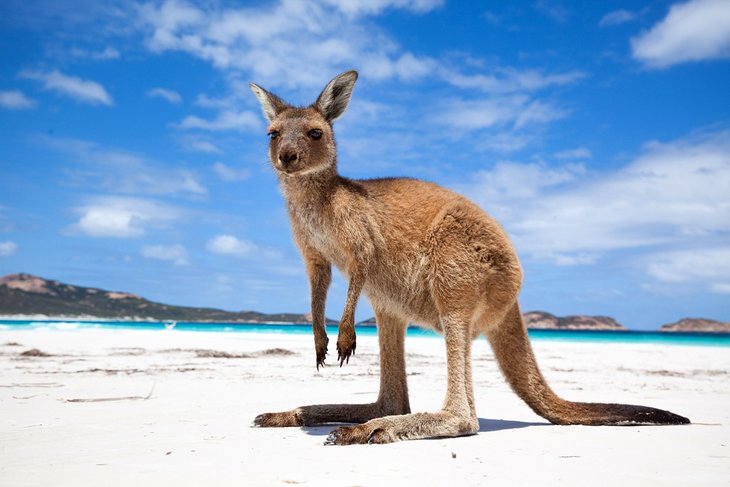
To get the most out of your visit to Australia, it's best to fly between the top places to visit and concentrate on a particular area of the country. If it's your first visit to the Land Down Under, you might want to start with a version of the top Australia itinerary on our trip planner: Sydney, Rainforest, & Reef, highlighting the east coast's most popular tourist attractions. Then, depending on your interests and time constraints, you can use the other Australia itineraries, organized by region, as building blocks to customize your adventures.
Travel to Australia can require some long flights — especially if you're visiting from the Northern Hemisphere. A week to 10 days is the minimum recommended time to visit Australia, as distances are vast, and jet lag can take a couple of days to pass. Note that if you're planning to see the highlights of both the east coast and the west coast, it takes about five hours to fly from Sydney to Perth.
Wherever and whenever you decide to go, Australia is one of the world's most rewarding places to visit, with spectacular scenery, incredible wildlife, and some of the friendliest people on the planet.
Plan your trip with these top Australia itineraries.
1. Sydney, Rainforest & Reef
2. the northern territory: the top end & the red centre, 3. queensland: the sunshine coast, fraser island, & the whitsunday islands, 4. melbourne and the great ocean road, 5. western australia: perth, coral reefs, broome, and the kimberley, 6. south australia: adelaide, the barossa & clare valleys, and kangaroo island, 7. tasmania: the apple isle loop, map of australia: top itineraries, when is the best time to visit australia.
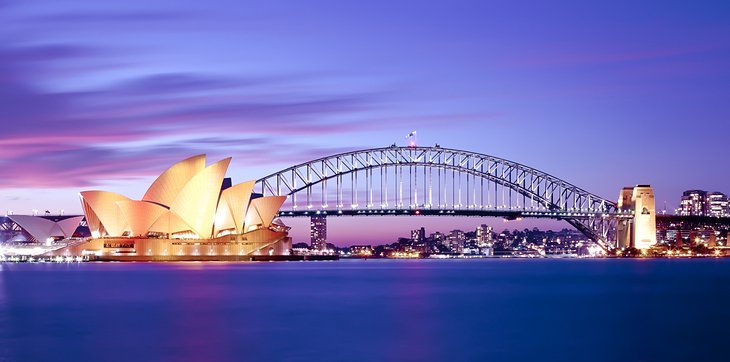
East Coast Itinerary Highlights : Sydney, Blue Mountains, Cairns/Port Douglas, Daintree Rainforest, Kuranda, the Great Barrier Reef
Visiting Australia for the first time? This itinerary is ideal if you only have about a week to 10 days to see the highlights. It offers a quintessential slice of the stunning east coast.
Start in Sydney and visit all the iconic attractions such as the Sydney Opera House , the Sydney Harbour Bridge , Bondi Beach , and the Rocks . After exploring the top attractions in the city , choose from an alluring line-up of day trips from Sydney . The Blue Mountains is one of the most popular.
From Sydney, fly up to Cairns , the most popular gateway to Far North Queensland's top tropical attractions, including the World Heritage-listed Great Barrier Reef and the Daintree Rainforest ; the quaint rainforest village of Kuranda ; and Cape Tribulation , where two of the world's richest ecosystems (rainforest and reef) merge in a sublime mingling of blues and greens.
Alternatively, you can base yourself in the sleepy tropical town of Port Douglas (about 60 minutes' drive north of Cairns). It lies a little closer to the reef, and charms visitors with its relaxed tropical feel and friendly locals. If you have more time, consider adding on some of the itineraries below.
Read More: Top-Rated Beaches in Sydney, Australia
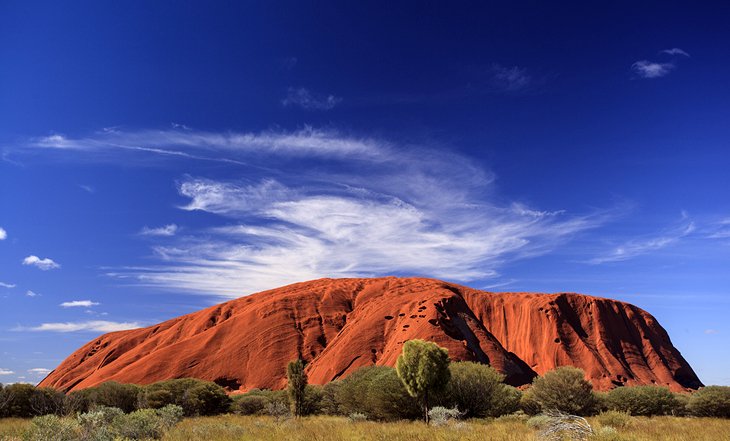
Northern Territory Itinerary Highlights : Darwin, Kakadu National Park, Nitmiluk National Park (Katherine Gorge), Alice Springs, Uluru-Kata Tjuta National Park, Watarrka National Park (Kings Canyon)
The Northern Territory offers a taste of the Australian Outback. Stark red deserts, magnificent rock formations, and spectacular wilderness areas are some of the top things to see here.
Fly into Darwin, the main gateway for the tropical Top End, as it's called in Australia. Stay a night or two here soaking up all the fun attraction in Darwin , such as the famous Mindil Beach Sunset Market , the Museum and Art Gallery of the Northern Territory , and Stokes Hill Wharf. Thrill seekers can cage-dive with saltwater crocodiles at Crocosaurus Cove .
From Darwin, rent a car and drive about 255 kilometers to World Heritage-listed Kakadu National Park , Australia's largest national park and one of the planet's most awe-inspiring wilderness areas. Take a Yellow Water or Guluyambi boat cruise to see crocodiles and water birds, or hike to ancient Aboriginal cave paintings.
From Kakadu, you can drive about 180 kilometers to Katherine Gorge in Nitmiluk National Park , with its series of 13 stunning steep-walled gorges. Explore the area on a scenic cruise, hike the trails, or paddle along the Katherine River in a kayak or canoe.
From the nearby town of Katherine, fly to Alice Springs in Australia's Red Centre. This is the gateway to Uluru-Kata Tjuta National Park , where Uluru (formerly Ayers Rock), one of Australia's top tourist attractions, rises 348 meters above the red-hued desert. About 40 kilometers from here, you can explore the dome-shaped rocks called Kata Tjuta (the Olgas).
If you have time, drive about 290 kilometers from Uluru-Kata Tjuta National Park to Watarrka National Park (Kings Canyon) for more breathtaking outback scenery and one of Australia's top hiking trails : Kings Canyon Rim Walk .
- Read More: Top-Rated Things to Do in Australia's Northern Territory
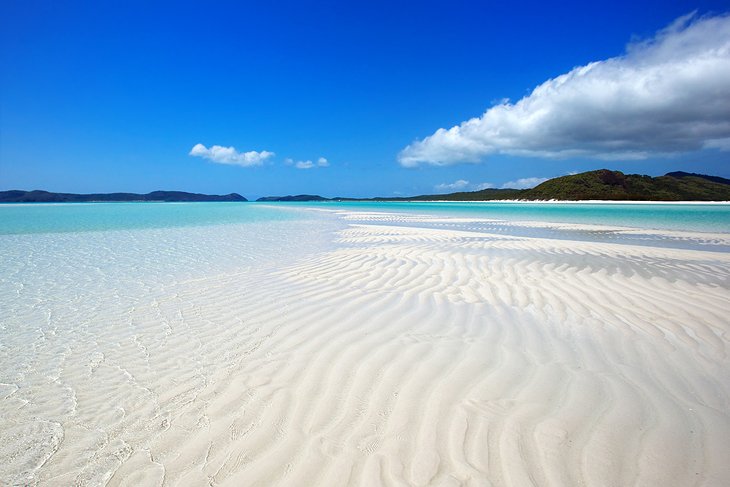
Central & Southeast Queensland Coastal Itinerary Highlights : Brisbane, Sunshine Coast, Fraser Island, Hervey Bay, Airlie Beach, the Whitsunday Islands
Sun, sea, sand, and sailing are the top attractions of this tour through Southeast and Central Queensland. Fly into the Sunshine Coast airport in Marcoola (one hour and 35 minutes flight time from Sydney), and explore some of the Sunshine Coast's surf-lapped beach towns and gorgeous beaches .
Soak up the scene with a stroll along the Mooloolaba Boardwalk, one of the top things to do in Mooloolaba ; surf some waves at Coolum Beach ; or bask on the beaches of Caloundra . Traveling on a budget? Take your pick from some of the best campgrounds on the Sunshine Coast .
If you're looking for a stylish base, stay in the beautiful beach resort of Noosa Heads . You can rest your head at some of the Sunshine Coast's top resorts. While you're here, hike through Noosa National Park ; spend an afternoon on magnificent Main Beach , swimming, surfing, or sunning; and stroll along Hastings Street , with its fantastic restaurants and boutique shops.
From Noosa, you can take day trips to explore all the top things to do on the Sunshine Coast . Save time, too, for a visit to the Sunshine Coast Hinterland. Here, you can visit cute country towns like Maleny and nearby Montville.
You can also join a tour to K'Gari (Fraser Island ), the world's largest sand island, or rent a 4WD and embark on a self-drive tour of this stunning UNESCO World Heritage site. Stay a night or two exploring the sparkling freshwater lakes, sweeping beaches, dunes, shipwrecks, and rainforests.
Hervey Bay , the gateway to Fraser Island, is also worth a visit. Whale watching is one of the most popular activities here, as well as fishing, sailing, and a range of other water sports.
From Marcoola, fly to Whitsunday Coast Airport in Proserpine (PPP). It's about 25 kilometers from Airlie Beach , the gateway to the idyllic Whitsunday Islands . From here, charter a boat and sail around these sun-soaked islands strung along the southern stretches of the Great Barrier Reef, or hop aboard a multi-island cruise.
Popular islands include family-friendly Daydream Island , Hamilton Island (the only Whitsunday island with its own airport), Long Island , and Hook Island . For a luxury island hideaway, hop aboard a helicopter to Hayman Island . With its silky soft silica sand, Whitehaven Beach is one of the top beaches in Australia and a must-see destination on your island-hopping adventure.
- Read More: Top Tourist Attractions in Queensland
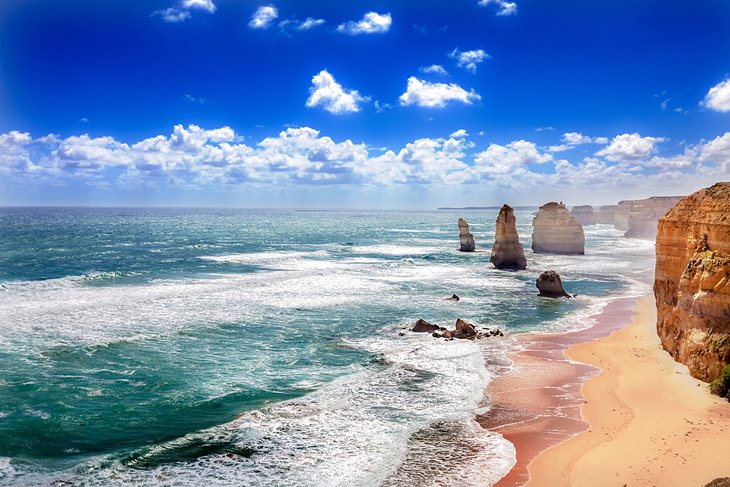
Victoria Itinerary Highlights : Melbourne, The Great Ocean Road, Phillip Island Penguin Parade, Mornington Peninsula, Grampians National Park, Wilsons Promontory, the Yarra Valley, and Dandenong Ranges
Australia's rugged south coast is home to one of the country's most staggeringly beautiful stretches of coastline. Fly into Melbourne, the vibrant capital of Victoria , and explore all the fantastic restaurants, shops, museums, galleries, and other attractions.
From here, you can choose from an adventure-filled list of Melbourne day trips . The most famous is a self-drive or guided tour along The Great Ocean Road , one of Australia's most breathtaking scenic drives. In Port Campbell National Park , gape at the Twelve Apostles , the wind-sculpted rock formations rising from the thrashing surf. Hike the Great Ocean Walk or, for a bird's-eye view, fly over the coast in a helicopter. In Torquay , surfers can ride the legendary swells of Bells Beach or visit the Australian National Surfing Museum .
In the hinterland, lush forests, zipline adventures, and treetop walking tours await. Other popular day trips from Melbourne include the Phillip Island Penguin Parade and the golden beaches of the Mornington Peninsula .
For fantastic hiking and bushland scenery, venture to Grampians National Park (260 kilometers from Melbourne), Wilsons Promontory (200 kilometers from Melbourne), or the Yarra Valley and the Dandenong Ranges (25 kilometers from Melbourne).
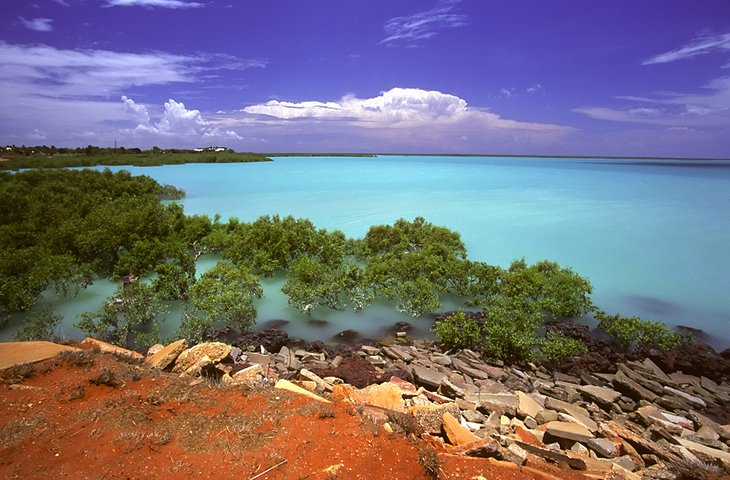
Western Australia Itinerary Highlights : Perth, the Margaret River, Ningaloo Reef, Broome, the Kimberley
About a five-hour flight from Australia's east coast, Western Australia is a wonderland of wilderness areas, wildlife, coral reefs, and beautiful beaches. This diverse and sparsely populated state is often overlooked by international travelers due to its distance from Sydney, but it delivers jaw-dropping beauty without the crowds.
Look at a map of Australia, and you'll see the ebullient state capital of Perth flung in the southwestern corner of this vast state. Start your tour here, and spend a day or two exploring all the attractions in the city .
Save time to venture out of the city, too. Day trips from Perth are particularly appealing. Take a cruise up the winding Swan River to the Swan Valley , or down river to Fremantle , Perth's vibrant port city. From Fremantle, you can also catch a ferry to ravishing Rottnest Island , rimmed by beautiful white-sand beaches and turquoise shallows.
Spend a few days at the Margaret River , about a three-hour drive from Perth. This prime grape-growing district offers great surf breaks, beautiful beaches, scenic coastal hikes, and a bounty of fresh produce and artisan foods.
After a taste of the city and surrounds, fly from Perth to Broome (flight time 2.5 hours) and ride a camel at sunset along the sweeping sands of Cable Beach . Want to get your heart pumping? Head to Horizontal Falls. One of Australia's top outdoor adventures , this exhilarating experience usually includes a seaplane flight over the falls and the rugged red cliffs of the northwest coast to Cape Leveque . Then you touch down for a succulent seafood lunch on the water, and a jet boat ride through the falls.
If you have more time, venture deep into the rugged Kimberley to see spectacular Purnululu (Bungle Bungle) National Park , a UNESCO World Heritage site, and Mitchell Falls, or plan a rugged 4WD adventure along the Gibb River Road . Return to Perth.
Still more time? Fly from Perth to Exmouth (a two-and-a-half-hour flight to Learmonth airport) and explore nearby World Heritage-listed Ningaloo Reef , the world's largest fringing reef. Easily accessible from shore, this rich ecosystem is famous for the whale sharks that swim here from March through October, and you can swim with these gentle giants on an organized tour.
With more than 500 species of fish and 300 species of coral, the marine reserve is also a prime diving, snorkeling, and fishing destination . From here, drive 50 minutes to Cape Range National Park with its red-hued gorges and rugged canyons.
- Read More: Top-Rated Tourist Attractions & Places to Visit in Western Australia
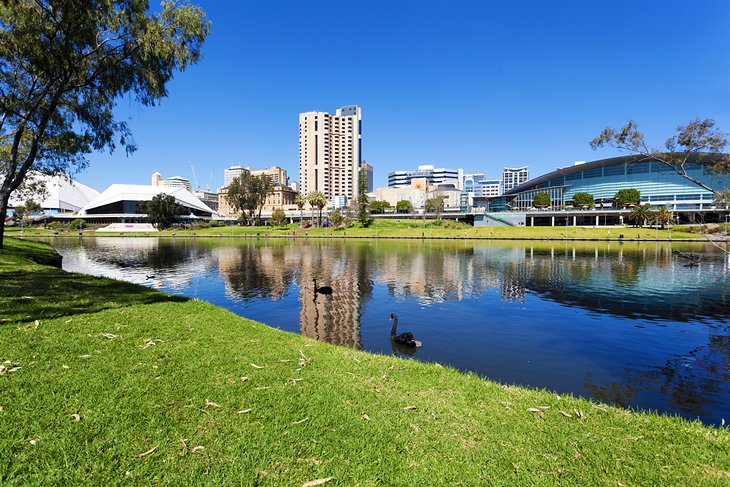
South Australia Itinerary Highlights : Adelaide, the Barossa & Clare Valleys, Kangaroo Island, Flinders Ranges National Park
Sophisticated yet refreshingly slow paced, Adelaide is one of Australia's underrated cities and the gateway to the top places to visit in South Australia .
Spend a day or two in this gracious state capital exploring the many museums, galleries, and gardens. Then rent a car and drive about an hour from the city to the beautiful Barossa Valley (about 60 kilometers north of Adelaide) and the Clare Valley . These fertile lands are prime grape-growing regions and favorite foodie destinations, thanks to their bounty of fresh produce and fantastic restaurants.
From Adelaide, you can also drive about 45 minutes south to the pretty Fleurieu Peninsula. This scenic region offers golden beaches, great surf, farms, and more fabulous restaurants.
From the Fleurieu Peninsula, catch a ferry to Kangaroo Island, one of the state's top tourist destinations. You can also fly here in about 30 minutes from Adelaide. The island is famous for its pristine beaches and abundant wildlife. Fresh local produce is also a highlight — among the many gourmet delights are fresh seafood, free-range eggs, and Ligurian honey.
Close-up wildlife viewing is one of the top things to do on Kangaroo Island . In addition to the island's namesake marsupials, you can also see koalas, seal lions, New Zealand fur seals, echidnas, penguins, whales, and many species of birds. Save time to visit Flinders Chase National Park, with its strangely contorted rock formations and scenic hiking trails, as well as the fascinating limestone caves of Kelly Hill Conservation Park .
If you have more time, consider adding a safari to your itinerary and plan a road trip to Flinders Ranges National Park. About a five-hour drive from Adelaide, it's a favorite haunt of artists and photographers who appreciate the rich hues of shifting light on the arid landscapes.
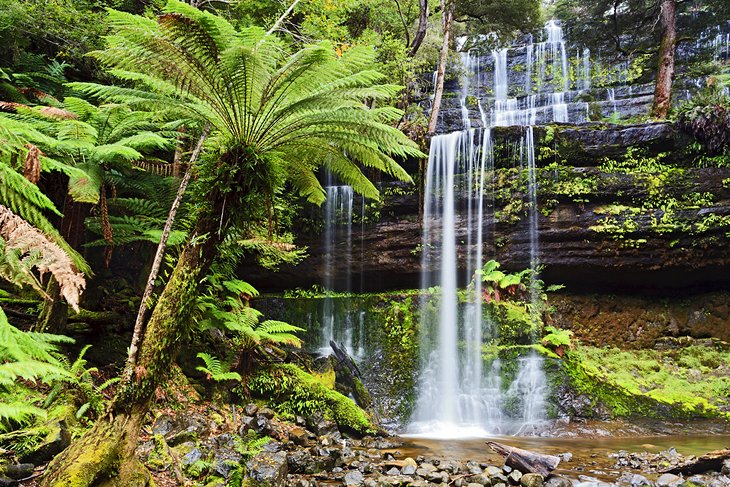
Highlights : Hobart, Port Arthur Historic Site, Freycinet National Park, Launceston, Cradle Mountain-Lake St. Clair National Park, Franklin-Gordon Wild Rivers National Park, Mount Field National Park
Tasmania (affectionately called "Tassie" by the Aussies) is a nirvana for nature lovers. The island is Australia's smallest state and an ideal destination for a self-drive tour. Almost half of its landmass is protected by national parks and World Heritage Areas, providing a pristine playground of wild rivers, misty peaks, lakes, and densely wooded forests. It's also called "the Apple Isle" because it was once one of the world's major apple producers.
Today, the state is famous for its fabulous fresh produce and artisan foods. No matter where you go, save time to savor some succulent seafood, fresh fruits, and creamy cheeses along the way. This loop through some of Tasmania's top attractions takes about five or six days plus a night or two in Hobart at each end.
Fly into Hobart, the state capital, and drive or hike to the top of kunanyi (Mount Wellington) for spectacular views over the city. Browse the shops and galleries at Salamanca Place and see cutting edge art at MONA.
After exploring Hobart , drive about an hour southeast of Hobart and tour the Port Arthur Historic Site , a former penal colony and one of the top things to do in Tasmania . After this sobering dose of convict history, explore the rugged sea cliffs and sheltered coves of nearby Tasman National Park . About 55 minutes from Hobart by car and ferry, Bruny Island is also worth a visit. Take a tasting tour of the island's gourmet treats and artisan produce, or explore the natural beauty of South Bruny National Park .
From Hobart, drive 2.5 hours northeast to World Heritage-listed Freycinet National Park for superb scenery and the perfect slice of white-sand beach at dazzling Wineglass Bay . You can explore the park on scenic drives and hiking trails — the Wineglass Bay Circuit is one of the top hikes in Australia .
From Freycinet National Park , drive about two hours to charming Launceston , Tasmania's second largest town. Here, you can admire the elegant Victorian architecture on heritage trails, visit beautiful Cataract Gorge, and tour World Heritage-listed country estates not far from the city.
From Launceston, drive south to Cradle Mountain-Lake St. Clair National Park and explore stunning landscapes featuring alpine heathland, glacier-carved crags, sparkling lakes, and ancient forests. From here, drive about two hours to Strahan , a great base to explore the Franklin-Gordon Wild Rivers National Park . Cruise along the Gordon River, or raft the whitewater rapids of the mighty Franklin River, one of Australia's top outdoor adventures.
From Strahan, drive 300 kilometers back to Hobart through Tasmania's World Heritage-listed wilderness areas. If you have time, stop by Mount Field National Park on the way. Hike the beautiful nature trails and see triple-tiered waterfalls.
The best time to visit Australia depends on where you want to go. To maximize your sightseeing, it's a good idea to avoid the tropics in the wet season (December to April), but every season offers unique experiences.
Winter (June through August) is a wonderful time to visit the Red Centre, when desert temperatures are milder during the day. Winter is also the dry season in Far North Queensland and the Whitsundays, which typically means sunny days and comfortable temperatures for swimming and island hopping. And of course, winter is a prime time to play in Australia's best ski resorts .
Summer (December through February) is a great time to visit the southern states, especially Tasmania. At this time of year, the warm, sunny days are perfect for basking on some of Australia's best beaches .
Planning to visit several destinations? Spring and autumn in Australia are usually good times to visit most parts of the country.
More Related Articles on PlanetWare.com
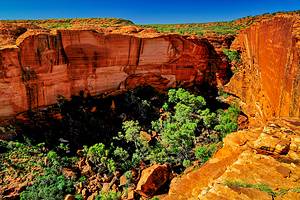
More Australia Travel Itinerary Ideas : If you're planning a trip around Australia and you're looking for some thrills, check out our article on the Top Outdoor Adventures in Australia , from snorkeling with whale sharks to four-wheel driving on the golden beaches of Fraser Island.
Anglers will find some fantastic fishing. Discover the top spots with our list of the best fishing destinations in Australia . You can fly fish for trout, hook a marlin, or cast to cobia on crystal-clear flats.
Is trekking more your style? Add some of the top hikes Down Under to your Australia itinerary. Tackle the rugged Kings Canyon Rim Walk in the Northern Territory or climb to the summit of Mount Kosciuszko, Australia's highest peak.

More on Australia
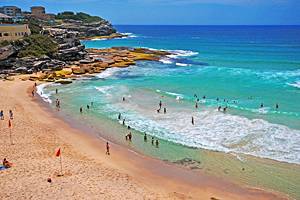
- Destinations
Wild Junket

Two Weeks in Australia: The Ultimate Itinerary for First-Time Visitors
Last Updated on March 11, 2024
Can you see anything with two weeks in Australia? Hell yeh! Here is the ultimate two-week Australia itinerary.
Let me start with the obvious: Australia is HUGE. It’s a country and a continent, almost as big as USA (not including Alaska).
Australia’s coastline stretches almost 50,000 kilometers and the country has a myriad of landscapes, ranging from tropical rainforests in the north to deserts in the center and mountains in the south.
Of the 130+ countries that I’ve been, Australia has to be one of the most diverse. I’ve traveled all over Australia (on five trips in total), exploring the Top End, South Australia, Sunshine Coast, and Tasmania. For those who have limited time, I’ve compiled the perfect two-week Australia itinerary and guide.

Table of Contents
Visas for Australia
Travel insurance for australia, how to get to australia, travel australia independently or on guided tours, when to travel australia, cost of travel in australia, the ultimate two-week itinerary in australia, days 1-2: explore the vibrant city of sydney, where to stay in sydney, day 3: day trip to the blue mountains, day 4: wander around the colonial city of melbourne, where to stay in melbourne:, day 5: day trip to phillip island, day 6: day trip to the great ocean road, days 7-8: soak up the sun in cairns, where to stay in cairns:, day 9: day trip to the great barrier reef, day 10: day trip to daintree and cape tribulation, day 11: get to know alice springs, where to stay in alice springs:, day 12: camping trip in uluru, days 13-14: camping trip in kings canyon, day 15: fly back to sydney, victoria & tasmania: for a mix of everything.
- Northern Territory: For Adventure Seekers (my favorite!)
Western Australia: For Family-Friendly Adventures
Queensland: for underwater lovers, travel resources, two weeks in australia.
Australia has a strict visa rule in that every non-citizen must have a visa to enter the country, except for citizens of New Zealand .
Citizens of EU member countries need to obtain an eVisitor visa online before arriving in Australia. This is a free visa for multiple visits to Australia for up to three months at a time within a 12-month period. Apply here.
Citizens of Singapore, Malaysia, Japan, US, UK and Canada can get an Electronic Travel Authority (ETA) online as well. The official website to apply for the ETA is here . It costs AU$20.

It’s important to have travel insurance, regardless of whether you’re in Australia for 2 weeks or 2 months. Travel insurance covers any expenses you might have to fork out for flight delay, trip cancellation, loss of baggage and even accidents.
Safety Wing is the most popular travel insurance company for COVID19-coverage. I use their Nomad Insurance plan , which covers COVID-19 as any other illness as long as it was not contracted before your coverage start date. Refer to my travel insurance guide for more details.
The most popular international airport to fly in and out of is the Sydney International Airport.
There are direct flights from Los Angeles LAX to Sydney for under $1000 return and from London Heathrow to Sydney for around 600GBP.
I also recommend making a stopover in Dubai or Singapore to break down your journey to Australia. Many airlines don’t charge an extra fee for the layover.
There are lots of budget airlines that fly from Asia to Australia for just US$200+ return.
Check for flights to Sydney here

How to Travel Around Australia
Since you’ve only got two weeks in Australia, the best way to travel around the country and see as much as possible is by domestic flight. Thankfully airfares to travel within Australia are affordable.
E.g. a flight from Sydney to Melbourne is US$100 return (you can get them as cheap as $50).
Here are the best budget airlines that can get you across Australia:
- Qantas — Australia’s national airline
- Virgin Australia — Affordable luxurious airline
- Jetstar Airways — Australian low-cost airline
- Tigerair Australia — Another budget airline with good deals
- Scoot — Singaporean low-cost airline with cheapest fares
Search for domestic flights here

Australia is most famous for its spectacular national parks and remote islands, and driving is the best way to see them. Renting a car in Australia will set you back at around US$70/day or $160 for a week.
Petrol is particularly expensive in the remote regions such as the Red Centre, at almost $2.80 per liter.
It is very easy to do road trips in Australia . There are road signs everywhere and they’re in English. The main thing you need to be careful about when driving in Australia is wildlife. Kangaroos often dash out to the roads especially at night, so be extra alert. Your best bet is to avoid driving at night.
Book Your Car Rental!

Backpackers with lots of time on their hands might prefer to take the bus around Australia. It’s the cheapest option and buses in Australia are comfortable and punctual. Greyhound Australia is the main coach service within this beautiful country. Book your bus tickets here to ensure availability.
You can choose from hop-on and hop-off passes which give you lots of flexibility. Choose your start and end points from the routes, and then enjoy three months to hop-on and off where you please. You have 90 days to complete your travel (or extend to 180 days for a nominal fee) and your first day of travel must commence within 12 months of purchase. You can get the bus passes here.
Australia is safe and easy to travel around on your own. My first trip there was when I was 17 and I backpacked around Australia with a group of friends without any difficulty or challenges.
If you prefer to travel with a group, check out this 15-Day Outback to the Top End tour with small-group operator G Adventures. I’ve traveled with them many times (to Mongolia, Antarctica, Brazil, Svalbard and Nepal) and can highly recommend them. Every single trip was epic and I’ve made some lifelong friendships on my trips with them.
Another alternative is to travel independently but go on day tours when necessary. You can find a wide range of day trips with prices and reviews at Viator. They have free cancellations and mobile vouchers which make it really convenient. We did a three-day camping trip in Uluru and it was the best experience we had in the whole of Australia.
Most day trips in Australia cost around US$100 and upwards. If you book them when you arrive, they’re more expensive at local travel agencies or hotels.

Australia is a huge country, so this really depends on which part of the country you’re planning to travel.
Keep in mind that Australia is in the southern hemisphere so the seasons are reversed to the northern hemisphere. Summer in Australia runs from December to February and winter goes from June to September.
For our ultimate itinerary below, December to February is the best time to take the trip. The weather will be warm and sunny and temperatures won’t go below 20°C (68°F).
However, it can get very hot in Alice Springs , Northern Territory, with average daytime temperatures around 32 to 36°C (90 to 97°F). This is also peak travel season in Australia so prices are higher.
Winter can be quite cold in Melbourne and Sydney, with temperatures dipping to 7 to 9°C (45 to 48°F). You’ll definitely need to pack warm clothing and a winter coat.

Prices in Australia are quite high, comparable to prices in the US and Western Europe. Expect to pay US$15-25 for a restaurant meal and at least $70 for a standard three-star hotel room.
Renting a car can set you back at around US$70/day or $160 for a week. Petrol is particularly expensive in the remote regions such as the Red Centre, at almost $2.80 per liter. Keep that extra cost in mind as well.
However, there are ways to travel on a budget in Australia. It is quite backpacker-friendly with a strong network of YHA hostels and inter-city bus services.
A bed in a YHA hostel is usually around $25-40 per night, and Greyhound buses are around $50-100 each way (book your flights early and you’ll pay almost the same).

Please keep in mind that this itinerary is designed to help those of you who want to get an overview of Australia in a short time.
The itinerary packs in a lot, so be prepared to be on the go a lot and to spend quite a bit on domestic flights and day trips.
I have included all my favorite states in the itinerary and what I think are the essential areas to explore in Australia. If you’d like to slow down a bit, I would suggest removing one state and extending your stay in the other three states.
Here’s an overview of where the itinerary covers:
- Sydney – 3 days (day-trip to the Blue Mountains)
- Melbourne – 4 days (day-trips to Phillip Island & Great Ocean Road)
- Cairns – 3 days (day-trips to Great Barrier Reef & Daintree)
- Alice Springs – 4 days (camping trip to Uluru and Kata Tjuta)

Sydney makes a great introduction to Australia, so make sure to spend at least two days exploring Australia’s biggest city. The multi-cultural city has a vibrant and lively flair, and the best places to get a sense of that are the Rocks district and Darling Harbour .
Head to Sydney Tower for a bird’s eye view of the city; you can even walk 250m (820 feet) above the ground on the Observation Deck. A must-see in Sydney is its most iconic landmark: the Sydney Opera House and the nearby Harbour Bridge. I recommend doing the Sydney Bridge Climb , where you get to climb up the Harbour Bridge with a harness and get fantastic 360-degree panoramas of the city from above. I did that when I was 18 years old and absolutely loved the thrill of it.
Sign up for a bike tour to see some highlights of Sydney or a food tour in Sydney’s historical quarters . Spend an afternoon surfing on Bondi Beach or just people watch at King’s Cross.
In the evening, go on a Sydney harbor sunset dinner cruise for an unforgettable experience.

Budget: Noah’s @ Bondi Beach
This backpackers’ hostel is just a two-minute walk from the surfing hotspot, Bondi beach. It’s got lively vibes, a social atmosphere, and affordable prices. There’s a rooftop BBQ area with unobstructed beach views. Book your stay here!
Another good budget option is Ibis Budget – St Peters, where we stayed at. It is cheaper than Noah’s and offers more privacy than a hostel does. Check the latest prices.
Midrange: Glenferrie Lodge
Housed in a charming historical building, this lodge has an excellent location right next to Sydney Harbour Bridge. It’s located in Kirribilli Wharf, where ferry services to Circular Quay and Sydney Opera House depart regularly. Kirribilli has a nice village atmosphere and lovely Victorian buildings. Book your stay here.
Luxury: Four Seasons Hotel Sydney
Boasting the best views of Sydney Harbour, Four Seasons is definitely a top choice for luxury travelers. It has a rooftop pool overlooking Sydney’s CBD and harbor-facing rooms all have spectacular water views. Check the latest rates here.

It’s time to head out to see Australia’s beautiful natural landscapes. An hour west of Sydney, the Blue Mountains is a stunning region with rugged cliffs, waterfalls, and eucalyptus trees.
Katoomba is the biggest town, located on the fringe of the Blue Mountains National Park and its bushwalking trails. For the best views of the famous Three Sisters rock formation, head to Echo Point.
I recommend renting a car for the day or booking a day trip . Each has its own advantage: renting a car gives you the freedom to explore at your own pace and allows you to seek out secret corners; booking a day tour is easier and you’ll an expert to show you the hiking trails and the best viewpoints.

Fly to Melbourne, my absolute favorite city in Australia. This multi-faceted city has gorgeous colonial Victorian architecture and a fun city beach. The 1.5-hour flight from Sydney to Melbourne costs around $30-50 one way.
Kick off your first day in Melbourne by hopping on the City Circle Tram that’s free for everyone. The historical tram travels through Melbourne’s central business district, specifically Flinders, La Trobe, and Victoria Streets.
Next, stroll through the historic Queen Victoria Market for some fresh Australian produce and arts and craft. Every Wednesday night between November and April, it also plays host to the Night Market.
Then head out to St Kilda, a coastal village just a tram ride away from the city. Here you can ride a paddle board or take a lesson , also explore the nightlife of this place. Luna Park Melbourne is free entry and it’s an excellent spot for families.

Budget: Melbourne Metro YHA
I stayed at this Melbourne YHA on my first trip to Australia when I was 17 and had a blast! It’s a fun and budget-friendly place perfect for those who want to mingle. Located on the city fringe, it has a rooftop terrace with panoramic views of Melbourne. Book your stay here!
Midrange: Hotel Causeway
Housed in an Art Deco building, this boutique hotel is just steps from bustling Bourke Street Mall and the restaurants of Swanston Street. Despite its prime location and good quality accommodation, prices are reasonable. Check the latest rates here.
Luxury: Grand Hyatt Melbourne
Easily the best hotel in Melbourne, Grand Hyatt is perfectly positioned on Collins Street in the heart of Melbourne. Rooms here have views of either Melbourne’s skyline or the Yarra River. It’s well worth checking out the signature restaurant Collins Kitchen, and its stylish, modern bar Ru-Co. Check the latest rates here.

Next day, rise early for a day trip to Phillip Island , home to the world’s largest fur seal colony. Located only 90 minutes from Melbourne, this wildlife island features impressive landscapes and an overload of Australian wildlife.
Visit the Penguin Parade at sunset, go whale-watching , see koalas at the Koala Conservation Centre, or go on an EcoBoat Tour. Don’t miss the Nobbies outcrop, where you’ll find the Australian fur seals.
I recommend booking this day trip as it includes hotel pickup and entrance to all the above-mentioned centers on Phillip Island. The tour leaves at 13:15 and gets you back to your hotel at 21:00 (from April to September) or 22:30 (from October to March).

For your last day in Victoria, head to the spectacular Great Ocean Road , one of Australia’s most visited destinations. This meandering road snakes its way along the dramatic coastline, revealing unique rock stacks and the lush rainforest of the Otway Ranges (home to quite a few wild koalas).
Driving along the Great Ocean Road makes for one of best road trips in Australia . With so much to see, the Great Ocean Road definitely merits more than one day to explore, but those tight on time will have to make do with a day trip .
From Melbourne, drive west to the start of the Great Ocean Road, passing the coastal towns of Lorne and Apollo Bay. You will also see the iconic Split Point Lighthouse .
Spend some time exploring the Shipwreck Coast and admiring the Loch Ard Gorge. The highlight of the Great Ocean Road is the 12 Apostles (twelve rock stacks rising from the waters). Descend the Gibson’s Steps to the beach, where you will get new perspectives of the enormous offshore stacks and cliffs.

Your next stop is Queensland, the sunshine state full of pristine beaches, castaway islands and miles upon miles of reef. Fly from Melbourne to Cairns for around $100 one way. It’s a 3.5-hour flight. Check for flights here.
Cairns is the liveliest city in Queensland and the gateway to the Great Barrier Reef. I recommend spending your first day on the beach and soaking up some sunshine.
Located on the Esplanade is the Lagoon, a lively area to swim and chill. On Sundays, the Lagoon also hosts live music on a temporary stage. Don’t miss the Saturday Esplanade market for local artwork and jewelry.
If you’ve got some extra time, head to the many swimming holes outside of Cairns. Fairy Falls and Crystal Cascades are only a 10-minute drive from Cairns. A bit further away is Ross and Locke where you can go tubing along the rapids – just watch out for crocodiles!

Budget: YAL Cairns
This well-priced budget hotel offers great value for money, with a nice swimming pool and a comfortable outdoor lounge area. All rooms come with air conditioning, microwave, fridge, and shower. This hostel is great for couples and backpackers who are traveling on a budget. Book your stay here!
Midrange: Palm Royale Cairns
Set amidst 2.5 acres of tropical gardens, Palm Royale is a surprisingly affordable resort with two gorgeous pools. The hotel is just a 10-minute drive from the city center. I would definitely stay here again on my next trip to Cairns. Check the latest rates here.
Luxury: Treetops Retreat Cairns
Perched on the treetops of the Crystal Cascades rainforest, this elegant yet rustic retreat is walking distance to swimming holes, hiking trails and waterfalls. The tree house has a spacious deck high in the canopy, with an outdoor pool and a private rainforest spa deck, perfect for star gazing. Check the latest rates here.

On your second day, take a catamaran sailing trip to the Great Barrier Reef for some snorkeling and sailing. The world’s largest coral reef system is made up of nearly 3000 individual reefs sprawled across an area of almost 135,000 square miles (350,000 square kilometers).
During the sailing trip , you’ll get to snorkel at two of 24 authorized reef locations depending on the day’s sea conditions. All of the sites offer exotic marine life like turtles and parrot fish. You’ll also get interpretation talks on board from experts about the reef.
Alternatively, book an eco-adventure day trip to Green Island , a private island resort in the Great Barrier Reef. The island also has a lush rainforest with over 120 native plant species and a rich bird life.
At just 45 minutes from Cairns, Green Island gives you the unique chance to do a combined reef and rainforest tour . . You can explore the island’s lush rainforest on foot, see the reef from the glass bottom boat, or snorkel off the beach.

For your last day in Queensland, head inland on an adventurous day trip to the Daintree Rainforests and Cape Tribulation . Daintree is Australia’s biggest tropical rainforest, and also the oldest rainforest on Earth at 135 million years old. Here you will find kingfishers, lorikeets, tree frogs, and entwining strangler figs.
By foot, walk through the Daintree and find the point where the rainforest meets the reef at Cape Tribulation. Ditch your hiking shoes and dip your feet in the white sand beaches.
Don’t miss Alexandra Lookout where you can get spectacular views of the Daintree River and the Coral Sea. Cruise along the Daintree River among rainforest jungles, mangroves, and crocodile-infested waters before returning to Cairns.

I have saved the best for last! Australia’s Red Centre is my favorite part of Australia and it’s where the raw and rugged Outback lies. Alice Springs is a small town and the gateway into the Red Centre. As low-cost airlines don’t fly there, airfares are slightly more expensive. A one-way flight from Cairns to Alice Springs costs around $200 on Qantas.
Just 7km outside of town is the Alice Springs Desert Park , a wildlife sanctuary and botanic garden. Standing at the base of the MacDonnell Ranges, the desert park is a beautiful nature park where kangaroos roam, birds fly overhead, and endangered bilby burrows underground.
You get to see unique Australian animals like the thorny devil, echidna, and bearded dragon. For an interesting experience, sign up for a guided night tour to see rare and endangered animals under the stars.
If you’ve got some extra cash, I recommend treating yourself to a hot air balloon flight in Alice Springs . From the air, the landscape looks different and you get a real sense of the magnitude of the desert. Flights usually take place at dawn so you might need an extra day for this excursion. Read about our experience on a hot air balloon flight in Alice Springs .
Book your hot air balloon flight here!

Budget: Alice Lodge Backpackers
Just 5 minutes’ walk from Alice Springs town center, this great hostel is the best budget place to stay in town. Rooms are clean and spacious, plus they have cheap private rooms. The outdoor swimming pool is a great area to hang out and they organize barbecue nights occasionally. Check the latest rates here.
Midrange: Diplomat Motel
We stayed at this well-priced hotel and highly recommend it to travelers seeking affordable comfort and convenience. It’s located in the center of Alice Springs, just a few minutes’ walk from stores and restaurants. We hung out at the swimming pool in the evening and had a barbecued dinner that night! Check the latest rates here.
Luxury: DoubleTree by Hilton Alice Springs
As one of the best hotels in town, DoubleTree by Hilton is a luxury resort awarded for its environmental-friendly ethos. The hotel has a beautiful setting, with the MacDonnell Ranges as a backdrop. All rooms have balconies that overlook either the mountains, swimming pool or gardens. Book your stay here!

For some real Australian Outback adventure, head into the Red Centre on a three-day camping tour of Uluru , Kings Canyon and the Kata Tjuta National Park.
This trip is power-packed and you’ll need a medium level of fitness for the walks. They are not technically difficult, but the high temperatures in summer can make them slightly challenging. Check out the trip details here.
You’ll travel around on a sturdy overland truck and your guide will prepare barbecued meals every day. Plus you get to sleep in cozy swags under the stars every night! We did this camping trip in 2013 and it was definitely THE best experience we had in Australia to date. Read about my experience here.

Next day, you’ll head straight to Kings Canyon for a three-hour hike through the sandstone domes of the Lost City. Admire the many natural amphitheaters and see the North and South walls on the way to the Garden of Eden.
The next day, take a guided walk in the Kata Tjuta or the Olgas and learn about the spiritual significance of the area.
Then visit the Aboriginal Cultural Center and listen to tales from the Tjukurpa Dreamtime. On the last day, watch the sun rise over Uluru, the world’s largest rock.
Do a base walk at Uluru to see beautiful Aboriginal cave paintings. You’ll get back to Alice Springs in the evening of the last day.
Book the camping trip here!

Sadly your trip has come to an end! Fly from Alice Springs to Sydney direct for around $150 one-way, just in time to catch your flight home.
Other Two-Week Itineraries in Australia
Because Australia is such a massive place, you could easily spend two weeks focusing on one particular state in Australia that fits your interest.
Consider what your interests are: do you prefer hiking in the outback or exploring cities? These itineraries will help you narrow down your focus and show you the best in one state. You’ll also save money as you won’t need to book domestic flights to get around.
Here are some examples of two-week itineraries in Australia:
Victoria is a micro-Australia, with dramatic coastlines, outstanding landscapes, wildlife-rich islands, and buzzing beach vibes. This state is great for road trips and a mixture of adventure, urban life, and relaxation.
Tasmania is an outstanding, scenic island that every nature lover needs to visit!
- Visit Melbourne and its Victorian buildings and markets
- Drive along the spectacular Great Ocean Road
- Go wine-tasting in Mornington Peninsula
- Take a day trip to Phillip Island to see penguins and the world’s largest fur seal colony
- Fly to Tasmania, a paradise for nature lovers
- Hike in the famous Cradle Mountain National Park
- Enjoy a wineglass bay cruise and visit its national park

Northern Territory : For Adventure Seekers (my favorite!)
This is where you’ll see the real Outback, where termite mounds rise above the rose red sand and Aboriginal artwork sprawl across ancient rocks. Adventure seekers would love this itinerary as it involves lots of hiking and camping in the deserts.
You can easily do a road trip from Darwin, driving from Australia’s Top End to the Red Centre and flying back from Alice Springs.
- Experience the tropical city of Darwin
- Swim with the mighty saltwater crocodile at Crocosaurus Cove
- Take the ferry to the Tiwi Islands to learn Aboriginal island culture
- Hike amongst waterfalls in Kakadu and Litchfield National Parks
- Camp in the Red Centre to explore Uluru and Kata Tjuta National Parks

Western Australia is the sunniest part of the country as it averages an annual eight hours of sunshine per day. This itinerary is great for families who are looking to get outdoors and experience Australia’s wildlife and beaches.
Read this two-week itinerary of Western Australia for more details or click the links below for day trip ideas.
- Explore the sunny capital of Perth: King’s Park, Cottesloe Beach, and Fremantle
- Take a day trip to Rottnest Island to bike around and see quokkas
- See koalas and kangaroos at Yanchep National Park
- Have a 4WD adventure in the Pinnacles and try sandboarding
- Wine-tasting in Margaret River

The sunshine state is more than just blue skies and never-ending beaches. With five World Heritage Listed sites and the world-famous Great Barrier Reef, Queensland is Australia’s favorite natural playground.
This itinerary is perfect for underwater enthusiasts and those who want to see the lush rainforests and pristine islands of Australia.
- Fly to Cairns, a modern coastal city
- Take a catamaran sailing trip to the Great Barrier Reef for some snorkeling
- Spend a few days on Green Island to dive and explore the coral life
- Explore the rainforests in Daintree and Cape Tribulation on 4WD
- Visit the Chillagoe caves and waterfalls
- Take a historic scenic train to the village of Kuranda nestled within a UNESCO forest

That’s a wrap! Hope you’ve found this Australia itinerary to be useful. Feel free to print it out and bring it with you on your trip. Any trip to Australia is an adventure and a trip of a lifetime. Enjoy the journey!
Over the years (and traveling to 140+ countries), I’ve learned a thing or two about travel planning. I’ve put together this list of travel resources that I personally use to find the best deals and book travel! For more details, check out my travel tips resource page .
- Booking Flights : Kayak is brilliant for finding the best dates to fly as it allows you to search for the lowest airfares within a 3-day period. Then I use Skyscanner as they’ve consistently given me the lowest airfares.
- Accommodations: I always use Booking.com to book hotels, mainly because of the flexible cancellation policy and good customer service. You can also find short-term rental apartments there (I prefer not to use Airbnb due to the extra charges).
- Travel Insurance: It’s important to have travel insurance, regardless of whether you’re traveling for a few days or months. Safety Wing is the most popular travel insurance company for COVID19-coverage. I use their Nomad Insurance plan , which covers any healthcare expenses I may have worldwide. Refer to my travel insurance guide for more details.
- Health Advice: I always refer to the travel guides on the CDC website for recommended medications and vaccines. You can get them at your travel doctor’s office or a walk-in pharmacy.
- Tours: If you’re looking for all-encompassing tours, I recommend small-group adventure tour outfitter, G Adventures . I’ve traveled with them to Antarctica, Mongolia, Svalbard, and Nepal, and loved every single trip. For day tours, I always book with Viator and GetYourGuide ; they have easy booking systems and free cancellations.
- Car Rental: I always book car rentals on Discover Cars , as they’ve consistently given us the best rates and customer service (with free cancellations). We’ve used them in Seychelles, South Africa, Spain, Peru, and Mexico.
- Transportation : Whenever possible, I book local transportation online using Bookaway and Busbud . They’re more reliable than many local transport websites and cover trains, buses, and car hire.
- Restaurants: TripAdvisor is my go-to resource for restaurant reviews and bookings. I also make restaurant reservations on OpenTable .
- Travel WiFi: I always travel with my Travel WiFi Sapphire 2 device; it’s the most convenient way to get internet data on the go. Instead of getting a local SIM card in every country I travel, I get an internet data package online and the device works immediately when I land.
Inspired? Pin it!

Nellie Huang
Nellie Huang is the founder of WildJunket. Originally from Singapore, Nellie has traveled to over 150 countries across 7 continents. She is a book author and Lonely Planet guidebook writer. As an adventure travel blogger, she has a special interest in unusual destinations and deep experiences. Follow her travels on her Facebook and Instagram .
Leave a Comment Cancel Comment
Save my name, email, and website in this browser for the next time I comment.
This site uses Akismet to reduce spam. Learn how your comment data is processed .
The Comments
I love this post so much – but it’s making me homesick!! I’ve just realised how little of my own country I’ve seen.
Andy Shuman
Excellent post, Nellie. It’s going to be helpful for my first trip to Australia when I finally get down to it. One thing though: Are you sure that Scoot can carry passengers on domestic flights in Australia. I’m quite sure that would be a violation of anti-cabotage rules.
hi Andy, good to know you find it useful! Yes Scoot does run domestic flights in Australia. I’ve just double checked. Scoot is a Singaporean budget airline – I flew them once to Taipei and they were really good. I’m not sure about the anti-cabotage rules though, sorry can’t be of much help there!
Stunning captures! In love with the blue mountains. Cheers!
Looks like an amazing place to explore. Loved it.
Jean-Robert Corvington
Hi Nellie! Great recommendations for our first trip to Australia. What if you only have 10-12 days and are flying out of Melbourne on the return? We are also wine lovers and would love at least a 1 night camping experience. We’ll be landing first in Sydney so we can easily follow the first part of the trip. What should we skip or add?
hi Jean-Robert! Thanks for dropping by! If you only have 10-12 days, I would recommend spending your time mostly in Sydney and Melbourne. There are loads to do in and around both cities. For wine lovers, I recommend checking out Yarra Valley near Melbourne, it’s a very popular place for Australians. You can also easily book an adventure/camping trip along the Great Ocean Road. Many people drive that, but you can also hike it and do short walks. Hope this helps!
good info. it just drive me crazy. that y i love to travel. travel more to see more. cant wait to visit Australia again. thanks. cheers!.
Gill Solnick
thanks this is a really exciting and helpful site. We are going to Sydney for a wedding and would love to find a sane itinerary for the old but adventurous.
Hi Nellie, what a great site! So lucky to see your recoms before my first trip to Australia in 3 weeks. I ll definitely do some day trips u recommended. I got days from 19/12/19 to 02/01/20. I was planning to stay in Sydney for 4 days and then flying to Melbourne and staying there for another 3-4 nights. Then I dont know where I should go for another 3 days and fly back to Sydney on 30th to see New Year fireworks. Any recommendation for me? Thank you so much.
Hey Joy, thanks for the comment! It depends on your interest. Check out the last part of my article. I share more 2-week itineraries based on your interests. If you’re into hiking and camping, then I definitely recommend the Red Center in Alice Springs.
Carol Bracey
Hello Nellie: Great information on Australia. Three fairly active seniors are planning a trip for about 15 days in April next year 2023. We love nature, wildlife, cultural adventures, and other non-strenuous experiences. Would you change or add anything in your recommendations for 2 week tours? Carol Bracey
hi Carol, thanks for dropping by! :) I have packed in ALOT to this itinerary. If you prefer to slow it down, I would suggest removing the Cairns (Queensland) part of the itinerary. The Uluru part of the trip is spectacular and it’s my favorite part of Australia, full of nature and interesting aboriginal interactions – but it would involve more hiking and strenuous activity. As long as you’re active and mobile, I think you’ll do just fine. Plus, you can sign up for a tour that doesn’t require camping or too much hiking to make things easier. Hope this helps!
Thank you but.. hiking compass in (almost) 2023? I wonder, what year was the original article written?
The original article was published 3 years ago. Many backcountry hikers prefer to rely on a hiking compass than phone because it never runs out of battery (unlike a phone) and is far more accurate.
Hi Nellie, thank you so much for the post!! I’m planning my first trip to Australia and this was super helpful. Do you happen to have any other recommendations for the 3 day camping trip to Uluru, Kings Canyon, and Kata Tjuta? The link you’ve provided didn’t lead to that tour. Thank you!!
hi Rachel, oh sorry the link is not working. I will update it. We actually traveled with Wayoutback Safaris on this tour . You can read about our experience here .
Thank you Nellie for this wonderful information. My husband, daughter and I are planning a trip in January 2025 and we were wondering about the 3 day camping trip alternative as well. The trip sounds so amazing however, the link does not appear to be the 3 day trip any longer.
hi Jo, sorry about that, I’ll update the link. I’ve sent some suggestions below. Hope you guys get to go on a camping trip at Uluru/Kata Tjuta. It was the highlight for us!
Thanks for the post. When I asked for advise on trip advisor they said the itinerary is too busy and can not enjoy all of above in 2 weeks.
Did you do all of this in 2 weeks? If you did, then its doable and I can do it too in last week of May/Early June.
Any alternatives to camping as I don’t like to sleep in tent. I like hotel rooms with out own restroom.
I don’t mind doing day trips to experience camping?
I don’t think there is nay place for Brisbane in this itinerary?
hi Sam, yes we did it in 2 weeks. It’s definitely pretty intense and if you’re the kind who like to chill and relax, it might not be for you. But if you like to pack your itinerary fully and see as much as possible, then it’s totally doable. There are definitely hotels and guest houses available in the outback, you don’t have to camp if you don’t want to. There’s no room for Brisbane I’m afraid; I went to Brisbane on a separate trip and had a great time in the Gold Coast but if it’s your first time in Australia, I think it’s ok to skip Brisbane.
Hi Nellie, We are looking to be in Australia in March. We have been told that Uluru and Alice Springs would be “buggy” – lots of flies. Additionally, I wondered whether we would be able to snorkel in the Great Barrier Reef at this time? Are my concerns overblown:?
You May Also Like
Paragliding in maui hawaii, heron island in the great barrier reef, best road trips in australia.

Ultimate AUSTRALIA Travel Guide
Australia is the World’s largest island and the smallest, flattest continent on Earth. It is located in the southern hemisphere just west of the international dateline. Our Australia Travel Guide is here to help take the guesswork out of planning your itinerary.
Officially part of Oceania , Australia is a diverse nation with stunning coastlines, more beaches than you could hope for, a desolate bush in the center and everything else in between.
We spent 8 weeks seeing Australia while we drove from Melbourne to Cairns , worked at a warmblood horse farm in Victoria and explored the humid city of Darwin.
The funny part, we had only planned to stay for 4 weeks. Australia sucks you in with the headline sights and keeps you wanting more with its diversity.
Destinations
Australia travel: quick tips, don’t visit australia without:.
GET A GUIDEBOOK

REUSABLE WATER BOTTLE

AUSTRALIA BUCKET LIST
Drive the great ocean road.
Heading west along the coast from Melbourne is one of Australia’s best drives, the Great Ocean Road . You’ll uncover the surfer culture, see plenty of wildlife and stare in wonder at places like the Twelve Apostles. Be sure to give it at least 2 nights.
DIVE THE GREAT BARRIER REEF
Heading underwater to explore the world’s largest barrier reef is almost a rite of passage when exploring Australia! The reef is accessible from Airlie Beach all the way up to Cairns and it’s possible to book diving trips for all levels.
BUSH CAMP ON FRASER ISLAND
While controlled camping is possible on Fraser Island, the best way to experience the island is by bush camping . Done with a permitted company, this will see you camping out in the wilds. It’s a refreshing adventure.
MORE THINGS TO TRY IN AUSTRALIA
There is no shortage of great things to do in Australia during your visit and the biggest problem you’ll face is fitting them all into your itinerary.
Each region has its own offering and unique things to check out during a visit, so be sure to look at our island guides once you decide where you’re itinerary will take you.
You could also consider a visit to Tasmania during your time in Australia, too. Right at the southern tip of Australia, the colder climes of Tasmania are perfect for anyone looking to travel to Australia and get off the beaten track. Take the ferry across from the mainland, or fly into Hobart – either way, you’ll quickly be immersed in the dramatic coastal scenery and wilderness of the interior. Visit the lakes of Cradle Mountain, hike to the top of Mount Wellington, explore the history and heritage of Port Arthur, and enjoy the cool weather and breezy atmosphere!
Plan your trip like a seasoned pro!
Popular regions in australia, new south wales.
New South Wales is the starting point for many first-time visitors who travel to Australia. This is where you’ll find Sydney , one of Australia’s most iconic destinations, as well as the stunning Blue Mountains and famous beaches such as Manly and Bondi. New South Wales is more than Sydney, though: you can road trip south to Jervis Bay , head north to Newcastle, Port Macquarie, and all the way to Byron Bay . Or you could head inland to the Australian Capital Territory and Canberra, or the tall peaks of Kosciuszko National Park.
Victoria is best known for its capital city, Melbourne , where you’ll find Australia’s quirkiest cafes, best coffee, and most intriguing galleries and museums. If you’re looking for culture when you travel, this is the destination for you. There’s more to see in Victoria though: you can road trip along the epic Great Ocean Road , see the penguins at Phillip Island, or hike through the wilderness of Wilsons Promontory.
Head north from New South Wales, and you can explore the tropical coastline of Queensland as part of your Australia travel itinerary. Start by relaxing on the Gold Coast beaches, where golden sands meet the city skyline spectacularly. Continue to Brisbane, one of the best cities in Australia. Here, you’ll find great bars and restaurants along the Southbank, the excellent Museum of Queensland, Lone Pine Koala Sanctuary, and much more. Keep heading north, and you’ll be able to visit the white sands of Fraser Island , the beautiful sandy islands of the Whitsundays, the Great Barrier Reef at Cairns, and the ancient Daintree Rainforest .
SOUTH AUSTRALIA
South Australia is home to both beautiful beaches and remote Outback scenery. It’s a great place to road trip and start a journey either east to Melbourne or north to Uluru. Adelaide is South Australia’s laidback and understated capital, home to wonderful botanical gardens and some interesting cultural museums and galleries. The Flinders Chase National Park has beautiful hiking opportunities, while the dusty, underground hotels and pubs of Coober Pedy are like nowhere else in the world.
NORTHERN TERRITORY
The Northern Territory is where you can find the iconic natural site of Uluru and the endless deserts of the Red Centre. This is the real Outback territory. Head to the far north, and you’ll discover a relatively understated part of the country in the tropical surrounds of Darwin . Visit the steaming hot jungles of Kakadu National Park, explore incredible canyons, see crashing waterfalls, and watch out for crocs in the rivers in this great addition to your Australia travel itinerary. If you seek adventure, you’ll want to head to NT.
WESTERN AUSTRALIA
Head west to explore the remote reaches of Western Australia. Start in Perth, the most remote capital city in the world, before heading south to the colorful wine region of Margaret River and the beaches and coastal scenery of Albany and Esperance. Or you could head north, traveling along the long coastal road to stop off at the Ningaloo Reef, where you might spot Whale Sharks, head inland to the gorges of Karijini National Park, and explore the sheer beauty of Broome and the Kimberleys.
AUSTRALIA TRAVEL BUDGET
Setting a budget for travel to Australia is highly dependent on your travel style. It is possible to visit just about anywhere in Australia on any budget and still have a great trip. That said, you can make your trip as basic or as luxurious as you desire.
To help you set your budget, we’ve included some base range price estimations for travel within Australia. Of course, keep in mind that prices can fluctuate based on seasons, availability and festivals.
ACCOMMODATION: Hostels will cost between AUD 20 and AUD 30 per night, although long-term backpackers can often organize deals on longer stays. Hotels will cost upwards of AUD 100 per night. Many travelers choose to rent a car and camp , which can lower accommodation costs dramatically.
FOOD: Eating out isn’t cheap in Australia. Even a meal in a pub or cafe will likely set you back at least AUD 20 per person, more if it’s an upmarket restaurant. You can stay in self-catering accommodation or cook on the beach barbecues to save on costs if road tripping.
TRANSPORTATION: Because of the vast distances between major destinations, you’ll need to plan your transport carefully as part of your Australia travel itinerary. The cheapest way to travel between cities is usually by flying budget airlines. Bus and train links exist on the east coast, and sporadically on the west, but are limited and costly. Many travelers prefer to arrange a car or campervan hire, which can be found for as little as AUD 50 per day.
ACTIVITIES: Activity costs vary – from free hiking in national parks and days spent lounging at the beach to expensive paid activities at famous destinations. Scuba diving will cost AUD 100 per dive, while a boat trip out to the Great Barrier Reef will cost a minimum of AUD 100 for the day from Cairns. A day tour of Fraser Island will cost AUD 150, while the Sydney Harbour Bridge Climb is a similar price.
75 AUD PER DAY
Staying in hostels, camping, and carpooling to get around, while mostly living off groceries from the supermarket. Make this AUD 100 to throw in the odd private room or day tour.
200 AUD PER DAY
Midrange travelers looking to stay in private accommodation, eat out regularly, and enjoy plenty of day tours will need to budget at least AUD 200 per day.
500 AUD + PER DAY
Travelers looking to enjoy the best restaurants, private tours, and upscale private hotels fit here. For this standard of vacation, you can expect to spend at least AUD 500 per day
WHERE TO STAY IN AUSTRALIA
Below you will find some of the places we have stayed during our travels in Australia. These are individual properties that we enjoyed and would recommend to other travelers.
HOW TO GET AROUND IN AUSTRALIA
Australia is a massive country so you definitely need to heed the warnings behind planned drive times and distances between cities. You’ll want to er on the side of a conservative plan unless you can be flexible and have unlimited time to explore.
The best ways to get around are by plane or car. If you can’t drive, you can often meet other travelers in hostels or online and pitch in for gasoline, or you could join an organized tour.
FLIGHTS: The quickest way to get around if you’re short on time is to fly between cities and rent a vehicle when you arrive at your destination. Most of Australia and Tasmania is well connected with flights.
BUS: Australia has an extensive Greyhound bus system that operates up the East Coast for travelers. If you don’t want to drive, this is a great option for getting around to the most popular areas of the country.
CAR RENTAL: If you have more time, the best way to experience Australia is to road trip. Rent a car or campervan and explore the many excellent road trip routes on the east and west coasts or down the middle! Check out Discover Rental Cars for great deals.
TRAIN: While there are a couple of popular and quite famous train routes in Australia, this is not a good way to rely on getting around. Connectivity between cities is limited and you’ll find that most train options are of the luxury variety.
TOP AUSTRALIA TOURS
Best of australia.
14 Days Cairns to Sydney Visits: Airlie Beach, Whitsundays, Brisbane, Byron Bay & Blue Mtns
MELBOURNE, OUTBACK & ULURU
12 Days Melbourne to Uluru Visits: Mornington, Port Campbell, Adelaide, Grampians & Uluru
EXPLORE AUSTRALIA-NAT GEO
12 Days Sydney to Melbourne Visits: Sydney, Cairns, Port Douglas, Uluru & Melbourne
WHEN TO VISIT AUSTRALIA
When you travel to Australia, don’t forget how vast this country is. Each region (and not just state) has its own climate, and some places are better to travel to at different times of the year.
Generally speaking, the further north you travel, the hotter and more humid it gets . Queensland and the north of WA have a tropical climate; you’ll want to visit in the dry season, between March and October.
Tasmania, Melbourne, Sydney, and Adelaide have a cooler climate and are best visited in summer when it’s hot!
ONE OF THE BEST PLACES TO SEE KANGAROOS!
Safety in australia.
Australia is a very safe country to visit in terms of crime; however, tourists need to be aware of the hazards that the harsh Australian climate might pose during their trip.
When planning an Australian travel itinerary, beware of the vast distances involved if you’re driving. Drivers also need to be aware of the dangers posed by animals, such as kangaroos bounding across the road.
Wildfires are common, particularly in summer, in rural areas. In tropical regions in the north, roads can quickly flood during storms and cyclones.
Travelers also need to be careful of poisonous snakes and spiders (although these rarely cause harm) as well as jellyfish and crocodiles in certain parts of the country (again, usually only a problem in the tropical north!).
Being informed and prepared is the best way to stay safe while traveling. Be sure to check out our safety tips & advice from more than 20 years of world travel.
AUSTRALIA TRAVEL: BOOKING RESOURCES
Australia travel guide: related articles.
Looking for more info? Check out all the articles we’ve written on travel to Australia and start planning your dream trip.
25 Top Things to Do in Australia (On Your First Visit!)
Ultimate east coast australia itinerary: best stops from melbourne to cairns, ultimate brisbane to cairns road trip itinerary, ultimate sydney to brisbane road trip itinerary, what to do in melbourne (30 melbourne attractions you cannot miss), ultimate sydney itinerary for 2 to 5 days, 15 things to do in jervis bay, australia, 15 unmissable things to do in airlie beach, ultimate sydney to melbourne road trip itinerary, 10 cool things to do in byron bay, 15 best things to do at the blue mountains national park in australia, daintree national park: best things to do & planning guide, is cape tribulation worth a visit, 11 best things to do in darwin, australia, are the atherton tablelands in queensland worth a visit, 28 great things to do in queensland, australia, 10 exciting things to do in cairns, 10 spectacular things to do on fraser island, 8 best stops on the great ocean road drive, backpacking in australia: 8 week recap & travel tips, getting goon ‘d in australia, should i rent a jucy campervan in australia, scuba diving on the great barrier reef: facing my fears, bush camping on fraser island (beware of the dingoes), how to visit the kangaroos in pebbly beach nsw.

Winter is here! Check out the winter wonderlands at these 5 amazing winter destinations in Montana
- Travel Destinations
- Australia & South Pacific
How To Plan An Australia Trip
Published: December 6, 2023
Modified: December 28, 2023
by Viki Wardell
- Plan Your Trip
- Travel Tips
Introduction
Planning a trip to Australia can be an exciting and fulfilling endeavor. Known for its stunning natural landscapes, diverse wildlife, vibrant cities, and unique culture, Australia offers an array of experiences for travelers of all interests. Whether you’re dreaming of exploring the iconic landmarks of Sydney, diving in the Great Barrier Reef, or immersing yourself in the rich Aboriginal heritage, this guide will provide you with the essential steps to plan an unforgettable trip to Australia.
Australia is a vast country, covering an area as wide as the United States, making it important to plan your visit carefully. With its diverse climate zones, it’s crucial to choose the right time to visit, taking into account the activities you want to do and the regions you wish to explore. This guide will help you navigate through the planning process, from deciding on the duration and budget of your trip to understanding the visa requirements and gathering the necessary travel documents.
Researching and planning your itinerary is another crucial step. Australia offers a multitude of attractions, from bustling cities like Melbourne and Sydney to breathtaking natural wonders such as the Great Ocean Road and Uluru. This guide will assist you in creating a well-rounded itinerary that suits your interests, ensuring you don’t miss out on any must-see destinations.
Once your itinerary is set, booking flights and accommodations should be the next priority. Whether you prefer luxury hotels, budget-friendly hostels, or unique camping experiences, Australia offers a wide range of options to suit every traveler’s preferences and budget. This guide will provide tips on finding the best deals and ensuring a comfortable stay throughout your trip.
Packing for your Australian adventure is also important to consider. From lightweight clothing suited for the country’s warm climate to appropriate gear for outdoor activities, this guide will help you pack the essentials for a comfortable and enjoyable trip.
Before embarking on your journey, it’s essential to have a basic understanding of Australian customs and culture. Being aware of local etiquette and customs will not only enhance your experience but also ensure you show respect to the local people and traditions. This guide will provide valuable insights into Australian culture and offer tips on how to interact respectfully with the locals.
Once you arrive in Australia, you’ll have the opportunity to explore its vibrant cities, iconic landmarks, and breathtaking natural wonders. This guide will take you on a virtual tour, offering highlights and recommendations for popular destinations such as Sydney, Melbourne, the Great Barrier Reef, and the Outback.
Australia is renowned for its unique wildlife and pristine nature. From cuddling koalas to spotting kangaroos in the wild or snorkeling with colorful fish in the Great Barrier Reef, this guide will help you make the most of your wildlife encounters and nature adventures.
Of course, no trip would be complete without indulging in the local cuisine. Australia offers a diverse culinary scene, blending multicultural influences with fresh local produce. This guide will introduce you to some iconic Australian dishes and local delights that you must try during your visit.
While exploring a new country is exciting, it’s important to prioritize safety and health. This guide will provide essential tips to stay safe and healthy during your trip to ensure a worry-free experience.
By following these steps and tips, you’ll be well-prepared to embark on a memorable adventure in Australia, creating lifelong memories and experiences. So let’s dive into the planning process and start preparing for an incredible journey Down Under!
Step 1: Choosing the Right Time to Visit
When planning a trip to Australia, it is crucial to consider the best time to visit based on your preferences and the activities you wish to engage in. Australia is located in the Southern Hemisphere, which means its seasons are the opposite of those in the Northern Hemisphere. The country’s diverse climate zones offer a range of weather patterns throughout the year, making it important to choose the right time to ensure an enjoyable and comfortable trip.
Summer in Australia lasts from December to February and is known for its warm temperatures and longer daylight hours. It is a popular time for beach activities and outdoor adventures, with coastal regions such as Queensland and New South Wales being particularly popular during this time. However, it’s important to note that summer is also the peak tourist season, which means popular attractions and accommodations may be more crowded and expensive.
Autumn falls between March and May, offering milder temperatures and fewer crowds. This season is a great time to explore more remote areas, enjoy the changing colors of the leaves in the southern regions, and engage in activities such as hiking and wildlife spotting. Additionally, autumn is festival season in Australia, with various events and celebrations taking place across the country.
Winter occurs from June to August, and while some parts of Australia experience cooler temperatures during this time, the northern regions remain relatively warm. Winter is an ideal time to visit if you enjoy skiing or snowboarding, as the Snowy Mountains in New South Wales and Victoria offer excellent winter sports opportunities. It’s also a good time to explore the tropical north, as the dry season allows for pleasant weather and fewer mosquitos.
Spring, spanning from September to November, is a beautiful time to visit Australia, with blooming flowers and mild temperatures. It’s an ideal season for outdoor activities, such as hiking and exploring national parks, as well as witnessing spectacular wildlife migrations in certain regions.
When choosing the right time to visit Australia, it’s essential to research specific regions and their unique climates. For example:
- The Great Barrier Reef is best visited between March and November to avoid stinger season and catch the best visibility for diving and snorkeling.
- The Red Centre, home to iconic landmarks such as Uluru, can be extremely hot during the summer months, so it’s recommended to visit during the milder months of autumn and spring.
- Tasmania experiences cooler temperatures throughout the year, but the landscapes are particularly stunning during autumn, with colorful foliage and crisp air.
Keep in mind that event schedules, such as festivals and major sporting events, may also impact your decision on when to visit. Researching these events and considering your interests can add another layer of excitement to your trip.
Ultimately, the best time to visit Australia depends on your personal preferences, desired activities, and the regions you wish to explore. Consider the climate, crowd levels, and specific events when making your decision. By choosing the right time to visit, you can make the most of your Australian adventure and create unforgettable memories.
Step 2: Deciding on Duration and Budget
Deciding on the duration and budget of your trip to Australia is an essential step in the planning process. This will help you determine the scope of your itinerary, the activities you can partake in, and the level of comfort you can afford. Whether you have a limited time frame or a more flexible schedule, it’s important to set realistic expectations and plan accordingly.
When considering the duration of your trip, it’s important to understand that Australia is a vast country with diverse attractions and landscapes. Ideally, you should allow yourself a minimum of two to three weeks to explore this expansive destination. This will give you enough time to visit major cities, experience iconic landmarks, and immerse yourself in the country’s natural wonders.
However, if you have limited time, it’s still possible to have a fulfilling experience by focusing on specific regions or activities. For example, a week-long trip can be dedicated to exploring Sydney and its surrounding areas, including the Blue Mountains and Bondi Beach. Alternatively, you could spend a few days in Melbourne and venture along the Great Ocean Road to witness the Twelve Apostles.
When it comes to budgeting for your trip, it’s important to consider various factors, including accommodation, transportation, food, activities, and souvenirs. Australia can be quite expensive compared to other destinations, particularly in major cities. However, there are ways to manage your expenses and make the most of your budget.
Accommodation options in Australia range from luxury hotels to budget-friendly hostels and holiday rentals. Researching different accommodations and comparing prices will help you find the best option that suits your budget. Keep in mind that staying in city centers and popular tourist areas tends to be more expensive, so consider staying in nearby suburbs or exploring less touristy regions for more affordable options.
Transportation costs can also vary depending on your mode of travel. Domestic flights are the quickest way to cover long distances, but they can be costly. If you have more time and enjoy road trips, renting a car or campervan can be a cost-effective option, especially if you’re traveling in a group. Public transportation, such as trains and buses, is also available and can be a less expensive way to get around.
Food costs in Australia can range depending on your dining preferences. Eating at fine dining establishments or trendy cafes can add up quickly, but there are also plenty of budget-friendly options available. Exploring local markets, food courts, and trying out street food can provide delicious meals at more affordable prices.
Activities and attractions in Australia often come with a price tag, especially when it comes to guided tours and entry fees. Plan and prioritize the experiences that are most important to you, and consider mixing in free or low-cost activities such as hiking, visiting public parks, and exploring museums and galleries.
Setting a realistic budget for your trip allows you to manage your expenses and avoid overspending. Researching and comparing prices for accommodations, transportation, and activities beforehand will give you a better understanding of the costs involved and help you plan accordingly.
By deciding on the duration and budget of your trip to Australia, you can set realistic expectations, plan your itinerary effectively, and ensure a memorable experience within your means. Remember to be flexible and allow for some spontaneity, as unexpected opportunities may arise along the way. With careful planning and budgeting, you can make the most of your Australian adventure without worrying about breaking the bank.
Step 3: Getting Your Visa and Travel Documents in Order
Before embarking on your trip to Australia, it’s important to ensure that you have the necessary visas and travel documents in order. Australia has specific visa requirements for visitors from different countries, and it’s essential to understand the process and plan accordingly to avoid any complications or delays.
Firstly, determine the type of visa you need based on the purpose and duration of your visit. The most common visa for tourism purposes is the Visitor visa (subclass 600), which allows tourists to stay in Australia for up to 3, 6, or 12 months. However, the specific requirements and eligibility criteria may vary depending on your nationality.
It’s important to apply for your visa well in advance of your intended travel dates. The application process can be completed online through the Australian government’s Department of Home Affairs website or through a registered travel agent. Provide accurate and complete information in your application and ensure that you meet all the specified requirements, including health and character checks.
When applying for a Visitor visa, you will typically need to provide the following documents:
- A valid passport with at least six months’ validity from the date of entry
- Proof of sufficient funds to cover your expenses during your stay in Australia, such as bank statements or credit card statements
- Travel itinerary or details of your proposed stay in Australia
- Health insurance coverage for the duration of your visit
- Evidence of ties to your home country, such as employment letter, property ownership, or family commitments, to demonstrate your intention to return
- Any additional documents specific to your circumstances, such as a letter of invitation if visiting friends or family in Australia
It’s crucial to thoroughly review the visa requirements and documentation needed based on your specific situation. Ensuring all the necessary documents are prepared and submitted correctly will help to avoid any unnecessary delays or complications in the visa application process.
Once your visa is approved, make sure to keep a copy of the visa grant notification with you when traveling to Australia. Immigration officers may request to see this document upon arrival.
In addition to the visa requirements, it is also important to check the entry requirements for Australia related to COVID-19. As travel restrictions and requirements are subject to change, it is essential to stay updated with the latest information from official sources, such as the Australian government’s Department of Home Affairs and the Australian Border Force.
Remember to review your passport’s expiration date and ensure it has at least six months’ validity from your planned departure date from Australia. If your passport is expiring soon, it’s advisable to renew it before traveling to avoid any complications.
By getting your visa and travel documents in order well in advance, you can ensure a smooth and hassle-free entry into Australia. Take the time to review the requirements, gather the necessary documents, and submit your application with accuracy. Following these steps will help you focus on the excitement of your Australian adventure without worrying about any documentation issues.
Step 4: Researching and Planning the Itinerary
Researching and planning your itinerary is a crucial step in ensuring a well-rounded and enjoyable trip to Australia. With so many incredible destinations and attractions to explore, it’s important to carefully consider your interests, preferences, and the time available to create an itinerary that suits your needs.
Start by researching the different regions and cities in Australia to get an understanding of the highlights and attractions they offer. Consider what activities and experiences interest you the most – whether it’s exploring vibrant cities, discovering breathtaking natural landscapes, or immersing yourself in the unique culture and heritage.
Make a list of the must-see destinations and landmarks that you want to include in your itinerary. For example, Sydney is known for the iconic Sydney Opera House and Harbor Bridge, while the Great Barrier Reef offers world-class diving and snorkeling opportunities. The Red Centre is home to the famous Uluru, and the Great Ocean Road in Victoria showcases stunning coastal scenery.
Consider the time required to explore each destination and factor in travel time between them. Australia is a vast country, and distances can be significant, so make sure to allocate enough time for each location to fully experience what it has to offer without feeling rushed.
Research the best time to visit each destination, taking into account weather conditions, seasonal events, and factors specific to the region. For example, if you want to visit the Great Barrier Reef, you’ll want to avoid stinger season and ensure good underwater visibility. Similarly, if you plan to explore the Outback, consider the optimal time to avoid extreme temperatures.
Take into account your personal preferences and interests to tailor your itinerary. If you love adventure and nature, include activities such as hiking in national parks, wildlife encounters, or exploring the rugged landscapes. If you’re a food and wine enthusiast, consider visiting renowned wine regions or experiencing local culinary delights in vibrant foodie cities like Melbourne and Adelaide.
When planning your itinerary, strike a balance between popular tourist spots and off-the-beaten-path destinations. While it’s essential to visit iconic landmarks, don’t overlook the hidden gems and lesser-known attractions that can offer unique and authentic experiences.
Consider the local culture and events happening during your visit, such as festivals, exhibitions, or sporting events. These can enhance your experience and offer a deeper insight into the destination’s culture and traditions.
Finally, be flexible with your itinerary. Allow for downtime and unexpected discoveries along the way. Leave room for spontaneous adventures, recommendations from locals, and opportunities to immerse yourself in the local lifestyle.
By researching and planning your itinerary in advance, you can maximize your time in Australia and ensure a well-rounded experience tailored to your interests. Remember to be realistic with your time constraints and allow for flexibility to make the most of your trip Down Under.
Step 5: Booking Flights and Accommodation
Once you have finalized your itinerary, it’s time to book your flights and accommodation for your trip to Australia. This step requires careful consideration to ensure a comfortable journey and a pleasant stay throughout your adventure.
Start by searching for flights to Australia well in advance to secure the best deals. Use flight comparison websites or consider reaching out to travel agents to explore different options. Keep in mind that flight prices can vary depending on the time of year, so flexibility with your travel dates can help you find more affordable fares. Additionally, consider whether you prefer non-stop flights or are open to layovers, as this can impact both the price and the duration of your journey.
When booking accommodation, it’s important to consider your budget, preferred locations, and the type of accommodation that suits your needs. Australia offers a wide range of options, from luxurious hotels and resorts to budget-friendly hostels, holiday rentals, and even camping sites.
Research different accommodation options in the areas you plan to visit. Consider factors such as proximity to attractions, public transportation, and the amenities and facilities that are important to you. Websites and apps that specialize in accommodation booking can provide reviews, ratings, and detailed information to help you make an informed choice.
If you prefer a more unique and immersive experience, consider staying in local guesthouses, bed and breakfasts, or farm stays, which allow you to interact with locals and learn more about the culture and way of life. These types of accommodations can offer a more personalized and authentic experience.
Once you have identified your preferred options, make bookings as early as possible to secure availability and better rates. Keep in mind that peak travel seasons, such as school holidays or major events, may result in higher demand and prices. As an alternative, consider shoulder seasons or weekdays, which tend to be less crowded and more affordable.
When booking your flights and accommodation, it’s a good idea to check for any special offers or packages that may provide additional value. Some websites or travel agencies offer discounted rates or bundle deals that include flights, accommodation, and other perks.
Ensure that you carefully review the terms and conditions, cancellation policies, and payment methods when making your bookings. It’s recommended to purchase travel insurance to protect yourself against any unforeseen circumstances that may require you to cancel or modify your plans.
By booking your flights and accommodation in advance, you can secure the best deals and have peace of mind knowing that your travel arrangements are taken care of. This allows you to focus on the exciting aspects of your trip and start counting down the days until your Australian adventure begins.
Step 6: Packing Essentials for an Australian Adventure
Packing for your Australian adventure requires careful consideration to ensure you have all the essentials for a comfortable and enjoyable trip. With varying climates and a range of activities on offer, it’s important to pack smartly and efficiently.
When it comes to clothing, pack lightweight and breathable fabrics suitable for Australia’s warm climate. Include t-shirts, shorts, sundresses, and swimwear, as well as a hat and sunglasses to protect yourself from the sun. If you’re visiting during the cooler months or heading to mountainous regions, bring a light jacket or sweater for layering.
Comfortable walking shoes are essential, especially if you plan on exploring national parks, hiking trails, or walking around cities. Pack a pair of sandals or flip-flops for beach outings and a pair of dressier shoes if you plan on dining out or attending events in the evenings.
Don’t forget to pack your travel essentials, including travel-sized toiletries, sunscreen with a high SPF, and insect repellent. Australia is known for its diverse wildlife, including mosquitoes, so it’s important to protect yourself from bites. If you have any specific medication or prescriptions, ensure you have enough for the duration of your trip.
A travel adapter is essential for charging your electronic devices, as Australia uses different plug types and voltage. It’s advisable to bring a universal adapter to ensure compatibility with Australian power outlets.
If you plan on spending time in nature or partaking in adventurous activities, pack a daypack to carry your water bottle, snacks, camera, and other essentials. Consider bringing a reusable water bottle to stay hydrated and minimize waste.
A camera or smartphone with a good camera is a must for capturing the stunning landscapes and memorable moments of your trip. Remember to bring extra memory cards and batteries or a portable charger to ensure you don’t miss any photo opportunities.
If you are planning to visit the Great Barrier Reef, consider packing your own snorkel gear, including a mask, snorkel, and fins. While rental equipment is often available, having your own gear can ensure a better fit and hygiene.
As Australia is known for its outdoor lifestyle, don’t forget to bring swimwear, a beach towel, and a waterproof phone case if you plan on spending time swimming or enjoying water activities.
It’s always a good idea to have a travel first aid kit on hand with essentials such as band-aids, pain relievers, antiseptic cream, and any necessary personal medications.
Lastly, pack a sense of adventure and an open mind. Australia offers a wealth of experiences and is known for its friendly locals and laid-back culture. Be prepared to immerse yourself in new encounters, try new foods, and embrace the beauty of this vast country.
Remember to pack light but efficiently, and consider laundry facilities or services available during your trip to minimize the amount of clothing you need to bring. Be prepared for varying weather conditions and activities, and don’t forget to check the baggage restrictions and weight limits set by your airline to avoid any additional costs or delays.
By packing the right essentials, you can fully enjoy your Australian adventure and have everything you need for a comfortable and memorable trip.
Step 7: Understanding Australian Customs and Culture
Understanding the customs and culture of Australia is important to ensure respectful and enjoyable interactions during your trip. Australian society is known for its relaxed attitude, diverse population, and unique customs. By familiarizing yourself with these aspects, you can fully immerse yourself in the local way of life and make the most of your experience.
Australians are generally friendly and laid-back, often using informal language and greetings. It’s common to greet people with a simple “Hi” or “G’day” and engage in casual conversations. Australians value personal space, so be mindful of maintaining an appropriate distance during interactions.
The concept of “mateship” is highly valued in Australian culture. Aussies are known for their camaraderie and willingness to help others. Being friendly, polite, and respectful towards locals will often result in positive interactions and memorable experiences.
Australia is a diverse nation with multicultural influences, so you’ll encounter various languages, religions, and customs. Embrace the diversity and respect different cultures, traditions, and beliefs. Take the opportunity to engage in conversations with locals and learn about their customs and way of life.
When it comes to tipping, it is not as common in Australia compared to some other countries. While tipping is appreciated for exceptional service, it is not compulsory or expected. If you wish to tip, rounding up the bill or leaving a small amount is generally sufficient.
Australians have a love for the outdoors and a deep connection to their natural surroundings. Respect the environment by following the principles of sustainability, such as reducing waste, recycling, and practicing responsible tourism. Be mindful of local rules and regulations, particularly in protected areas, to preserve the natural beauty of the landscapes.
While Australia is known for its stunning wildlife, it’s important to remember that many animals are unique and potentially dangerous. Avoid feeding or approaching wild animals and follow any safety guidelines provided by authorities. Adhere to warning signs and respect the natural habitats of the wildlife.
Australian cuisine is diverse, featuring a blend of culinary influences from around the world. Be open to trying local dishes and flavors, such as Vegemite, meat pies, and fresh seafood. Indulge in the vibrant café culture and explore the local farmers’ markets for a taste of fresh produce and artisanal goods.
When visiting cultural sites, such as Aboriginal heritage sites or museums, show respect for the history and significance of these places. Observe any restrictions or guidelines, and seek permission before taking photographs if required.
Australia has strict regulations on smoking in public places, with many areas designated as smoke-free zones. Familiarize yourself with the local laws and smoking restrictions to avoid any fines or inconvenience.
Lastly, familiarize yourself with Australian road rules if you plan on driving during your trip. Drive on the left side of the road and obey speed limits and traffic regulations. Stay alert for wildlife, as animals may venture onto roads, particularly in rural areas.
By understanding and respecting Australian customs and culture, you can forge meaningful connections, enjoy authentic experiences, and create lasting memories during your trip. Embrace the laid-back nature of Aussies, engage with locals, and be open to embracing new perspectives and traditions.
Step 8: Exploring Australian Cities and Landmarks
Australia is home to vibrant cities and iconic landmarks that offer a captivating blend of natural beauty, cultural diversity, and modern attractions. From the stunning harbors of Sydney to the vibrant laneways of Melbourne, and the breathtaking landscapes of the Great Barrier Reef and Uluru, exploring Australian cities and landmarks is a highlight of any trip to this diverse country.
Sydney, the largest and most famous city in Australia, is known for its iconic landmarks such as the Sydney Opera House and the Sydney Harbour Bridge. Take a stroll along Circular Quay for a picturesque view of the harbor, and visit the beautiful coastal beaches such as Bondi or Manly. Explore the vibrant neighborhoods of Surry Hills and Newtown for trendy cafes, boutiques, and nightlife.
Melbourne, often considered Australia’s cultural capital, is renowned for its arts scene, eclectic laneway cafes, and street art. Discover the bustling Queen Victoria Market, visit the National Gallery of Victoria, and explore the lively streets of Fitzroy and St Kilda. Don’t miss the opportunity to catch a match at the famous Melbourne Cricket Ground (MCG) if you’re a sports enthusiast.
The Great Barrier Reef, a UNESCO World Heritage Site, is one of the world’s most impressive natural wonders. Located off the coast of Queensland, it offers unparalleled opportunities for snorkeling, diving, and exploring the vibrant coral reefs teeming with marine life. Take a boat trip to the Outer Reef for an immersive experience or visit the Whitsunday Islands for pristine beaches and crystal-clear waters.
Ayers Rock, or Uluru, is one of Australia’s most recognizable landmarks. Located in the heart of the Red Centre, this massive sandstone rock formation holds great cultural and spiritual significance to the Aboriginal people. Witness the stunning colors of Uluru at sunrise or sunset and learn about its cultural significance through guided tours and cultural experiences.
The Great Ocean Road in Victoria is a scenic coastal drive that showcases stunning natural beauty. Witness the iconic Twelve Apostles, limestone stacks rising from the ocean, and explore beautiful beaches, lush rainforests, and charming seaside towns along the way.
Brisbane, the capital city of Queensland, offers a subtropical climate and a lively atmosphere. Explore the South Bank Parklands, visit the Lone Pine Koala Sanctuary to cuddle a koala, and take a day trip to Moreton Island for sandboarding and dolphin spotting.
Adelaide, known as the “City of Churches,” offers a laid-back atmosphere and a thriving food and wine scene. Explore the cultural precinct of North Terrace, visit the famous Adelaide Central Market, and take a scenic drive to the nearby wine regions of Barossa Valley or McLaren Vale.
Each Australian city has its own unique offerings, from Perth’s stunning beaches on the west coast to Hobart’s historical charm in Tasmania. Whether you explore the cosmopolitan cities, relax on pristine beaches, or discover the rugged outback, Australia’s cities and landmarks offer something for everyone.
Research and plan your visits to these cities and landmarks in advance to make the most of your time. Consider guided tours for a deeper understanding of the history, culture, and natural wonders. Embrace the diverse experiences that each location provides and create memories to last a lifetime.
Step 9: Experiencing Wildlife and Nature in Australia
Australia is renowned for its unique and diverse wildlife, as well as its stunning natural landscapes. From cuddly koalas to iconic kangaroos and the vast Outback, experiencing wildlife and nature is a must during your trip to Australia.
One of the most popular wildlife encounters is the opportunity to see koalas up close. Head to wildlife sanctuaries in regions like Queensland, New South Wales, or Victoria, where you can cuddle a koala, learn about their conservation, and even spot them in their natural habitat.
Kangaroos and wallabies are another iconic species in Australia. Visit wildlife parks and conservation areas, such as Kangaroo Island or the Pinnaroo Valley Memorial Park in Perth, where you can observe these unique marsupials and even feed them in some places.
The Great Barrier Reef offers a chance to explore one of the world’s most extraordinary underwater ecosystems. Snorkeling or diving in the turquoise waters allows you to witness the vibrant coral formations and encounter a kaleidoscope of marine life, including tropical fish, turtles, and even reef sharks.
For an unforgettable marine experience, head to Western Australia to swim with the gentle giants of the sea – whale sharks. Ningaloo Reef is one of the few places in the world where you can snorkel alongside these magnificent creatures during their migration season.
If you’re interested in birdwatching, Australia is a haven for bird enthusiasts. With over 800 bird species, there are many opportunities to spot unique and colorful birds. Visit national parks and wetlands in regions like the Atherton Tablelands in Queensland or the Kimberley region in Western Australia for rewarding birdwatching experiences.
For nature lovers, exploring the vast landscapes of the Australian Outback is a must. Visit iconic landmarks such as Uluru or venture into the Kimberley, Kakadu, or Flinders Ranges national parks to witness the sheer beauty and grandeur of the country’s rugged interior. Take guided tours, camp under the starry sky, and learn about the rich Aboriginal culture deeply rooted in these regions.
Australia is also home to unique and fascinating nocturnal wildlife. Join guided night tours to spot creatures such as possums, gliders, wombats, and sugar gliders in their natural habitats. Many wildlife parks offer immersive experiences such as nocturnal tours and wildlife encounters that provide a deeper appreciation for Australia’s diverse fauna.
When encountering wildlife, it’s important to respect their natural behavior and habitat. Observe from a distance, never feed wild animals, and follow any guidelines provided by tour operators or park rangers to ensure the well-being of the animals and your own safety.
Remember, Australia’s natural environments are fragile and need our protection. Practice responsible tourism by adhering to park regulations, avoiding littering, and respecting guidelines for exploring sensitive areas.
Experiencing wildlife and nature in Australia is a unique and awe-inspiring adventure. Whether you’re captivated by cuddly koalas, fascinated by marine life, or intrigued by the vast Outback, immersing yourself in Australia’s natural wonders will create unforgettable memories and a deeper appreciation for the country’s exceptional biodiversity.
Step 10: Trying Out Australian Cuisine and Local Delights
Exploring Australian cuisine is an essential part of immersing yourself in the local culture and flavor during your trip Down Under. Known for its fusion of multicultural influences and fresh, high-quality ingredients, Australian cuisine offers a diverse range of flavors and culinary delights.
One of the most iconic Australian dishes is the meat pie. Bite into a flaky pastry filled with savory minced meat, such as beef or lamb, topped with tomato sauce. These handheld pies are a popular grab-and-go snack, often enjoyed at sporting events or during weekend picnics.
For seafood lovers, indulging in Australia’s abundant seafood is a must. Head to coastal regions and try fresh oysters, prawns, lobster, or barramundi. Don’t miss the opportunity to sample the famous Moreton Bay Bug, a delicious local lobster-like crustacean found in Queensland.
Seafood isn’t the only highlight of Australian cuisine. The country is also known for its premium-quality beef. Sink your teeth into a juicy and tender steak, cooked to perfection. With vast pastoral lands, Australian beef is renowned worldwide for its exceptional flavor and quality.
Vegemite is an Australian pantry staple and an acquired taste for many. This dark, savory spread made from yeast extract is typically spread thinly on toast or crackers. Give it a try and see if you’re a fan of this iconic Aussie breakfast spread!
Indulge your sweet tooth with a taste of dessert classics such as the pavlova or lamington. The pavlova is a meringue-based dessert topped with fresh fruit and whipped cream, while the lamington is a sponge cake coated in chocolate icing and rolled in desiccated coconut.
Australia’s multicultural society has contributed to a vibrant food scene. Explore the various ethnic neighborhoods and try cuisines from around the world, including Thai, Vietnamese, Chinese, Italian, Greek, Lebanese, and more. You’ll find delicious dishes and flavors reflecting the diverse heritage of the Australian population.
Wash down your culinary adventures with a glass of Australian wine, as the country is known for producing world-class wines. Explore renowned wine regions such as the Barossa Valley, Margaret River, Hunter Valley, or the Yarra Valley, and take part in wine tastings to experience the unique flavors and characteristics of Australian wines.
When dining out, embrace the café culture and try a flat white or a creamy cappuccino at one of Australia’s many cafes. Sample artisanal coffee creations and enjoy the laid-back atmosphere as you watch the world go by.
Don’t forget to visit local farmers’ markets for a taste of fresh produce and artisanal products. From seasonal fruits and vegetables to handcrafted cheeses, bread, and pastries, these markets offer a wealth of flavors that showcase the country’s rich agricultural heritage.
Remember, Australia’s cuisine is as diverse as its landscapes. Embrace the opportunity to try new flavors, enjoy the fusion of culinary influences, and appreciate the high-quality ingredients that make Australian cuisine so special.
By sampling Australian cuisine and local delights, you’ll embark on a gastronomic journey that will leave your taste buds satisfied and provide a deeper understanding of the Australian way of life.
Step 11: Staying Safe and Healthy During Your Trip
Ensuring your safety and well-being is essential when traveling to Australia. By taking a few precautions and staying mindful of your health and surroundings, you can have a safe and enjoyable trip. Here are some tips to help you stay safe and healthy during your adventure Down Under.
1. Stay hydrated: Australia’s climate can be hot and dry, making it important to drink plenty of water. Carry a reusable water bottle with you and refill it regularly, especially when engaging in outdoor activities.
2. Protect yourself from the sun: Australia has a high ultraviolet (UV) index, so it’s crucial to protect your skin from the sun’s harmful rays. Apply sunscreen with a high SPF, wear a hat, sunglasses, and lightweight clothing that covers your skin.
3. Practice water safety: If you plan to swim or engage in water activities, be aware of any warnings or signs related to currents, rips, or stingers. Swim between the flags at patrolled beaches, where lifeguards are present, and follow their instructions.
4. Be cautious of wildlife: Australia is home to unique wildlife, some of which can be dangerous. Avoid approaching or feeding wild animals, and keep a safe distance, particularly when encountering snakes or spiders. If hiking in remote areas, research and understand potential wildlife encounters.
5. Follow health guidelines: Stay informed about current health guidelines and any specific requirements related to COVID-19, such as mask-wearing, social distancing, and vaccination status. Follow the advice of health authorities and be respectful of any regulations in place.
6. Take precautions against mosquitoes: In some regions, mosquitoes can be prevalent, particularly during the warmer months. Use insect repellent, wear long sleeves and pants, and consider staying in accommodations with screens or air conditioning to minimize exposure.
7. Practice road safety: If you plan to drive in Australia, familiarize yourself with local road rules and signs. Be cautious, particularly in rural areas where wildlife may venture onto the roads. Follow speed limits, avoid distractions, and wear seatbelts at all times.
8. Secure your belongings: As in any travel destination, it’s important to keep your belongings secure. Be vigilant with your personal belongings, particularly in crowded areas or public transport. Consider using a money belt or keeping valuables in a hotel safe.
9. Purchase travel insurance: Protect yourself by purchasing comprehensive travel insurance that covers medical emergencies, trip cancellations, and personal belongings. Ensure that your insurance covers any adventure activities or specific needs you may have during your trip.
10. Stay informed: Stay updated with local news, weather forecasts, and any travel advisories or alerts issued by your home country’s government. Be aware of any potential risks or natural hazards specific to the areas you plan to visit.
By following these safety and health tips, you can minimize risks and ensure a safe and memorable trip to Australia. Stay aware, be mindful of your surroundings, and prioritize your well-being throughout your adventure in this beautiful country.
Step 12: Making the Most of Your Australian Adventure
Congratulations, you’re almost ready to embark on your Australian adventure! As you prepare to explore this incredible country, it’s important to keep a few final tips in mind to make the most of your trip.
1. Embrace spontaneity: While it’s great to have a well-planned itinerary, leave some room for unexpected adventures and discoveries. Be open to spontaneous opportunities that may arise along the way. Talk to locals, seek their recommendations, and be flexible with your plans.
2. Engage with locals: Australians are known for their friendliness and love sharing stories about their country. Strike up conversations with locals, learn about their culture, and gain insights into hidden gems or off-the-beaten-path destinations that may not be in the guidebooks.
3. Immerse yourself in nature: Australia is blessed with diverse and stunning natural landscapes. Take the time to truly immerse yourself in the beauty of your surroundings. Go for hikes, explore national parks, and appreciate the tranquility and immense beauty that nature has to offer.
4. Capture memories: Whether you’re using a camera or your smartphone, don’t forget to capture the incredible moments and landscapes you encounter. Take photos, record videos, and document your experiences to relive the memories once you’re back home.
5. Try something new: Step out of your comfort zone and try activities that are unique to Australia. Whether it’s surfing in Byron Bay, skydiving over the Great Ocean Road, or scuba diving in the Great Barrier Reef, push your boundaries and create unforgettable experiences.
6. Enjoy local cuisine: Australia’s food scene is diverse and vibrant. Indulge in local delicacies, explore farmers’ markets, and sample regional specialties. Be adventurous and try dishes you’ve never experienced before.
7. Respect the environment: As you explore Australia’s pristine landscapes, practice responsible tourism. Follow designated trails, dispose of waste properly, and leave no trace of your visit. Protecting the environment ensures that future generations can experience its beauty as well.
8. Take time to relax: While it’s easy to get caught up in an action-packed itinerary, it’s important to take breaks and relax. Schedule downtime to unwind, soak in the local atmosphere, and appreciate the unique ambiance of each place you visit.
9. Be present in the moment: Amidst the excitement and novelty of traveling, take the time to be present and fully soak in the experiences. Immerse yourself in the sights, sounds, and scents of Australia. Be mindful and create lasting memories.
10. Cherish the journey: Remember that the journey is just as important as the destination. Enjoy the road trips, the interactions with locals, and the unexpected detours. Embrace the essence of travel, and savor every moment of your Australian adventure.
By keeping these final tips in mind, you can make the most of your Australian adventure. Allow yourself to be captivated by the country’s natural beauty, embrace new experiences, and create cherished memories. Enjoy every step of the journey and return home with a heart full of wonderful experiences and a deep appreciation for the land Down Under.
Congratulations, you have successfully planned your Australian adventure! From choosing the right time to visit and crafting a well-rounded itinerary to booking your flights and accommodation, you have taken the necessary steps to ensure a memorable trip to Australia. By understanding Australian customs and culture, experiencing the breathtaking wildlife and natural wonders, trying out the local cuisine, and staying safe and healthy, you are well-prepared to embark on an incredible journey Down Under.
Australia offers a diverse range of experiences, from exploring vibrant cities and iconic landmarks to immersing yourself in stunning landscapes and embracing the unique wildlife. Whether you’re diving in the Great Barrier Reef, witnessing the magnificent Uluru, or indulging in the vibrant food and wine scene, Australia has something to offer every traveler.
As you embark on your journey, keep an open mind and embrace the opportunities for adventure and spontaneity. Engage with locals, immerse yourself in nature, and create unforgettable memories that will last a lifetime. Remember to respect the environment, stay mindful of your health and safety, and cherish every moment of your Australian adventure.
Enjoy the stunning coastal views, the cultural experiences, the warm hospitality, and the diverse beauty that Australia has to offer. Allow yourself to be captivated by the rich traditions, the scenic landscapes, and the unique wildlife. Embrace the spirit of adventure, soak in the fascinating culture, and be open to the unexpected wonders that await you.
As you return home, carry with you the memories of your Australian adventure and share your experiences with others. Through your journey, you have not only discovered the beauty of Australia but also gained a deeper understanding of its rich heritage and its people.
May your trip be filled with awe-inspiring moments, lifelong friendships, and a newfound appreciation for the wonders of Australia. Farewell, and enjoy your unforgettable Australian adventure!

- Privacy Overview
- Strictly Necessary Cookies
This website uses cookies so that we can provide you with the best user experience possible. Cookie information is stored in your browser and performs functions such as recognising you when you return to our website and helping our team to understand which sections of the website you find most interesting and useful.
Strictly Necessary Cookie should be enabled at all times so that we can save your preferences for cookie settings.
If you disable this cookie, we will not be able to save your preferences. This means that every time you visit this website you will need to enable or disable cookies again.

Travel to Australia: Tips and Information 2024 Guide
Everything you need to know about planning travel to Australia in our epic destination guide.
Australia is a vast and bountiful country that offers beauty, leisure and adventure at every turn.
It consists of not only gorgeous and unique landscapes and wildlife, but also the famous outback culture, quirky small towns and well-developed coastal cities making travel to Australia a must.
Road trips are a great way to see the country. The same vastness that makes a road trip across Australia seem daunting is the very reason to explore it by vehicle.
Wildlife is one of the main reasons to travel to Australia. Approximately 90% of the animals that are native to Australia cannot be found anywhere else in the world.
Australia is also known for its world-class beaches . Whether you want to soak in the sun, catch a few waves or snorkel or scuba dive, there is plenty to do along the nearly 40,000 km of coastline!
And, of course, you could spend days or weeks exploring the stunning landscape of the Australian Outback .
In case you couldn’t tell, there are plenty of reasons to travel to Australia.
Now let us help you plan your trip!
There are so many exciting things happening in Australia right now, and it really is one of the biggest bucket list destinations on the planet! If you have any questions about travelling Australia that aren’t answered in this guide feel free to drop us an email.
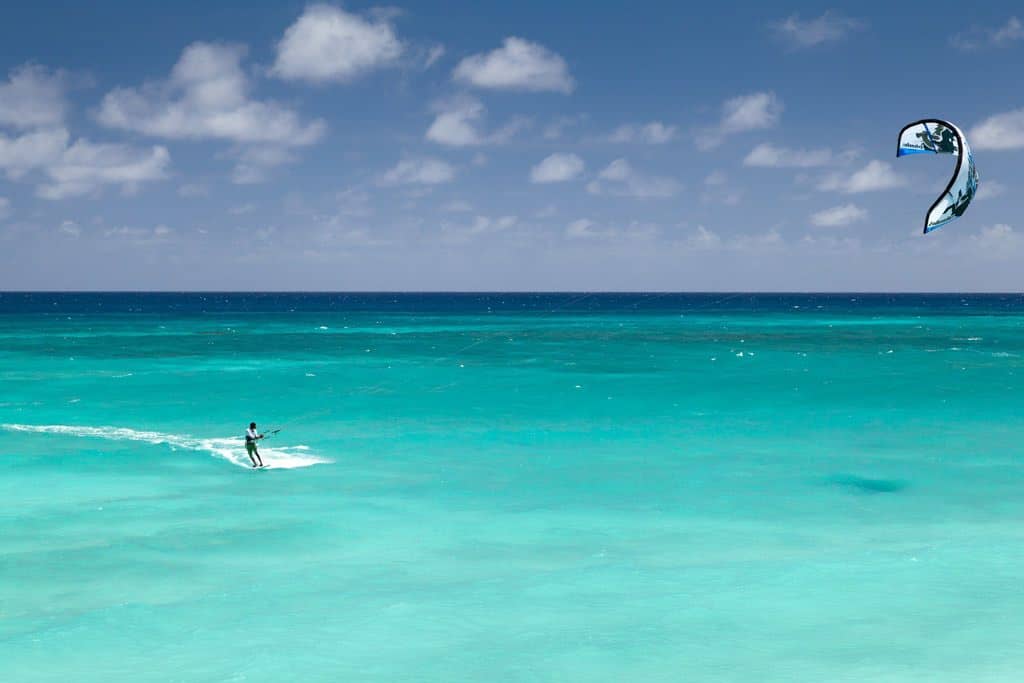
25 Amazing Things to Do in Australia (2024 Edition)
Getting around magnetic island – ‘how to’ transportation guide, the ultimate guide to the best magnetic island beaches and bays, travelling in australia: at a glance.
Here are the basics of travel to Australia.
OTHER MAIN CITIES:
Sydney, Melbourne, Brisbane
Australian Dollar. 1 beer = $8-9AUD (See current exchange rates )
ENTRY / VISA:
You will need a visa to travel to Australia unless you are a citizen of New Zealand. Most travellers to Australia will qualify for a free visa entitling them to stay in the country up to one year. Be sure to check this list of these eligible countries to determine if you can apply online for your 3 month travel visa.
Generally speaking Australia is regarded as a very safe country. The crime rates are pretty low and most crime against tourists is petty theft. In big cities such as Sydney and Melbourne you should take the usual precautions.
ELECTRICITY:
The standard voltage is 230V at 50 Hz frequency. Socket Type 1 (Be sure to get your universal travel adapter before you leave)
TRANSPORTATION:
Australia is huge. So you will likely travel by a combination of domestic flights, trains and buses. Although rental cars are great options for exploring Australia.
Important Note! Before you book any international trip, we honestly recommend getting travel insurance. You never know when things will go wrong, and medical bills can add up quickly if you get sick or injure yourself overseas.
Our personal recommendation based on our own experience is World Nomads .
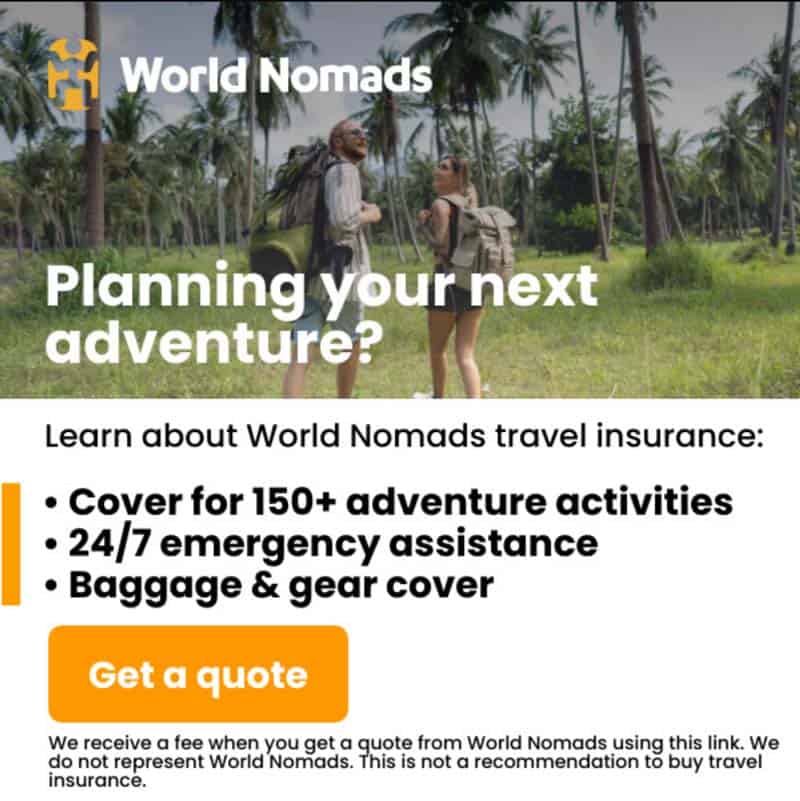
Top 5 Travel Experiences in Australia
With so much to see and do in Australia , it really is hard to pick the top experiences.
However, we think that to truly appreciate Australia you need to plan to add these 5 activities to your itinerary.
Go Snorkelling/ Diving
The underwater world is at its finest in the Great Barrier Reef. Whether you are certified to dive, prefer to snorkel or just want to experience the largest reef in the world by boat, a trip to the Great Barrier Reef should be near the top of your list of things to do when travelling in Australia.
Snorkel or dive the Great Barrier Reef .
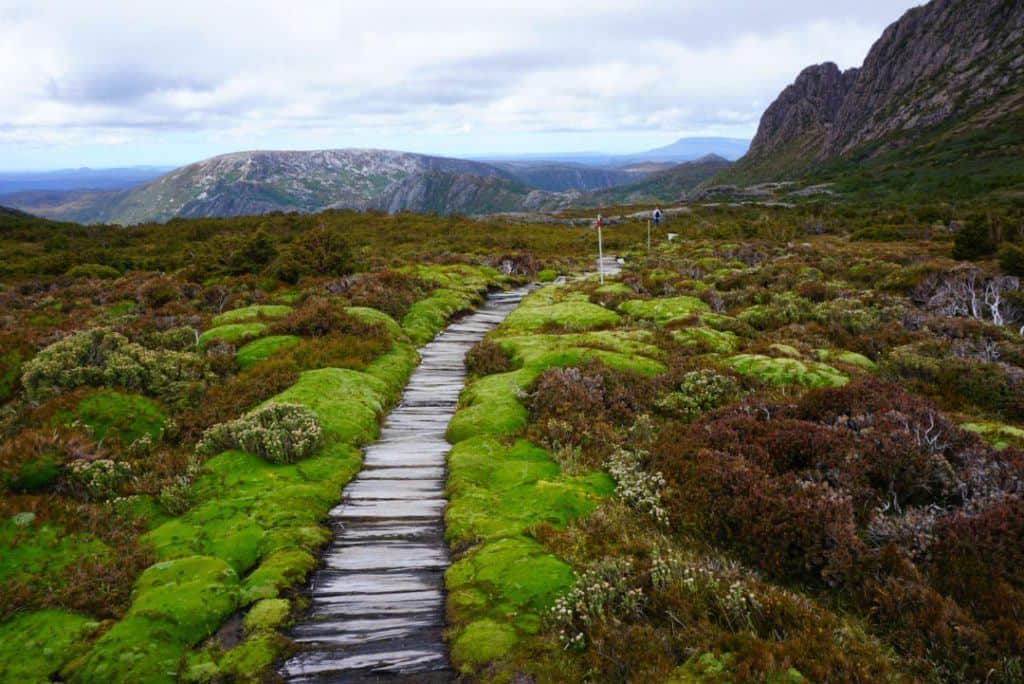
Hike Incredible Landscapes
Whether taking an excursion to Tasmania or a day trip to one of the many beautiful national parks, there are many great hikes to do throughout Australia.
Hike throughout Tasmania !
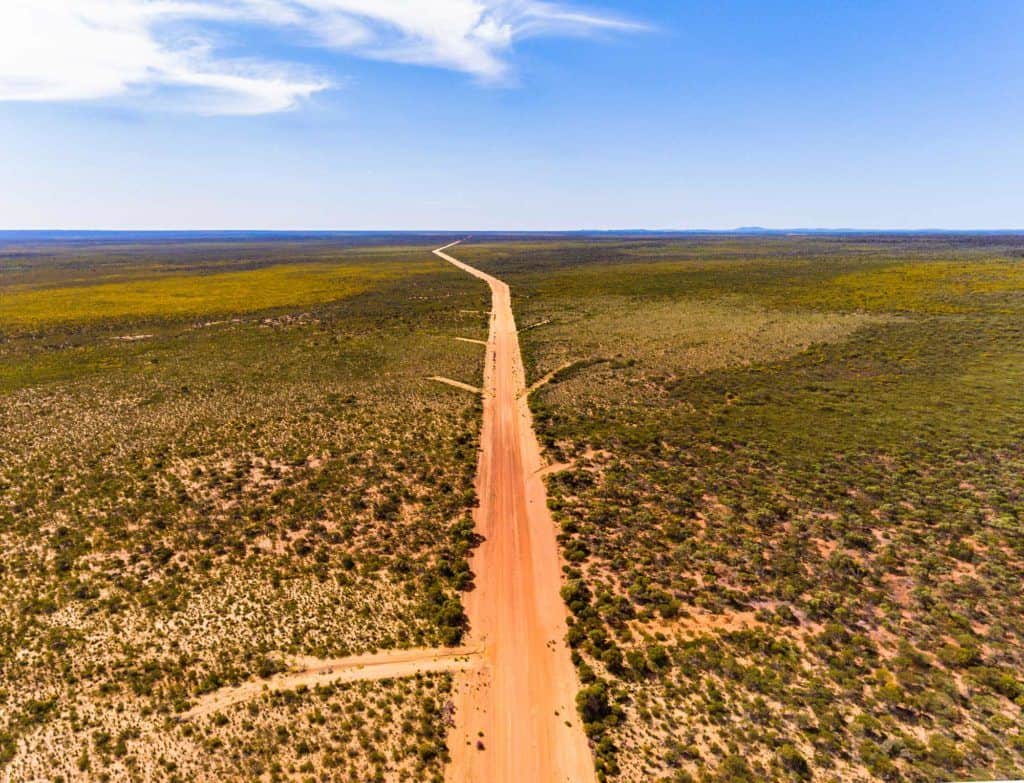
Take an Epic Roadtrip
Australia is ripe for driving expeditions. Whether you are a hardcore overlander, prefer to drive by rental car or want to experience van life at its finest, Australia offers some of the best road trips in the world. Drive along the Great Ocean Road, head inland to Uluru or pick any two towns and drive.
Tour the most famous Australian road trip along the Great Ocean Road .
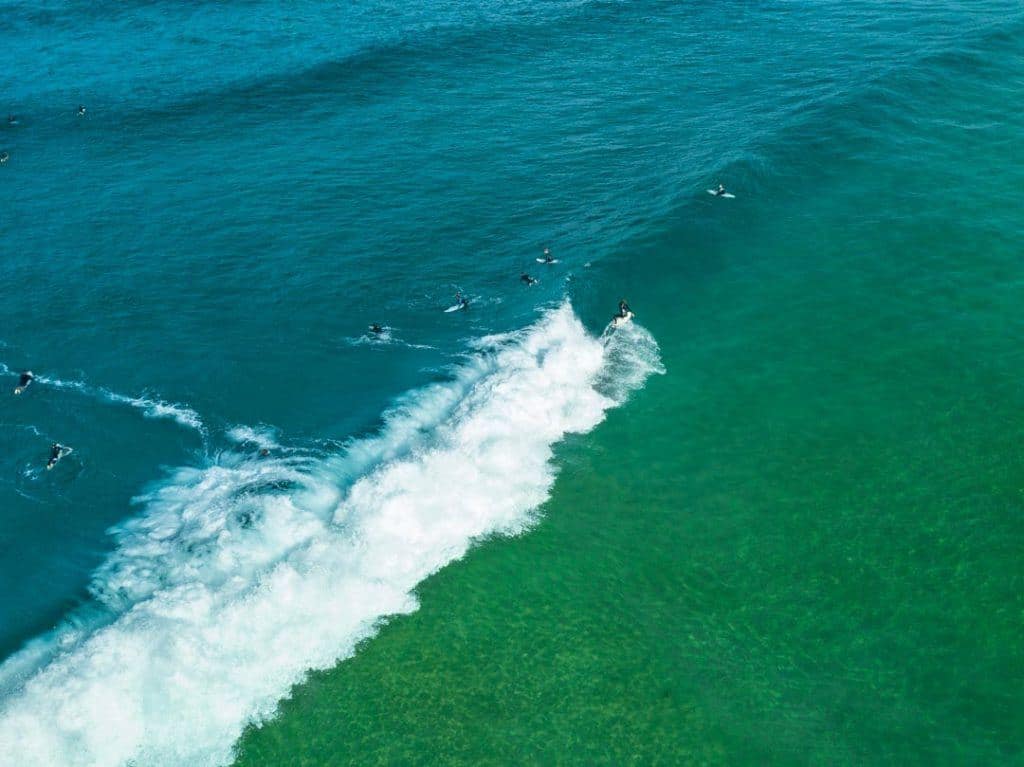
Catch a Wave
Bondi Beach is world-famous for its picturesque sand and clear blue water. Catch a wave on a surf or bodyboard or simply enjoy the beach for what it is. If you really want an experience world-class waves to surf your way up the Gold Coast.
Take a surf lesson at the famous Bondi Beach:
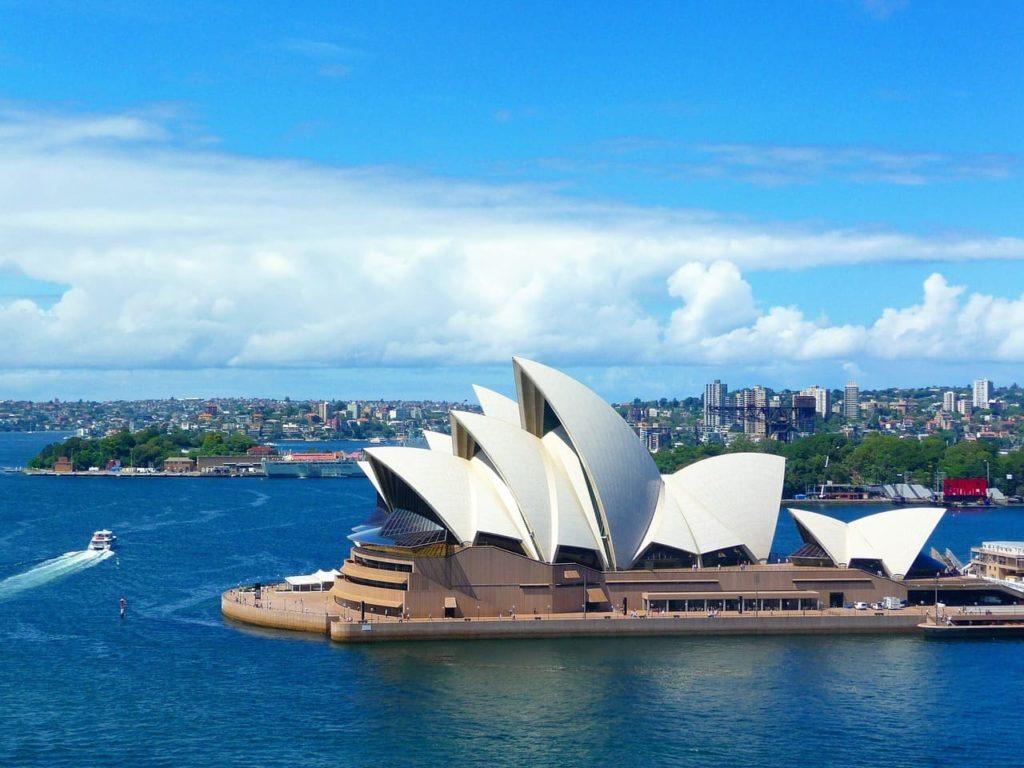
View Sydney from Above
Sydney Harbour is one of the world’s most iconic landmarks. Check out the busy city and bustling harbour by climbing to the top of the Sydney Harbour Bridge. The views of the city are sure to not disappoint!
See it all in this one-day Sydney itinerary .
Other Things to do in Australia
Swim with whale sharks . The Ningaloo Reef is the best place to swim with the gentle giants of the sea. A trip of this kind is not soon to be forgotten!
Explore the Blue Mountains . Just an hour outside of the busy streets of Sydney and you’ll find yourself surrounded by pristine wilderness .
Head out on a vineyard tour . Australian wine is some of the best in the world and you can sample several as your tour Margaret River .
Go Whale Watching. It is mystical and spiritual to encounter massive whales in the wild. Enjoy an experience from Hervey Bay among others in Australia.
Skydive . Sure you won’t see the entire country. But if you skydive at one of the most popular places in Australia you will see Rottnest Island and the beautiful surrounding waters.
Climb Mount Kosciuszko . This mountain in mainland Australia’s tallest peak at just over 2,200 meters. Add it to the list of continental peaks you have to summit.
Sail around the Whitsunday Islands . These islands are among the most diverse in the world offering rainforest hikes, white sandy beaches and the Great Barrier Reef. Touring these islands is an absolute must.
Take the train across the country . Splurge on a little scenic luxury trip and enjoy the countryside of Australia as you zip around the country, er continent.
Take a tour of Kangaroo Island . The island is Australia’s third-largest and taking a tour will reveal that it is home to a variety of animal species and a vast wilderness to explore .
Visit Wineglass Bay . There are many reasons to visit Tasmania and Wineglass Bay in Freycinet National Park is among the top. Be sure to give yourself enough time to explore the other great places to see in Tasmania .
Search for pearls in the sea . So you may not find any of your own, but Broome has a thriving pearl industry in its pristine waters and you are welcome to dive into the experience of making the world your oyster.
Hike the Larapinta Trail . This trail is among the top trails in all of the world and traverses the Northern Territory out of Alice Springs. Be sure to hike this trail as it is growing in popularity year after year.
Visit the Sydney Opera House . Perhaps the most iconic image of Australia, aside from a cuddly koala or kangaroo, that you can tour or take photos of from seemingly anywhere in Sydney.
Be Sure to Check Out These Other Amazing Things to do in Australia
READ MORE...
The Perfect Magnetic Island Day Trip Itinerary [2024 GUIDE]
Brisbane to Cairns Drive – The Perfect Road Trip Itinerary
Atherton Tablelands Waterfalls – The 10 BEST Cascades to See
16 BEST Cairns Day Trips Not to Be Missed [2024 Guide]
Warrumbungles Walks – The Ultimate Hiking Guide [2024]
Best Places to Visit in Australia
There are plenty of amazing places to visit in Australia. Depending on your interests, trip duration and time of year you will find plenty of things to do during any length of stay.
Narrowing down the best places to travel in Australia is difficult. From picturesque beaches to arid desert, Australia offers a wide range of places to visit and things to see and do.
Here are our top 5 places to visit in Australia.
Here is where you will find Australia’s most famous landmarks such as the Sydney Opera, the Harbour Bridge and its surrounded by plenty of national parks if you want a change from the city scenery.
Be sure to add these things to do in Sydney to your itinerary.
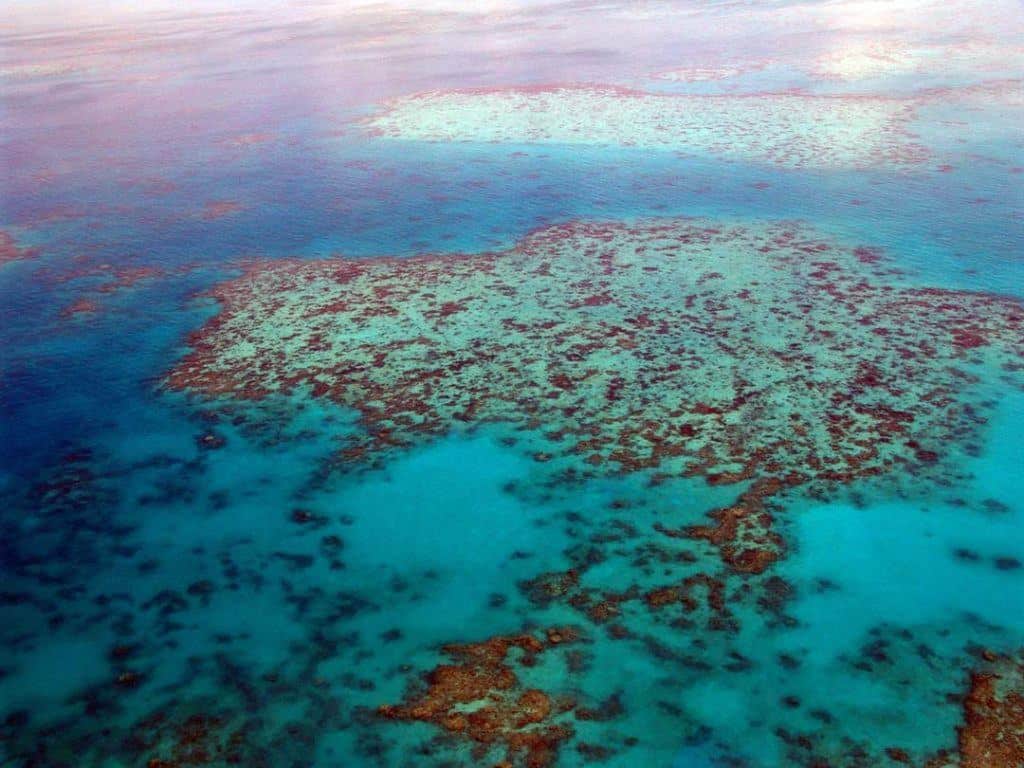
The capital of Queensland and one of Australia’s largest cities, Brisbane is a highly sought after destination for those coming Down Under. The city is rich with history, a vibrant food scene, beautiful views and so much to do.
Start planning with these awesome things to do in Brisbane .
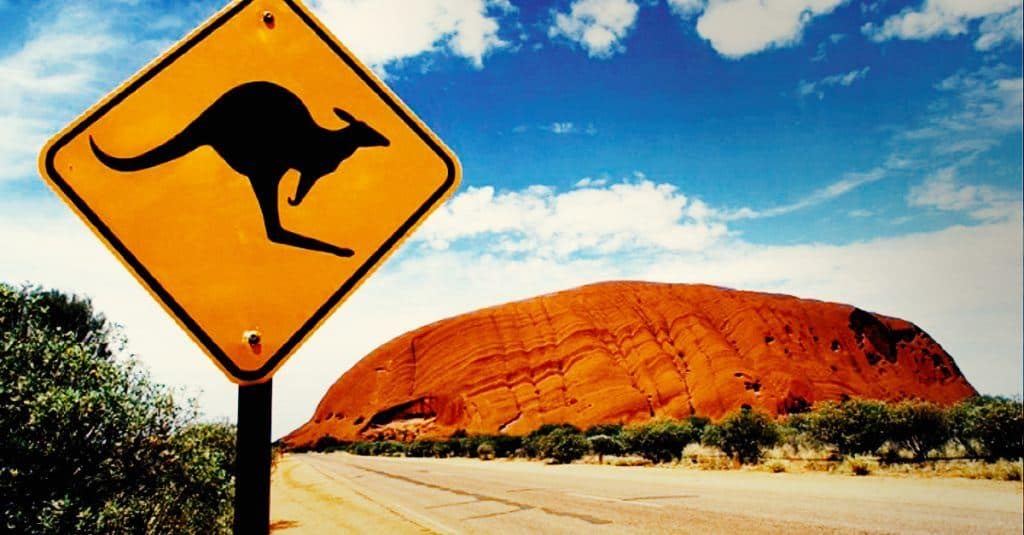
Uluru is located in the centre of the country and is unique for being very isolated. Known for natural wonders such as the massive monolith Ayers Rock, Uluru is full of spectacular scenery and beautiful landscapes.
See our guide on the top things to do in Uluru .
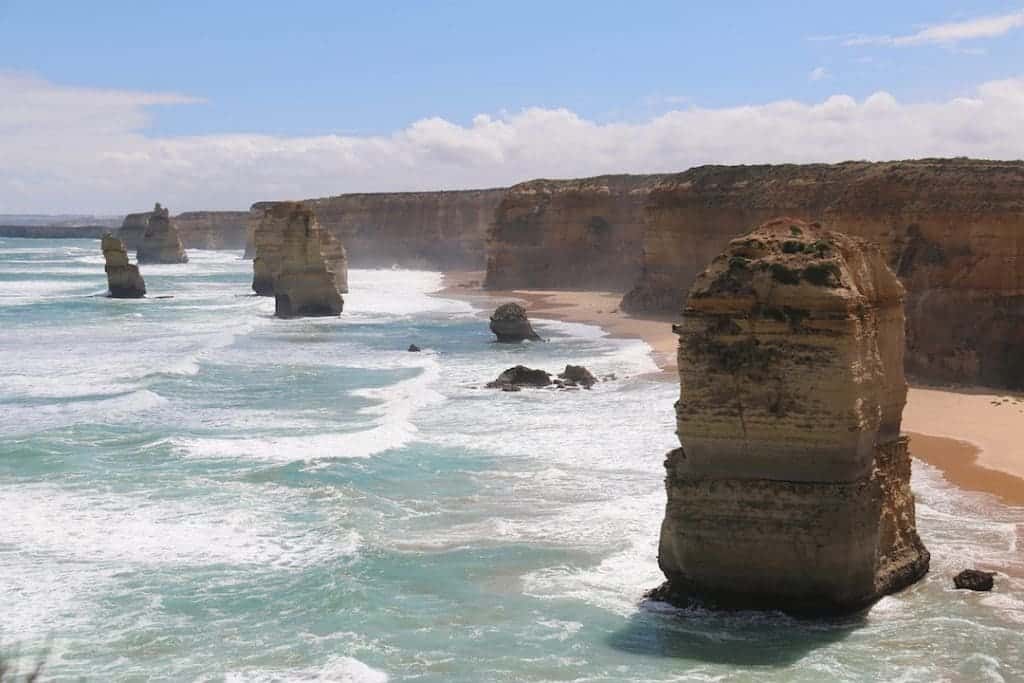
Of all the cities in Australia, Melbourne is seen as the cultural one. It is full of international visitors and residents, which is surely a testament to its attractive vibe. The city is equally adored by patriotic Melbournians; they will be the first to tell you how amazing it is, and they are usually happy to impart details of their favourite spots.
Spend the perfect 3 days in Melbourne with this itinerary.
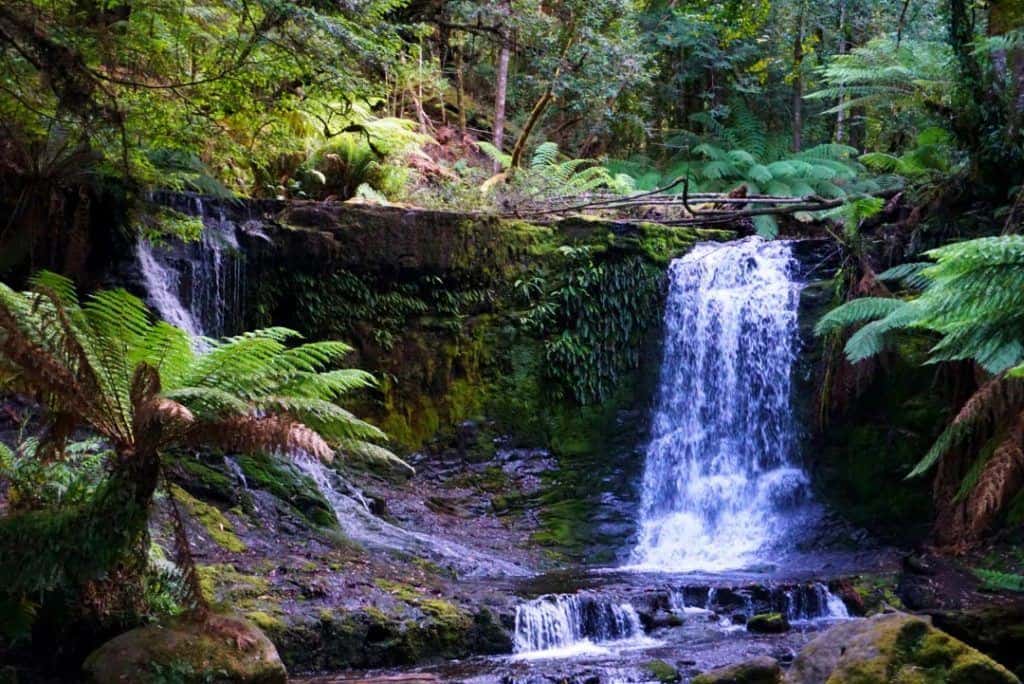
Tasmania is especially well known for its natural beauty in breathtaking Freycinet National Park, the Bay of Fires and Cradle Mountain. Simply put, there are so many things to do in Tasmania!
Plan your trip with the best 2-week Tasmania itinerary .
For more information on specific things to do in the top places to visit in Australia, reference our following city travel guides:
* City Guide * Itinerary * Day Trips
* City Guide * Itinerary * Day Trips
* City Guide * Itinerary * Day Trips
* State Guide * Places to Visit * Itinerary * Camping Guide
Gold Coast Adelaide Cairns Byron Bay Broome Noosa Blue Mountains Airlie Beach Kangaroo Island
Hervey Bay Esperance Fraser Island Port Stephens Great Ocean Road Uluru Exmouth Margaret River The Whitsundays Darwin
Be Sure to Check Out These Other Awesome Places to Visit in Australia .
Best Australia Travel Itinerary
Australia is huge and offers so many opportunities to explore its vastness. It would be easy to spend weeks or months in any one part of the country.
So trying to see the whole of Australia might seem overwhelming.
Depending on how long you have to travel to Australia, where you plan to visit and what you plan to do, you have plenty of options.
We’ve put together a few Australia itineraries that are sure to leave you wanting for nothing at the end of your visit.
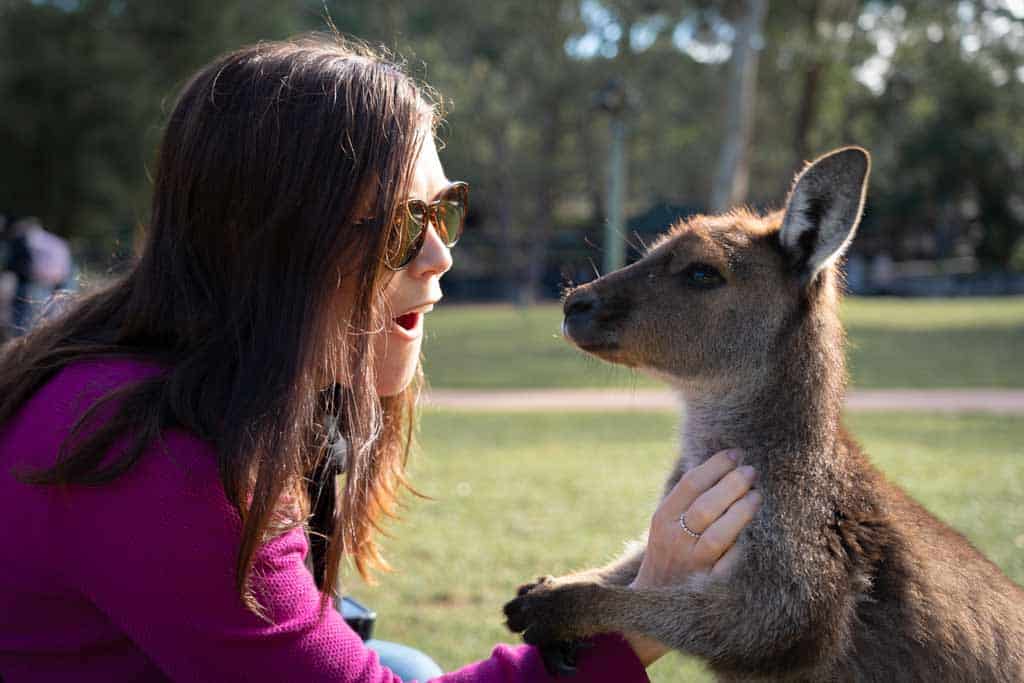
2-Week Australia Travel Itinerary Highlights
If you only have 2 weeks you’re going to have to choose which side of Australia to visit and you’re going to miss out on a lot. But that’s OK because you can always plan a return trip!
The more popular side will be New South Wales + Queensland on the eastern shore of the continent. However, there is also plenty to see in Western Australia as well.
3-Weeks to 1 Month Australia Travel Itinerary Highlights
If you have between 3 weeks and a month to explore Australia then you can combine both the New South Wales + Queensland and Western Australia loops with some reasonably priced domestic flights to connect you in the bigger cities.
Additionally consider adding on the following cities/activities:
6 – 8 Weeks + Australia Travel Itinerary Highlights
Most people who travel to Australia will spend approximately 2 months visiting the country.
If you are trying to get a taste of the entire country, the quickest and most thorough way to see the country would be to follow this itinerary.
Australia Trip Planning
Best time to visit australia.
Australia is located in the Southern Hemisphere and thus has opposite seasons from most of the world. This can be confusing, so make sure to plan accordingly!
Additionally, the country is so large and offers such varied climates and landscapes that the weather you experience depends on the region and time of year in which you’re travelling.
If you are planning to travel to Australia during summer (December – February), know that this is the most popular time to visit Australia.
But during fall and spring, the tourism and temperatures fall off. This makes this time of year perhaps the most ideal time to visit any place in Australia.
You can still enjoy most of the outdoor activities for which Australia is known without dealing with the large crowds and expenses of the busy tourist season.
This is also an ideal time to explore the Australian Outback or to swim with whale sharks along the western coast.
If you are interested in winter sports, Australia also offers plenty of opportunities to ski and snowboard. You can find yourself in great ski slopes within a few hours of landing at the airport.
So really Australia has it all! Depending on what you would like to see and do, you can plan to travel to Australia at any time of the year!
Australia Travel Budget Guideline
Travelling in Australia is not cheap, and many people are unprepared how expensive Australia really is.
However, if you plan accordingly you can find ways to have an amazing experience while not breaking the bank.
Be prepared with these Australia travel tips so that you do not end up spending more money than you should.
Some of the average costs you can expect in Australia are as follows:
Note that transportation costs will vary by how much you intend to travel and these include budgeting for various domestic flights in addition to standard metro transportation.
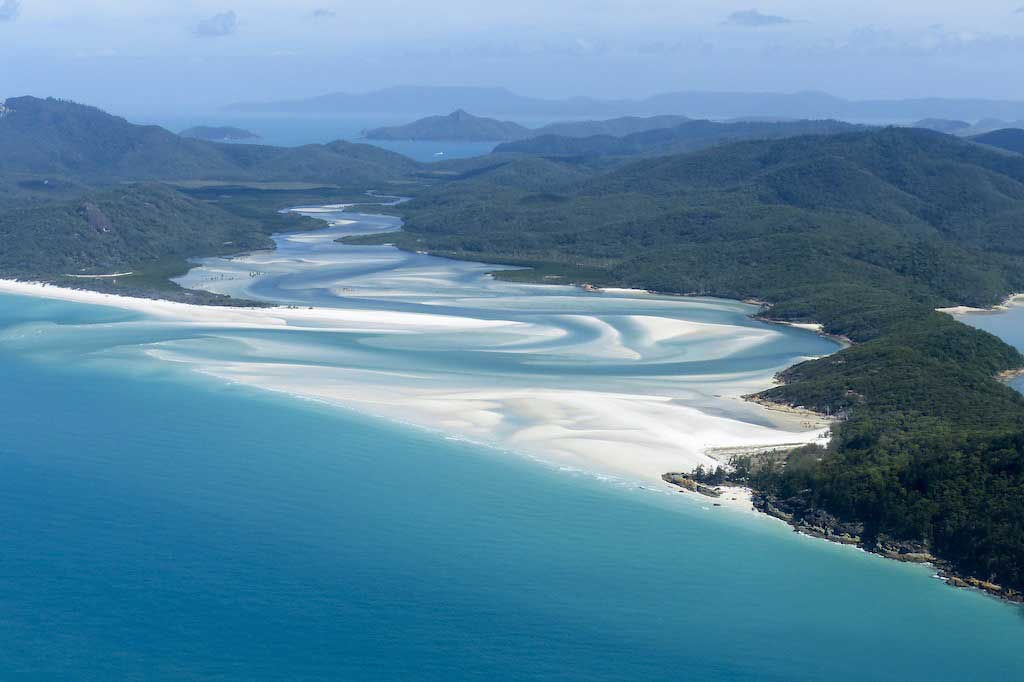
Budgeting Tips:
Here are some of our tips for spending less when travelling in Australia:
- Cook as many of your meals as possible
- Use local transport when available
- Couchsurf or look for AirBnB deals ( use our link to get $35 off your first Airbnb stay )
- Seek free wifi in public places
- Get a pre-paid phone plan from a supermarket. Telstra has the best coverage outside of major cities, but they are also the most expensive.
- Work for your room – some hostels let you work a couple of hours daily in exchange for free room
- Drink less (tough, we know!). The average price of a pint in Australia is AUD$8 -$9 and they can quickly add up!
- WWOOF – is a program that connects young travellers with organic farms. You work in exchange for free accommodation and board.
But there are a few things you should know about the different budgets at which you can choose to travel.
Note: Budgets shown as Single Traveller / Couples per day.
Budget Traveller ($60-90 Single / $100+ Couples)
If you’re a backpacker and you stay in hostels, use local transport and cook many of your meals – you could plan to spend around AUD$60-90/per day.
Mid-Range Traveller ($100-200 Single / $150+ Couple)
Couples will share some expenses, such as accommodation, but will also incur more individual expenses.
To stay on a budget you will want to follow the general budgeting tips but also look to possibly purchase a used vehicle or campervan for longer trips to Australia.
This can combine your transportation and accommodation costs.
Luxury Traveller ($350+ Single / $500+ Couple)
You can spend as much as you want to spend when you travel to Australia.
It is likely the biggest difference in your budget will be upgrading your accommodation, adding a few extra drinks with your meals or nights out and catching flights around the country instead of overnight buses.
Getting to and Around Australia
As an island nation, Australia is most accessible from flights arranged from many of the larger cities of Europe, North America, Asia and South Africa.
But depending on where you are travelling from, expect to spend a fair amount on the plane ticket and quite a bit of time in the air.
Our best advice is to do research and buy your ticket as soon as possible. Booking several months in advance will provide you the most consistently lowest fares.
Additionally, major airlines offer seasonal promotions and occasional discounts so stay alert!
One of the best ways to make sure you get the best deal is to sign up for email alerts to receive special offers from airlines such as Qantas, Virgin Australia, United and Delta.
It is also a good idea to browse for flights in incognito mode. Or alternatively, you can clear the cache in your browser periodically.
Many travel sites will charge you higher fares if they know you are visiting their sites frequently to search for flights.
Google Flights also offers some of the best initial research for fares from your destination.
However, be sure to check fares directly with the airline as there may be unspecified fees and regulations not listed in the Google Flights results.
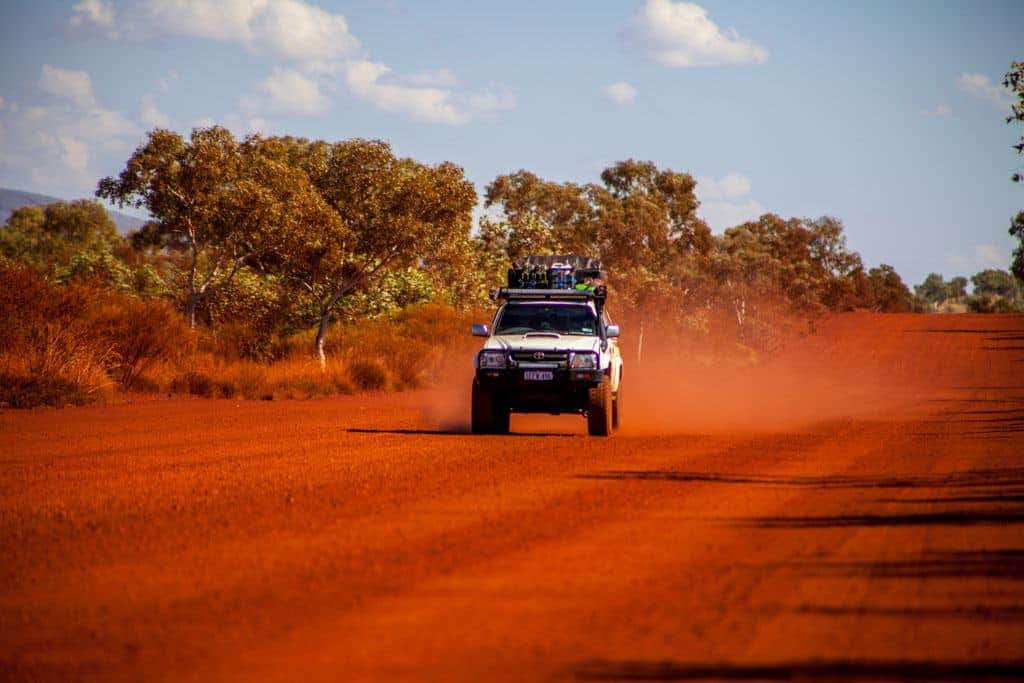
Entry Requirements
You will need a visa to travel to Australia unless you are a citizen of New Zealand.
Most travellers to Australia will qualify for a free visa entitling them to stay in the country up to one year.
Be sure to check this list of eligible countries to determine if you can apply online for your 3-month travel visa.
Getting Around Australia
Transportation in and around Australia is as varied as the country itself.
However, because it is so large you will likely experience a combination of transportation options wherever you plan to travel in Australia.
Australia has a fantastic domestic air network that allows you to connect to points all across the country. Some of the airlines that offer great deals to hop across the continent include:
- Virgin Australia
- Tiger Airways
The wide selection in airlines and routes offers fairly competitive prices especially when it comes to the Sydney-Melbourne leg of travel.
If you’re flying out to a remote destination such as Uluru, Hamilton Island or Darwin – your best bet is to book well in advance. But then still expect fares to be a little pricey.
If you have the time and want a truly unique experience you can cross the country aboard the Indian Pacific railway . Expect some of the best service, food and scenery you can imagine when travelling in Australia by train.
This is the only way to cross the country by train. However, it is very expensive.
Bus is the best way to travel in Australia on a budget. Greyhound buses operate in most of the capital cities and will connect you to pretty much anywhere in the country you would like to go.
The prices for intercity bus travel are modest. Additionally, many companies offer discounts for students.
The bus is also a great way to travel in many of the larger cities.
Not only can you cover a lot of ground by using the public bus system in places like Sydney, Melbourne and Perth but also it will save you quite a bit of money to spend on other things.
Rental Cars
If you’d like to travel in Australia at your own pace, renting a car is your best option .
However, it can be pricey especially if you plan to pick up the vehicle in one city and drop it in another.
But nothing will beat the freedom you have to go to the places you want to see and do them at your own pace.
If you are really into exploring the country with the most amount of freedom, consider renting a campervan .
Campervans combine the flexibility of driving at your own pace and itinerary with the freedom to stop and sleep pretty much anywhere along your journey.
Many campervans come fully equipped to be able to prepare your own meals and be self-sustainable for days on end as you explore the country.
Petrol prices vary, depending on where you are travelling from. For example, they are lower than those in the UK and Europe, but higher than in many places in North and South America.
One thing to keep in mind is that distances between places in Australia are large. So it is very likely that you will be driving long distances while travelling in Australia.
The same vastness that makes a road trip across Australia seem daunting is the very reason to explore it by vehicle. Some of the best attractions are only reachable via car because they are remote and well off the beaten path.
Depending on how much time you are willing to commit to driving across the country, you could take weeks or months to absorb the landscape, wildlife and culture of the Australian people.
The best way to get around is to rent a car and explore on your own! We recommend Rental Cars , which has the largest range of vehicles for the best value on the market.
Apps and Technology
Technology can help you stay safe and make the most of your travels to Australia.
Here are a few we think you should definitely acquaint yourself with prior to your travels:
- XE Currency – Transfer, monitor and calculate currency as the need arises. This app may not be totally necessary as you are typically tied into rates the banks charge for services. But it is handy to have around.
- Express VPN – This will protect your sensitive information wherever you travel – not just in Australia. Be sure to have this to keep your online information secure as you travel.
- The Happiest Hour – This app helps you find the best drink deals wherever you are travelling in Australia
- BeachSafe – Search every beach in Australia and know the hazards before you get in the water.
- Uber – Yep, you know what to use Uber for. Catch rides in any major Australia city for a fraction of taxi fares.
Best Things to Eat in Australia
Australia has a variety of dishes to represent the varied cultural and historical aspects of the country.
While known more for its beer than its food, there are several types of food that you do not want to miss when travelling in Australia.
Here are a few of the best options to explore:
The Lamington – This is the national cake of Australia. It is a square-shaped sponge cake that comes with chocolate icing and has coconut sprinkled all over it. Sometimes it has jam in the middle.
Vegemite on toast – Vegemite is a brown food paste that doesn’t look appetising at all. But Australians swear on it. It is most popularly used like jam on toast.
Grilled Kangaroo – While many people visit Australia to view wildlife such as kangaroo , it is also a pretty popular meal. While it tends to dry out so it’s usually cooked from rare to medium, it is delicious when served with rosemary, plums, oranges, peppers, juniper, garlic and red currant.
Meat pies – Meat pies are every Australian’s favourite childhood snack. It is nearly always on the menu, whether it be as an appetiser at a restaurant, house party or sporting event. You’ll find meat pies usually served with mashed potatoes and gravy.
Fish & Chips – One thing is for sure, Australia has plenty of fresh, delicious fish to create this traditional meal. Regardless of what part of the country you visit, it’s likely you’ll find this plate anywhere in Australia to compliment a nice cold beer.
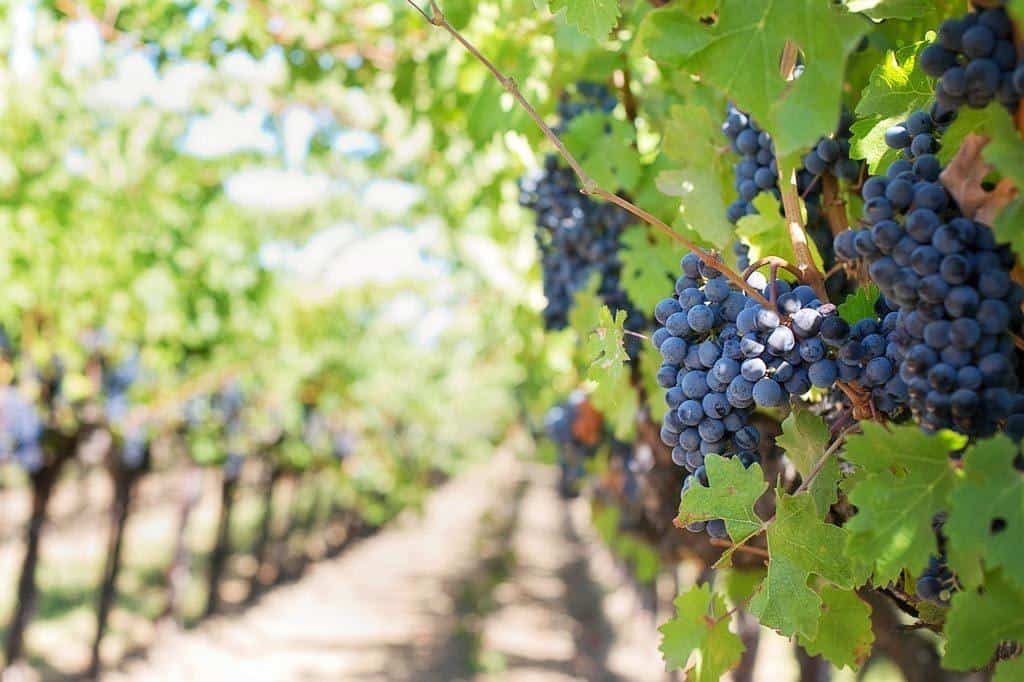
Places to Stay in Australia
Australia has a variety of types of accommodations for which you will find suitable for most budgets. In general, expect to pay more for a night in Australia than most other countries in the world.
But for what you are searching, it is likely you will find the perfect place and price.
Types of Accommodations
As in nearly all other places in the world, accommodation is Australia is varied and depends on your desires, budget and location.
When travelling in Australia you can find accommodation that ranges from bed and breakfasts to hotels, hostels and homestays.
Australian Bed & Breakfast & Guesthouses
You can find family-run guesthouses popping up all over Australia. They can vary a lot by style, from converted barns, bungalows to townhouses.
Rates vary as well depending on the location of the guesthouse and facilities offered.
They offer reasonably priced comfortable rooms and you can also enjoy the family feel, the home-cooked dinners and rely on information provided by the owners.
Hostels are the most popular way for budget travellers to find accommodation while travelling in Australia. However, they are no longer just for students and younger people.
Many hostels in the country offer the kind of amenities that attract people from all walks of life. Usually, they offer shared dorms, cooking facilities, communal area with TV, 24-hour reception and laundry facilities.
Additionally, hostels are a great way to meet people and learn about other places to visit and things to do in Australia.
Hotels can be considerably expensive in Australia. Even ones that are not deemed as luxury or boutique hotels can carry a pretty heavy cost.
If you’re looking for maximum comfort then staying in a hotel is the right choice. But be prepared to shell out for that comfort when travelling in Australia.
Camping & Caravan Parks
One of the most popular ways to see Australia is to travel by camper van.
Rent a camper or a caravan and you can go camping anywhere! Whether it be in national parks or outside of the city limits.
The best thing is that you will be able to experience the country more fully and save money that you’d otherwise spend on accommodation.
Another good option in recent years is AirBnB, and there are more and more amazing places popping up to stay for very affordable prices every day.
As is typical in many destinations where Airbnb accommodations are popping up, you’ll likely find great value and a little more personal space with an Airbnb stay.
If you’re looking for an awesome place to stay in the area, we personally love using Airbnb. If you’ve never used the platform before, sign up using this link to get USD$35 off your first booking .
Australia Travel Tips
General australia travel tips.
While there are many basic travel tips we suggest you use when travelling to Australia, there is also plenty of Australia-specific tips that will make your visit the best it can be.
Here are a few we recommend you consider as you plan your trip to visit Australia:
- Time . One of the most common mistakes that first time travellers make is trying to experience Australia within 2-3 weeks. This is a continent not just a country. It is best to choose just two or three areas to focus on your first visit. Otherwise, you will risk spending most of your holiday in transit.
- Cost . Australia is very expensive, make sure to either cut down your costs or apply one of our tips to get a decently priced accommodation – also make sure to bring twice as much money than how much you originally intended to.
- Tipping . Tipping for services in Australia is not mandatory and most of them are not used to it. Only tip if you exceptionally enjoyed the service.
- Sun Protection . The sun is very harsh – pack a lot of sunscreens!
- Distances . The distances between major cities are bigger than in Europe or the US. Once you’re out of the city you already feel like you’re in the wild!
- Seasons . Australia is in the southern hemisphere which means that all seasons are completely opposite of the northern hemisphere. That’s true for the southern part of the country but not the north. Which in returns means that it’s ideal to visit Sydney from November – April but it’s the exact opposite if they want to visit the Great Barrier Reef!
READ MORE: Our comprehensive list of Australia travel tips to make your journey safer, more enjoyable and more affordable!
Australia Packing List
We always travel with a core packing list wherever we go. And when it comes to Australia, many factors will affect what else you need to bring along with you.
Check out our travel essentials and be sure to add any of the other additional items listed below.
Staying Safe in Australia
Generally speaking, Australia is regarded as a very safe country.
The crime rates are pretty low and if by any chance tourists end up being victims of crime it’s usually a case of pickpocketing.
In big cities such as Sydney and Melbourne you should take the usual precautions:
- Do not walk alone at night in poorly lit areas
- Don’t leave your valuables unattended
- Don’t carry your wallet in your back pocket
The biggest danger when travelling in Australia actually comes from natural hazards and animals.
Every year dozens of tourists drown on one of Australia’s busy beaches because of strong waves and riptides. Wildlife attacks account for a handful more incidents.
But in general, you should feel very safe when you travel to Australia.
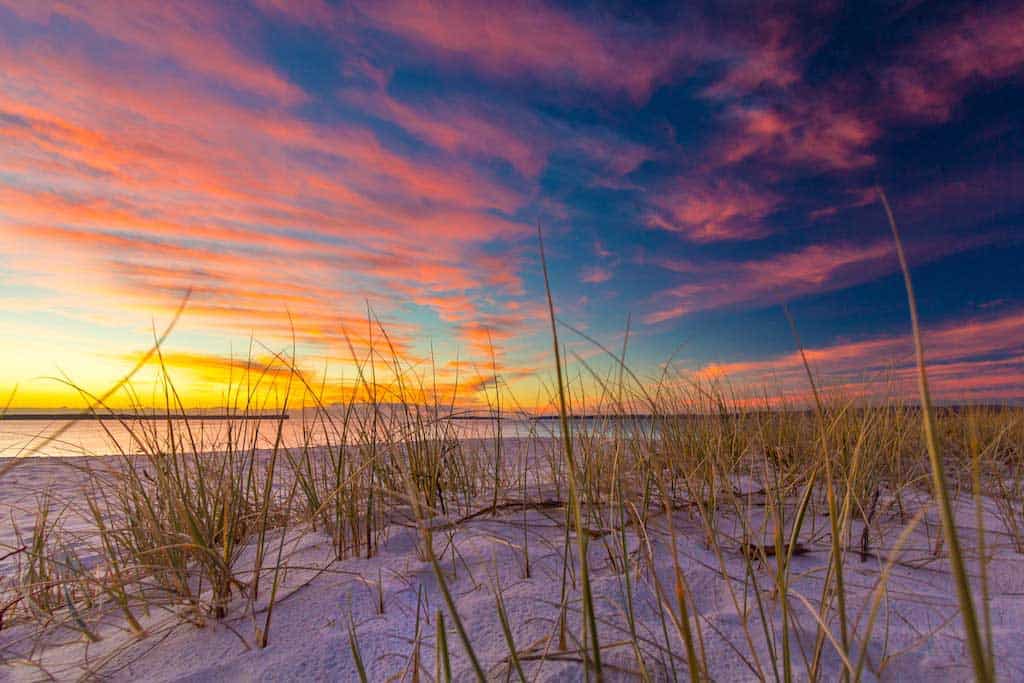
Medical System in Australia
The public health care system in Australia is called Medicare. Australian hospitals are renowned for world-class medical facilities and the highest standards of care.
The Australian government has Reciprocal Healthcare Agreements with a couple of countries which allow travellers access to subsidised health services.
Since there’s always a risk from natural hazards, dangerous animals and simple accidents while exploring the country, it is always advised to buy travel insurance.
Travel insurance will cover loss, theft, accidents and various medical problems.
It is especially recommended if you plan on doing activities that carry a certain degree of risk such as scuba diving, travelling to remote areas, bushwalking etc.
Staying Connected in Australia
Staying connected in Australia is harder than you think it would be. The country is known for abysmally slow internet.
So if you’re trying to keep up with work while you are on the road, it may be a bit difficult.
But there are definitely economical ways to stay connected while you travel in Australia.
We feel like your money will go a lot further if you consider a few other options.
Good Idea: Rent a Portable WiFi Device
There are a variety of portable WiFi device rental companies throughout Australia.
Most plans include unlimited data use – although this is typically limited 4G which then reduces to 3G after some small consumption.
Remember that the internet in Australia is notoriously slow so be patient and prepared to spend around $5 -$10 per day for the services.
Reserve your mobile WiFi device .
Better Idea: Access Free WiFI
One of the best, and certainly the most affordable, ways to stay connected when you travel to Australia is by taking advantage of the many free WiFi hotspots throughout the country.
Of course, these are most commonly found in densely populated cities and at private establishments like McDonald’s.
But if you time your desire to surf the web with the need to grab a bite to eat or a cup of joe then it will still likely work out cheaper than either purchasing a SIM card or renting a mobile WiFi device.
Best Idea: Purchase a SIM Card
SIM Cards make staying connected during international travel much easier. You can purchase prepaid SIM cards in Australia to use in any unlocked mobile device.
These will give you the greatest flexibility in staying connected while you travel.
Purchase a SIM card today .
Be a Responsible Traveller in Australia
As with most countries, when travelling to Australia there are several things you can do to be a responsible traveller.
Consider the following:
- Mind your use of plastics. This includes straws, bags and bottles. Consider carrying a reusable straw, waterbottle and bags for shopping.
- Buy local. Supporting smaller merchants helps local economies.
- Choose sustainable tour operators. This is especially true for all tours into nature preserves, those that deal with animals, or those that will take you to enjoy the Great Barrier Reef.
- Leave it better than you found it. Pack out any of your waste, mind the local rules, stay on trails and don’t touch or feed the wild animals.
- Avoid activities that involve touching wild animals. If a tour has to. pursue an animal in the wild, it is likely presenting more harm and discomfort to the animal than if you are approached by the animal.
Books to Read About Australia
You’ve seen Crocodile Dundee and think you know everything about Australia? Chances are you don’t!
But even if you are well-read, here are a few suggestions that might be worth your time while you’re on the plane to Australia.
- The Songlines (Bruce Chatwin) – Set in the Australian Outback, this novel documents the source of the “Dreaming Tracks” of the Aborigines. Buy here .
- The Secret River (Kate Grenville) – Historical fiction about the settlement of New South Wales by an English convict in the early 1800s as part of his sentence. Buy on Amazon .
- In A Sunburned Country (Bill Bryson) – Half scientific, half anecdotal account of the famous writer who set out to explore all of the wilderness of life in Australia. Buy on Amazon .
- The True History of the Kelly Gang (Peter Carey) – A historical fiction tale about the famous Ned Kelly from the perspective of letters written to his young daughter while he was on the run. Buy on Amazon .
- The Harp In The South (Ruth Park) – An Australian classic about life in Sydney during the Great Depression. Buy on Amazon.
Booking Resources
I know, I know – we’ve already mentioned these resources a bunch in this travel guide.
But here’s the thing… we know you’re going to want and need these resources to help you save money and have a more enjoyable trip!
DISCLAIMER: Some of the links in this article are affiliate links, which means if you book accommodation, tours or buy a product, we will receive a small commission at no extra cost to you. These commissions help us keep creating more free travel content to help people plan their holidays and adventures. We only recommend the best accommodations, tours and products that ourselves or our fantastic editorial team have personally experienced, and regularly review these. Thanks for your support, kind friend!
Table of Contents
Read our australia posts, grampians walks – ultimate guide to the best hikes [2024], the 18 best lamington national park walks, queensland, the 6 best nsw road trips – epic drive itineraries [2024 edition], 7 day gold coast itinerary (2024 guide), the perfect sydney itinerary for 3-5 days, the ultimate western australia road trip itinerary, mt field national park – travel guide and itinerary [2024], the ultimate travel guide to the tasman peninsula [2024], queensland road trips – 11 best drive itineraries [2024], the perfect 1, 2 or 3 week australia itinerary [2024], climbing mount kosciuszko – the roof of australia, the ultimate guide to the 10 best kiama beaches.

Navigate forward to interact with the calendar and select a date. Press the question mark key to get the keyboard shortcuts for changing dates.
Navigate backward to interact with the calendar and select a date. Press the question mark key to get the keyboard shortcuts for changing dates.
Australia Trip Planner
Top destinations in australia.

Top attractions in Australia

Other notable attractions

Explore nearby places
- Tuggeranong
- Paddys River
- Murrumbateman
- Captains Flat
All related maps of Australia
- Map of Australia
- Map of Canberra
- Map of Symonston
- Map of Phillip
- Map of Weston
- Map of Bruce
- Map of Hume
- Map of Queanbeyan
- Map of Tuggeranong
- Map of Wanniassa
- Map of Chisholm
- Map of Gungahlin
- Map of Nicholls
- Map of Hall
- Map of Wallaroo
- Map of Paddys River
- Map of Sutton
- Map of Carwoola
- Map of Bywong
- Map of Bungendore
- Map of Gundaroo
- Map of Murrumbateman
- Map of Captains Flat
- Map of Wee Jasper
- Map of Collector
- Map of Yass
- Map of Burrinjuck
- Map of Gunning
- Map of Braidwood
- Map of Bowning
- Map of Araluen
Australia throughout the year
- Australia in January
- Australia in February
- Australia in March
- Australia in April
- Australia in May
- Australia in June
- Australia in July
- Australia in August
- Australia in September
- Australia in October
- Australia in November
- Australia in December
Q&A about Australia
Add places from guides with 1 click, collaborate with friends in real time, import flight and hotel reservations, expense tracking and splitting, checklists for anything, get personalized suggestions.
4.9 on App Store, 4.7 on Google Play

Australia Road Trip Itinerary for up to 5 Weeks
By Author Jurga
Posted on Last updated: May 25, 2024
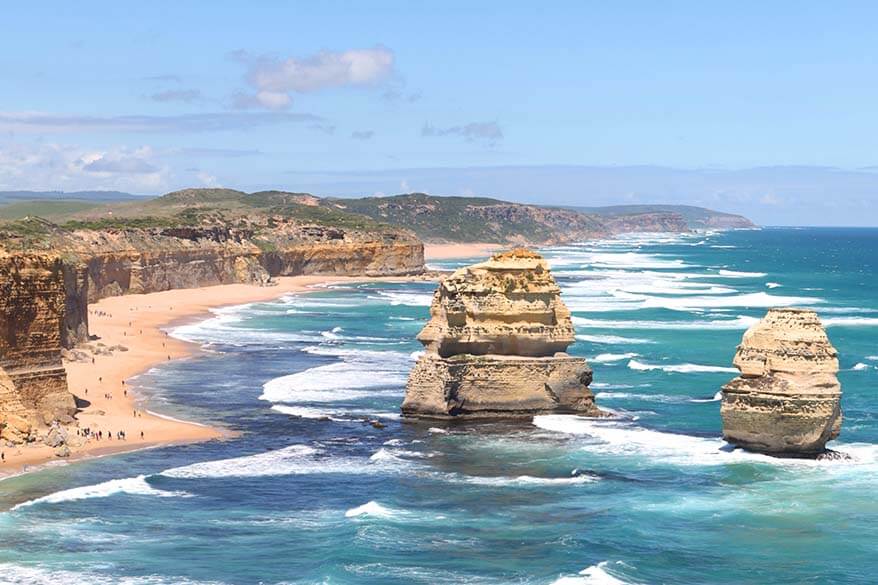
Are you looking for the best Australia itinerary ? It’s a tough choice – there are just so many options… Nevertheless, in this post, we try to give you a good starting point on how to best plan your Australia road trip itinerary . Find out!
Good to know: This 5 weeks Australia itinerary is structured in such a way that it includes separate ‘itinerary blocks’ per area (Sydney, Melbourne, Red Center, etc.). So you can just pick the areas that interest you the most and plan your own perfect Australia road trip.
We visited Australia twice. The first time we followed a standard East Coast itinerary from Cairns to Sydney and, to tell you the truth, were quite disappointed. The 5-week Australia road trip itinerary that I share in this article is based on our second road trip in Australia. We planned this trip ourselves, spent many hours perfecting this itinerary and we absolutely loved this trip!
This Australia itinerary covers many highlights that we thought were worth our time the most. After all, when you fly to the other side of the world, you really want to see the best of the best, right?
We spent more than a month in Australia with kids and visited many different regions. Our Australia itinerary started in Sydney and the Blue Mountains , followed by the Red Centre . We then visited Kangaroo Island and the Great Ocean Road . We spent 10 days in Tasmania and ended our Australian road trip in Melbourne .
Below you can find our 5-week Australia road trip itinerary in a nutshell. It includes a day to day planning of our Australian road trip and some practical tips.
Would I change anything to this Australia itinerary? Not much. I would add some extra days here and there, but this itinerary pretty much covers all the highlights in each place. And who has so much vacation time… We could only do this trip because our kids were still young and we weren’t tied to school holidays at that time…
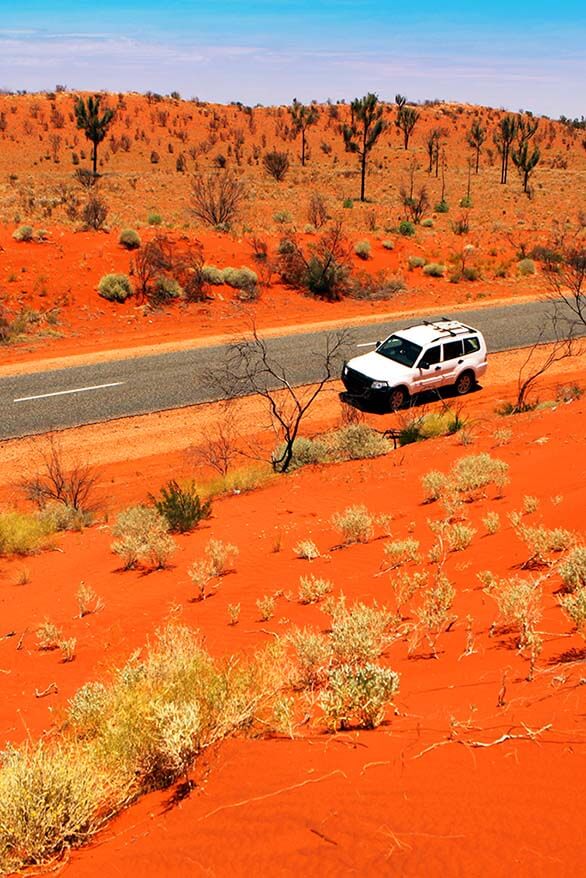
There are a few popular regions of Australia we didn’t cover during this trip – the Great Barrier Reef and the Northern Territories around Darwin, also Western Australia.
We skipped the Great Barrier Reef because we had been there in the past and because our kids were too young to go snorkeling. We left Darwin for another time as well because we visited Australia in November and it’s rainy season in the North. But if you have more time, I definitely recommend adding these two areas to your Australia itinerary as well. Here you can find a suggested trip itinerary for Darwin area .
If you have even more time in your Australia itinerary, Western Australia is also beautiful, especially if you like nature destinations. Just keep in mind that distances are big and so you’ll need at least a few weeks extra if you want to add Perth and Western Australia to your Australian itinerary.
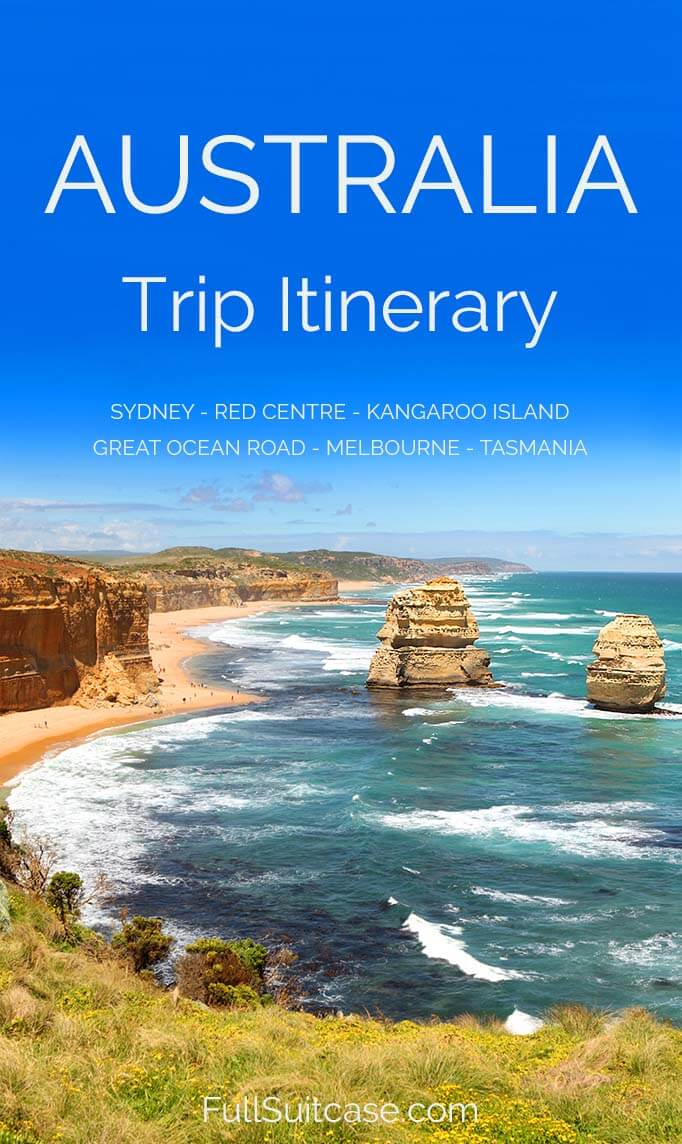
Planning tip: Below you can find our Australia road trip itinerary. To help you plan your trip easier, I split our Australia itinerary into separate blocks per region .
That way you can easily mix and match these ‘blocks’ depending on which areas you want to visit. This will allow you to plan your trip Down Under and create your own perfect Australia itinerary, using our tips and suggestions. Take a look!
Sydney and The Blue Mountains – 4 Days
Probably every Australia itinerary will start or end in Sydney. It’s such a beautiful city and there is so much to see – definitely worth a stop. We don’t spend much time in cities when we travel, but we spent two days in Sydney and loved it. We also visited the nearby Blue Mountains and I think that this stunning area is also a must when visiting Sydney.
Here is what our itinerary in the Sydney area looked like:
- Day 1: Arrival in Sydney. Stay in Sydney for 2 nights (we recommend InterContinental Sydney ).
- Day 2: One day in Sydney . With a family, check out these top attractions and/or Taronga Zoo .
- Day 3: Featherdale Wildlife Park and the Blue Mountains. Stay in Leura for 1 night (or you can simply book a day tour from Sydney).
- Day 4: Blue Mountains. Sleep near Sydney Airport for 1 night (we stayed at Novotel Sydney International Airport ).
TIP: You can either rent a car for the last two days or spend more time in Sydney, stay in the city, and book a day trip to the Blue Mountains . If you travel without kids, I think it’s a much better option to just stay in Sydney. Unless you want to spend more time exploring the Blue Mountains, of course. In that case, you may want to stay there for a few more days.
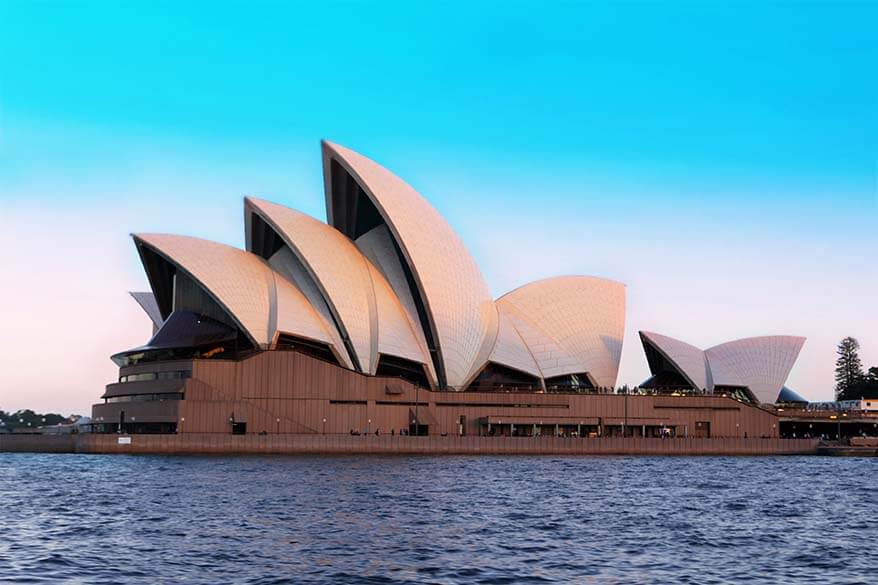
Australia’s Red Center – 6 Days
If there is one part I would include in every Australia itinerary, it’s the Red Center. It’s just so typically Australian and so unique that you really shouldn’t miss it. The trip between Alice Springs and Ayers Rock including West MacDonnell Ranges and Kings Canyon is probably one of the most special trips we ever did, not just in Australia.
Below is a short version of our daily schedule. Here you can find our detailed 6- day itinerary for Australia’s Red Centre, from Alice Springs to Uluru.
- Day 5: Flight Sydney – Alice Springs. Stay in Alice Springs for 1 night.
- Day 6: Alice Springs – West MacDonnell Ranges – Glen Helen. Stay in Glen Helen for 1 night.
- Day 7: Glen Helen – Kings Canyon. Stay in Kings Canyon for 1 night.
- Day 8: Kings Canyon – Uluru (Ayers Rock). Stay in Ayers Rock Resort (Yulara) for 2 nights.
- Day 9: Uluru – Kata Tjuta National Park.
- Day 10: Uluru – Kata Tjuta NP and drive back to Alice Springs. Stay in Alice Springs for 1 night.
TIP: You will need a 4WD for this itinerary. It’s possible to do this trip driving only on paved roads as well, but in that case, you will need to cover the distance of almost 700 km between Glen Helen and Kings Canyon on the paved road (instead of 250km via the Mereenie Loop).
If you decide to do that, then take your time to explore the gorges of the West MacDonnell Ranges a bit more and spend a night in Alice Springs again, before continuing to Kings Canyon. If you are only planning to drive from Alice Springs to Uluru, you can do it in a regular car.
We always use this website to find the best deals and hire cars for our trips. We also always take their full insurance option which is much cheaper than at the counter or when renting directly with local companies.
READ MORE: Red Centre Itinerary – from Alice Springs to Uluru
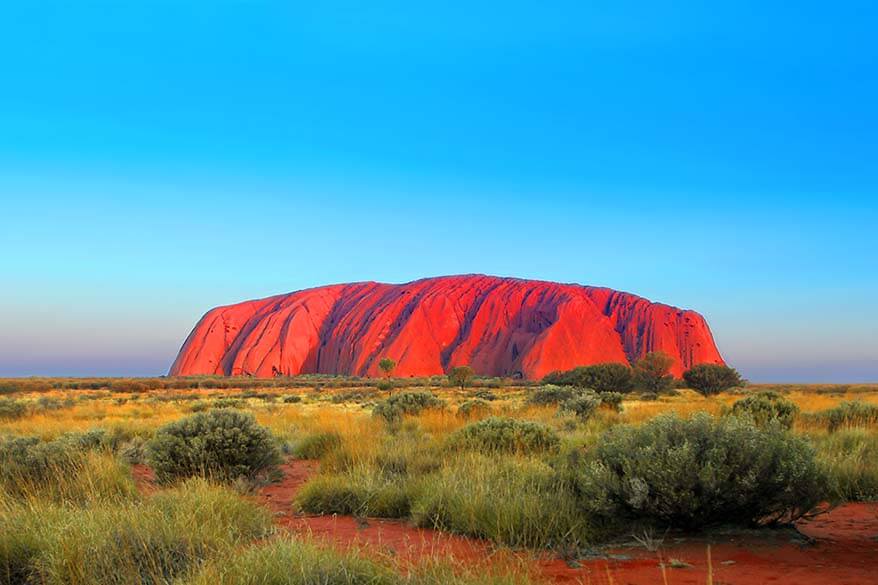
Adelaide and Kangaroo Island – 5 Days
I am so glad we included Kangaroo Island in our Australia road trip itinerary. It became one of our favorite places Down Under and one I’d like to return to again.
Here is an overview of our Kangaroo Island itinerary:
- Day 11: Flight from Alice Springs to Adelaide. Stay in Adelaide for 1 night.
- Day 12: Adelaide to Kangaroo Island. Stay on Kangaroo Island for 4 nights.
- Days 13 – 15: Kangaroo Island.
Good to know: You will need to rent a car in Adelaide and take a ferry to Kangaroo Island . We rented a car from Adelaide and dropped it off in Melbourne. After visiting Kangaroo Island, we continued our Australian road trip via the Grampians National Park and the Great Ocean Road to Melbourne (see further).
READ MORE: Kangaroo Island Itinerary

Kangaroo Island to Melbourne via the Grampians NP and the Great Ocean Road – 7 Days
This part of our Australia itinerary required a bit more driving, but the two main highlights – Grampians National Park and the Great Ocean Road were more than worth it. Here is how our road trip itinerary between Adelaide and Melbourne looked like:
- Day 16: Kangaroo Island to Robe. Stay in Robe for 1 night. There isn’t much to see in Robe, but you need to break the long drive somewhere in the area.
- Day 17: Robe to the Grampians National Park. Stay in Halls Gap for 2 nights.
- Day 18: The Grampians National Park.
- Day 19: The Grampians to Warrnambool. Stay in Warrnambool for 1 night.
- Day 20: Warrnambool to Lorne (Great Ocean Road). Stay in Lorne for 2 nights.
- Day 21: The Great Ocean Road. TIP: try to spot some wild koalas at the Kennett River first thing in the morning.
- Day 22: Lorne to Melbourne Airport and flight to Tasmania. Stay in Hobart for 1 night.
As you can see, we skipped the city of Melbourne at this point and flew straight to Tasmania. This is because we came back to Melbourne at the end of our Australia trip for the flight back to Europe (see further).
LEARN MORE: Best Stops on the Great Ocean Road
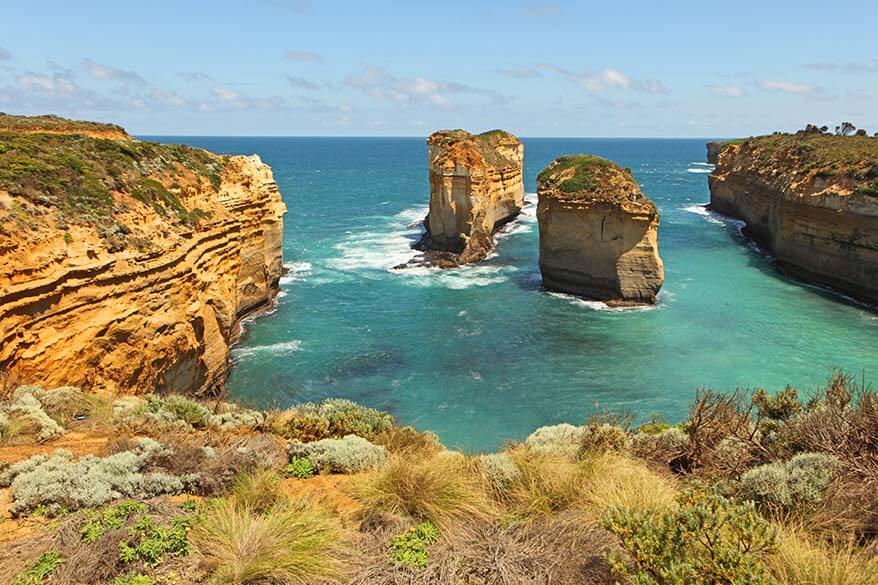
Tasmania – 10 Days
While not many people include Tasmania in their Australia trip itinerary, it’s really worth a trip if you have at least a week to spare. It’s probably worth it for just a few days as well, but it really depends on how much time you have. Below you can see what our itinerary in Tasmania looked like.
TIP: You will need to rent a car in Hobart for this Tasmania trip.
READ MORE: What to See and Do in Hobart
- Day 23: Hobart to Freycinet NP. Stay in Coles Bay near Freycinet NP for 2 nights.
- Day 24: Freycinet National Park.
- Day 25: Freycinet NP to Scamander or Saint Helens. We stayed in Scamander and this is one thing I would have changed in our itinerary. I suggest to drive further till St Helens and stay there instead. Visit the Bay of Fires. Stay in St. Helens for 1 night.
- Day 26: Saint Helens to Launceston. Stay in Launceston for 1 night.
- Day 27: Launceston to Cradle Mountain NP. Stay in Cradle Mountain for 2 nights.
- Day 28: Cradle Mountain National Park.
- Day 29: Cradle Mountain to Strahan. Stay in Strahan for 2 nights.
- Day 30: Strahan.
- Day 31: Strahan to Hobart. Stay in Hobart for 1 night.
- Day 32: Flight from Hobart to Melbourne. Stay in Melbourne .
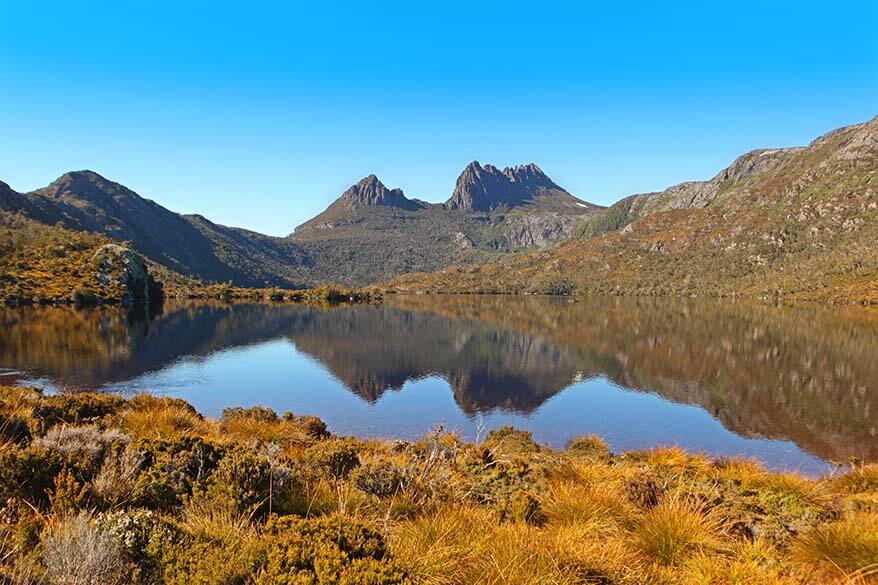
Melbourne – 2 Days
- Days 33-35: Melbourne and flight back to Europe.
If you like visiting cities, you can easily spend several days in Melbourne. We spent here one full day and half a day before heading back home.
READ MORE: One Day in Melbourne
If you are looking for more things to do near Melbourne, you could also visit the nearby Philip Island . It’s a great place to see penguins in Australia.

So this is our 5 week Australia itinerary in a nutshell.
As you can see, I link to some more detailed itineraries per region here and there, so you can find more information in the related posts. I never found the time to write about all the places we visited, so feel free to leave a comment if you have any specific questions about the areas that we visited, but which are not covered on the blog.
READ ALSO: Tips for Planning a Trip to Australia
In our previous posts, you can also find tips and information for visiting Australia with kids .
If you found this post helpful, don’t forget to bookmark it and share it with your friends. Are you on Pinterest? Pin this image!
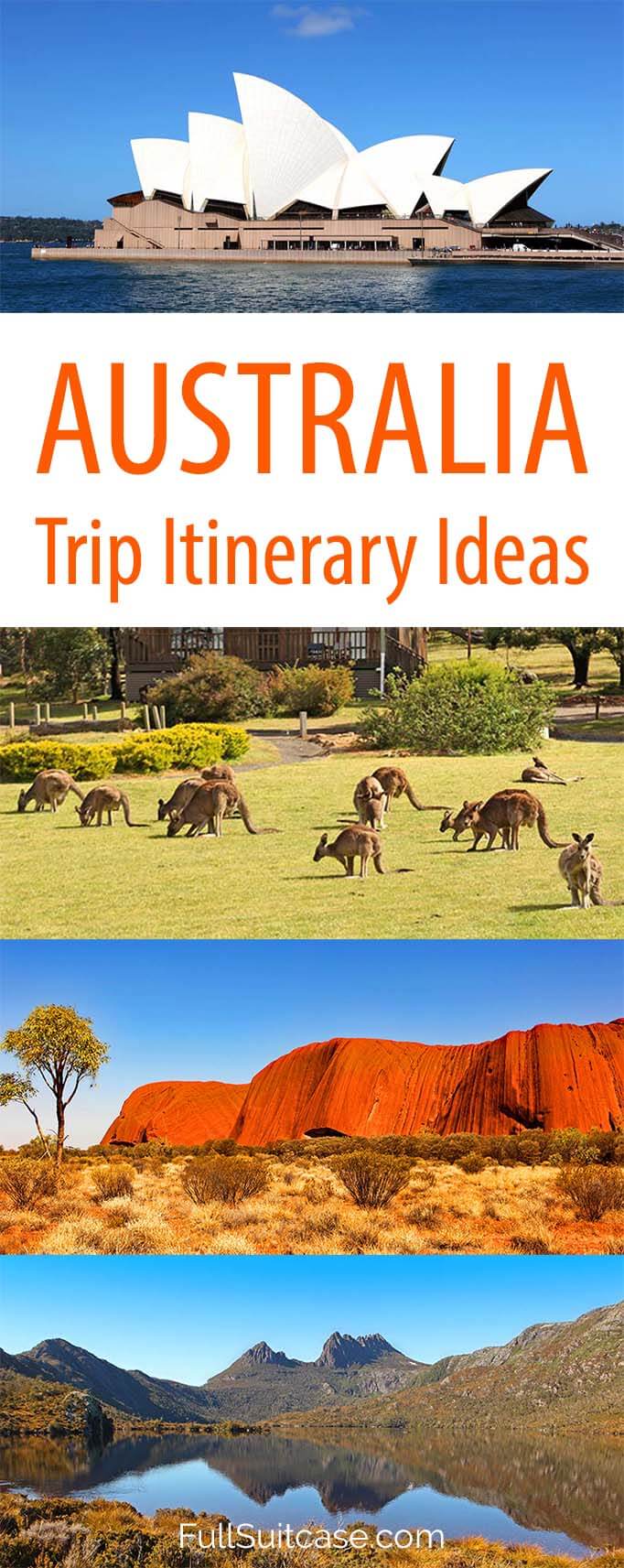
This site uses Akismet to reduce spam. Learn how your comment data is processed .
Melanie Nelson
Wednesday 3rd of April 2024
I love your site..my son and I are looking forward to our trip to Australia and beyond. We intend 4-5 weeks in country. We are flying into Melbourne, being picked up by friends who live in Gippsland. They are giving us one of their cars. We are thinking of the southern part including Great Ocean rode, Adelaide and Tasmania. Hopefully to take in Kangaroo Island. You suggest booking tours and hotels. Are there any suggestions for us. We will fly out of Sydney, spending a couple of days there. Plus visiting Taranga Zoo.
Thank you for all your suggestions. I signed up for your newsletter Melanie
Thursday 4th of April 2024
Hi Melanie, we are travelling at the moment so unfortunately I really have no time for personalised suggestions. If you haven’t done yet, please take a look at our articles about Kangaroo Island, Great Ocean Road, and Sydney for some more detailed suggestions. Have a great trip!
Saturday 28th of October 2023
Hello, Your 5 week itinerary looks very interesting. Can you tell when you did it. In what year and what period of that year? Thank you for your answer.
Friday 3rd of November 2023
Hi Peter, we did this trip in November.
Wednesday 18th of October 2023
Hi, is this a brochure that I can order. I love the sound of this trip. We would like to follow in your footsteps. We are going for 3 months. So may take more time, but, in the same places!
Thursday 19th of October 2023
Hi Maureen, this itinerary is based on our personal experience and highlights some of the best places to visit in Australia, with suggestions on how to plan your time in each area. We do not organize trips and therefore don't have brochures, but you can find some additional articles linked from this one where we share more info about different areas. And yes, you can easily spend a lot more time in each of these places - there's a lot to see everywhere. With three months in Australia, you may also want to add some time at the Great Barrier Reef, Darwin, and Perth areas.
Sunday 16th of July 2023
I love all of your posts. I took your suggestions for Switzerland and Dolomites hiking. It was perfect trips for us. We will visit Australia if Feb. 2024. We only have 5 nights in Tasmania. Where do you think we stay for 5 nights? I love landscaping view, hiking, sunrise/sunset view and taking pictures. For sure we need to stay one night at Hobart for flight out. Thank you!
Tuesday 18th of July 2023
@Jurga, thank you for your quick reply. I will scribble your newsletter and keep up your travel blogs.
Hi Fei, of all the places we visited in Tasmania, I think that Hobart, Freycinet National Park, and Cradle Mountain National Park were the most impressive. Take a look at our Hobart guide for more ideas for the city and surroundings - you could easily fill a few days in that area. Hope this helps.
Thursday 20th of October 2022
Hi Jurga! I'm going to Australia for a month beginning of November and wondering if I should reserve everything in advance. So far I only have my plane tickets and I'm planning to book my accommodation as well but I'd like to be more spontaneous regarding excursions and tours. I'm planning to do a cruise in the Whitsundays Islands, a tour of the Red Center (3-4 days) and some day trips (diving for example) departing from cities (Sydney, Melbourne, Cairns). Do you think that's doable or there's a big chance everything will be fully booked? Thanks a lot for your input! Marina
Hi Marina, if your itinerary is somewhat set and you have the flights within the country and you are booking your accommodations, then I'd also do some research for the tours. It's not just about availability (day tours should normally be ok last-minute, but for multi-day trips, I'd definitely book in advance), but also about the time that it takes to research it all. It's so much simpler to do this at home where you can quietly compare the best options, read the itineraries, customer reviews, see at what time the tours start/end and plan it all. If you use websites like GetYourGuide (which we now use for all our tour bookings), usually, most tours offer free cancelation/date change until 24 hours in advance, so you can always adjust as needed. Also, a lot has changed in recent years and so many tours/tickets do indeed sell out. I'm not sure about Australia, but we just came back from Paris, and some tours I wanted to book were already not available 3-4 weeks before our trip. I don't expect this to be a problem for most day tours in rural Australia, but - as already said - I would definitely book the multi-day trips upfront. It's so much simpler to plan the rest of your itinerary that way. Hope this helps. Have a wonderful trip!

How To Plan A Trip To Australia
Michela Australia Travel Planning 17
Planning a trip to Australia can be an overwhelming experience. Not only because you are going to the other side of the world, but because a cost-effective Australia Trip plan requires time and effort that can get out of your control. Australia is (in) famous for being an expensive destination, and a thoughtful travel plan is key to keep the overall costs within the budget you have for Australia. I have been travelling Australia for many years and have planned all kinds of trips, from bus and train rides to flights and road trips around the country. In +15 years, I have gathered a lot of experience while planning my Australian solo trips, and with this guide put I want to help you plan a trip to Australia on a budget.
Table of Contents
What you need to know before planning a trip to Australia
Travelling around Australia can become the most significant expense if you are not timely budgeting for it and exactly know what impacts the overall travel expenses. Once you know what things not to do in Australia, you will soon realise that travelling on a budget in Australia is possible without breaking the bank. Many things work differently in the Land Down Under, and without a thought-out trip plan, you are bound to overspend and exceed your budget very quickly. These are the main reasons why an accurate travel plan for Australia is necessary. Here are the things you must know:
1. You cannot make changes to your travel plan at the last minute.
Making changes to your Australian trip will increase the cost of your trip by 100% and even more. In Australia, distances are enormous; it takes a long time to move from A to B. You must book cheap flights and internal transportation well ahead to save 30-100% on regular rates. Last-minute bookings of airfares, car rentals will cost you at least up to 100% more than a normal price.
2. Don’t waste time with further trip planning when in Australia
You’re there to discover places and experience a new country, not to plan and revise the itinerary all the time. Most of your trip planning must be completed before leaving home. And you must stick to it.
3. Have a clear focus on what you want to do in Australia
Your trip requires a goal, a purpose. It’s easier to identify areas and destinations to include in your itinerary with a clear focus, making planning a trip more accurate. So, I suggest making a list of the places you want to see in Australia and match the time frame you have set, and then go through them and whittle it down to a maximum of four to five destinations for 20 to 30 days of vacation.
Learn the basics of how to Plan a Trip to Australia
The first things you should consider when making a trip plan are the following:
How much time do you have for your Australia Trip?
If you have one week, focus on one region or city only, with a few nearby attractions. If you have two weeks, you can plan two or three destinations. And the more time you have, the more you can plan. Don’t overdo it. I know it’s easy said than done, but in Australia, good timing is crucial.

Where do you want to go to Australia?
Choosing your destinations in Australia is the hardest part of any trip itinerary. To make it a little bit easier, think back to this question: What is the reason you travel to Australia?
Please make a list of, let’s say 10 places and narrow it down to half of them, according to the time of year you plan to go and how much time you have. Then pull out a map and work out the time frame and transportation options. If you plan a road trip, time varies depending on the destination: if it is in the Outback it will require more time than what Google Maps tells you, so plan in ample time for planning a road trip journey .
How much time do you need to visit the destinations you want to see?
This is one important thing to factor in and a big challenge for first-time travellers to Australia too. Especially when you want to explore Australia on road trips . What looks like a short distance often turns out to be a several-day trip. Australia is a great country for road trips, but you must figure out how much time you need each road trip to pace yourself.
The hardest part about creating a good Australia itinerary is balancing your time frame with the places you want to see and the distances you have to travel.
How much time do you need to visit places in Australia?
As said, whether your trip to Australia is two weeks or three months, the allocated time is vital. It is the most critical element in crafting the perfect Australia Itinerary . You need to know the minimum time you’re going to allocate to each place. On the one hand, you don’t want to miss out on essential things, but on the other hand, you don’t want to stay too long in one place and waste precious time. The key is to optimise your time when travelling around Australia.
Most people do underestimate this critical issue and think two weeks will be enough to visit Australia. But in reality Australia is a vast country with largely deserted areas. If you are travelling to Australia for the first time, I recommend going for at least three to four weeks. If you only have one week to spend in Australia, you should first consider whether the long journey is worth such a short stay. Anyways, keeping the focus on one specific region of Australia is the way to go.
Why Travel Distances in Australia matter when planning a trip
Australia it’s twice as big as Europe and about the same size of the US. Travel distances are vast and often underestimated, and challenging for first-time travellers. By looking at this map, you’ll realise that you cannot put the whole of Australia on an itinerary of a few weeks. That’s why it’s essential first to get a feel for the country’s vastness, then choose a region that most suits your travel style and allows enough time to visit the desired destinations at a slow pace.
A few examples of travel distances in Australia
The distance from Perth to Adelaide is over 2,500km. The best way to get there is to fly. With the GHAN train from Adelaide to Perth , it takes two days two nights. If you plan to drive, you need at least 8-12 days. It means that driving is doable on long-term trips only. From Darwin to Cairns , the fastest way is to fly.
The same for Sydney to Cairns . If you’re on a long journey, driving can be fun; the best approach is to hire a camper van and plan for three weeks on the road. With nearly 3,000km from Adelaide to Darwin , you need between 12-16 days on a road trip or a four-hour flight.
How to make a travel plan – when and where to go
Australia is a vast country with different climates and time zones ranging from tropical to temperate. Depending on which time of the year you plan to visit Australia , you can choose the areas accordingly. If you wish to spend most of your time in the Australian Outback and the tropical regions, May through October will be the best time.
If your trip includes the southern areas of the country, like Victoria and Tasmania , South Australia and Western Australia , then the ideal time is to visit between November through March (Spring to Summer in Australia). Australia’s tropical wet season in Australia’s northern tropical regions is between Nov and Feb, and it’s best to avoid travelling to North West Australia during the wet season. The best time to visit is between May through September (winter in Australia).
Places not to miss in Australia: Where To Start
There are many places in Australia , and this may be challenging for you in your choice. When I went on my first trip to Australia in 2004, I chose a classic round-trip itinerary.
From Sydney to Melbourne along the South East Coast , then a 3-day trip to the Great Ocean Road , on a guided tour over to Adelaide to then fly into Alice Springs and visit Uluru and the Red Centre to end my trip with a visit of the North Tropical Queensland and coming back by bus back to Sydney. And I spent 9 weeks seeing all of these destinations. Here are the top destinations I recommend having in your trip itinerary plan of Australia:
What to add to your Australia trip itinerary
- Sydney is a unique city that offers you places that stand out, like the Opera House, Sydney Harbour Bridge, and Bondi Beach. I will start your trip from Sydney and build your itinerary from there.
- Cairns in Tropical North Queensland is the gateway to the Great Barrier Reef for snorkelling and scuba-diving and many more attractions like the Daintree Rainforest. They both belong to World Heritage Sites, and they should be on your plan when visiting Australia for the first time.
- Whitsundays , the Gold Coast , and Fraser Island are unique places where you can experience dunes adventures, sailing and snorkelling, as well as hiking in the forests. If you love water sports, then Queensland should be on your bucket list for Australia.
- Uluru (Ayers Rock) is a must-see place, as it is an icon of the Outback and a rewarding experience for a fantastic road trip in the Australian Outback.
- South Australia , with Adelaide , offers excellent vineyards and a beautiful coastline. You can plan a trip to Barossa Valley for wine tastings. Or cross over to Kangaroo Island for natural attractions, wildlife and isolation at its best.
- Tasmania is a place that also fascinates local and international visitors alike with its many national parks, abundant walking trails, stunningly beautiful beaches, great food and the freshest air in the world. I love Tassie and have been 3 times on my trips. I recommend it if you love hiking.
- The Top End is where you love tropical national parks and indigenous heritage in the Northern Territory with Kakadu National Park . Darwin is a place not to miss out if you love adventure and enjoy the typical Australian lay-back lifestyle.
Planning Road Trips around Australia
Driving in Australia for tourists isn’t an issue, and anyone can drive, even if you drive on the left-hand side. I recommend going on a road trip at least once. Choose your self-drive destinations based on your level of driving experience. Keep in mind that four-wheel drive can be challenging, especially if you have no experience. Anyone can go on an Outback road trip on sealed roads with no problems – even if you’re travelling alone, you can enjoy self-driving in Australia. And I’m the living example, with over 15 road trips, of which 10 completely alone.
You can check what to know before hiring a rental car in Australia.
If you are thinking of going on a greater adventure and travel around the country by campervan .
Things To Know About Road Trip Planning in Australia
Before creating a road trip plan for Australia, answer these questions:
1. What distances can you drive to on your own ?
2. What alternative ways of transportation can you consider ?
3. How much time do you need to visit a place or an area ?
Once you’ve done that, cross some destinations off your list and shape more Australia Itinerary Ideas .
If you have three or four weeks for your trip, reduce the list to four or five places. Once you have the rough itinerary set, you’re halfway there. The next important step is to make a travel plan for Australia that perfectly fits your budget and time frame.
Here are my best tips on how to plan a road trip in Australia .
Let a book help you plan your trip itinerary to Australia
That’s the reason I have created a handy Australia guidebook to take you through all the above steps of planning a trip to Australia. It shows how much time you need for each place, what you can and can’t do, how to maximise your time and make cost-effective choices with destinations, transportation and finally, set up the right itinerary for you. The first part focuses on the how-to. The second part outlines five detailed itineraries around Australia that you can extend or shorten with suggested places to visit and things to do in Australia.
Now you won’t need six months or even six weeks to create your itinerary. With this book in hand, you’ll need one hour to read it, plus a week to make your choices and put together a detailed travel plan.
A well thought out itinerary allows you to see the best places of Australia without having to make changes last-minute. It means you’ll maximise your time and potentially save up hundreds if not thousands of Australian dollars on your trip. The guidebook stretches from iconic landmarks to less-visited small towns and regions of Australia, and it is the reflection of +15 years of my explorations of the country.
I wrote this book from my experience as a solo female traveller in Australia to help women travel to Australia safely and with a perfect travel plan. Over the past 5 years, the guidebook has helped thousands of travellers planning their Australian Adventures.
Check out our Australia Itinerary Guide Book
Australia Trip Preparation
This easy step-by-step trip planning guide helps you quickly go through all those crucial things you need to do when your travel plan for Australia is ready, and you want to move to the next stage: from the planning to arranging and preparing for your trip. You don’t need an over-detailed trip plan. What you need now is making all necessary travel arrangements before going to Australia.
Here is the list of what you need to prepare at home for your Australia Trip.
- Find the best flight deal to Australia. The first thing to do when you have a fixed plan, book your return flight to Australia. Book your flight between 2 and 3 months for low-season and 6-8 months for high season (Christmas in December and January, and Easter time). On this page to read how to find the best flight deals . And here you can read my flight review with Emirates Australia Ecomony Class .
- Book All your Internal Flights I recommend booking all your internal flights that are the frame and backbone of your travel plan soon after booking your flight to Australia. Read my tips on how to book domestic flights .
- Browse through all accommodation options There is no need to book all accommodation before going to Australia, but you should have a rough idea of where you want to stay. I would book the first 3-4 nights if you travel in the shoulders months, but if you travel during the peak season, book all accommodation in Australia and use a site that allows cancellations and changes with no fee, like booking.com .
- Get your Passport and Travel Visa for Australia Make sure your passport is valid for at least 6 months after the date of your return ticket. And apply for an Online Visa for Australia . It’s easy and uncomplicated, and you do it online in 1o minute.
- Buy Travel Insurance I’d buy travel insurance for Australia soon after having purchased the flight tickets. If you plan outdoor activities, make sure that your plan covers all activities you plan to do in Australia.
- Check Baggage Allowances for Australia And also what you can take into the country and what you can’t take on the plane. In this article, I thoroughly explain how much weight you can carry in your luggage and cabin bags with all airlines, plus Australia’s baggage rules and restrictions .
- Get an international driving license If you plan to drive in Australia as a tourist and rent a car, you need an English driving license. If your driving license is not in English, then you need a translation that you can provide from the local transport authority in your home country.
- Packing for Australia Packing for Australia isn’t something to take for granted. The weather is, most of the time, not really what you expect. The myth that Australia has warm and sunny weather all the time isn’t a rule of thumb. Before packing for Australia, read about what to wear when in Australia .
- How to exchange money in Australia I recommend using debit cards and credit cards with low fees. Do not exchange money in your home country. Use the local ATMs instead to withdraw Australian dollars. All over the country, Mastercard and Visa have widely accepted debit/credit cards.
Pin it for later
Resources for planning your trip to Australia
Here is a list of popular articles and guides that will help you plan a trip to Australia .
All Travel Destinations in Australia
The Complete Travel Guide for Australia
Tips for Travelling Solo in Australia
Trip Planning Services for Australia
Back To Rocky Travel
This article was first published in March 2017 – last updated in May 2023
If you find this article helpful for your trip, I’d appreciate it if you could support Rocky Travel and book your accommodation, rental car, or purchase my book using the links in the box below. Thank you!
BOOK YOUR TRIP WITH THESE RESOURCES
Get Travel Insurance For Your Trip
Travel with peace of mind: 👉 Compare and Buy Travel Insurance .
Book Accommodation WorldWide
Find the best deals for hotel, homes, villas with 👉 booking.com .
Join Small Group Tours Of Italy For Over 50
Explore Italy with our 👉 Small Group Tours Of Italy .
Find The Best Tours Deals For Australia
Scout for the best guided trips and tours with our 👉 Australian Tours Guide .
Plan & Book Your Australian Adventure
Create the perfect Australia Trip Itinerary with 👉 Your Australia Itinerary eBook and/or Book A Trip Planning Call .
Plan Any Trip With These Resources
Check out our 👉 Travel Planning Bible .
Michela Fantinel
→ Michela Fantinel
Related Posts
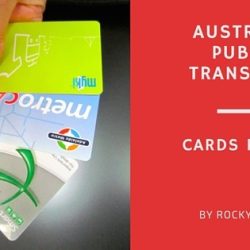
Australia Travel Planning
A Review of Australia Public Transport Cards
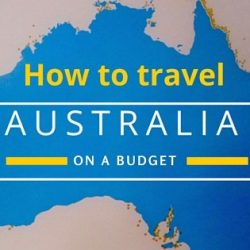
How To Travel to Australia on a Budget

A Guide to Long Term Travel in Australia
17 comments.
Cndemi June 5, 2017 @ 12:28 pm
Hoping and trusting to visit Australia before this year ends!
rockytravel June 10, 2017 @ 3:52 pm
I hope you can visit Australia soon! You can get the free chapter of the book for free!
Mary Joyce June 6, 2017 @ 6:18 pm
Great tips you got here. And I totally agree with you that planning is an essential element if you want to travel successfully on a shoe-string budget.
Gordon June 9, 2017 @ 10:37 am
Exactly what I was looking for. We are off to Australia later this year for the first time so thanks for the tips.
rockytravel June 10, 2017 @ 3:53 pm
Glad you liked it, Gordon! Get my book here: https://www.rockytravel.net/australia-guide-book/
Bryan Kelvin June 15, 2017 @ 10:12 am
This is the most comprehensive and informative travel article I have ever seen. Fabulous job! You haven’t missed a thing.
rockytravel June 24, 2017 @ 4:46 pm
Thanks Bryan! Glad you liked my guide on how to travel around Australia! 🙂
Glen - Eastcoast Sailing June 19, 2017 @ 2:04 pm
Awesome tips, Michela. I agree on not doing extra research. If possible, have everything planned and stick to it so you don’t need to waste some time doing research on where to dine, etc. I bet your book would be very helpful for those planning to travel around Australia.
Rocky Travel June 24, 2017 @ 4:49 pm
Hi Glen, yes my guide is a must-have for an Australian adventure! Here is the link: https://www.rockytravel.net/australia-guide-book/ ! 😉
Richard June 24, 2017 @ 3:04 am
What a great article and tips for Visiting Australia. Extra research is always the best way to plan trips. I like to know everything about any country I visit including history. This is helpful especially if you are visiting a country with a different culture, knowing the history can explain that culture, and avoid any cultural faux pas.
Australia is a beautiful country (my home) and we love showing the new visitors what we have to offer. From amazing beaches to the vast inland deserts. As the well know poem says “I love a sunburnt country, A land of sweeping plains, Of ragged mountain ranges, Of droughts and flooding rains”
We love your blog and have included you in the Best Female Travel Bloggers.
Stephen Robert April 11, 2018 @ 1:26 pm
This is a great blog very helpful for me! Thank you so much for sharing your knowledge.
rockytravel October 10, 2017 @ 3:22 pm
Thanks Richard for stopping by and the shout-out on your top10 travel, much appreciated. I’ve shared it! 🙂
Andy April 13, 2018 @ 10:58 pm
Great tips Michela! Any thoughts on our initial plan? The-big-trip-aussie-aussie-aussie-part-1
Mukul April 20, 2018 @ 1:20 pm
Hi Rocky Travel, this is a great article! Helpful for my trip to Australia. Keep updating more about Australia trip plan and destinations where i want to visit.
James January 2, 2021 @ 1:04 pm
Michela, these are great tips! Thanks for doing your research and writing this article! I’ve always traveled only on tourist tours. And last year I wanted to organize a trip myself. It’s great that you can plan your own route, choose the place where you want to stay, and the prices that you like. I used to feel a little discomfort communicating with tour operators, as I asked a lot of questions and it seemed to me that I annoy the tour operators. Your advice will be very useful to me. I am just planning my next trip with my family. Do you have any articles on traveling with pets? Best regards, James.
Anne-Marie November 14, 2021 @ 10:48 am
We are going to Australia next year so this is just what I was searching for. I think I will also invest in your Australia Guidebook.
Michela @RockyTravelBlog November 19, 2021 @ 12:00 pm
That’s great to hear, Anne-Marie! 🙂
Leave a Reply Cancel reply
Your email address will not be published. Required fields are marked *
Privacy Overview

Planning a Trip to Australia? 10 Important Things to Know
M illions of visitors from North America, Europe, Asia, and other parts of the world flock to the land down under in search of their own adventures–whether its for the food, the amazing wildlife, the incredible views, or just the sheer size of the place, Australia is full of surprises!
Whatever your reason for taking a trip to Australia, let’s talk about some of the things that will help you navigate your Australian experience as smoothly as possible.
Taking a Trip to Australia? What to Know
The seasons.
You might know this already, but since Australia is in the Southern Hemisphere, its seasons are reversed from the Northern Hemisphere. However, it’s not quite as simple as that. There’s a difference from the country’s south versus the north.
The best time to travel to southern Australia (Sydney, for example) is November to April, but that’s different when you’re visiting the north (like the Top End or the Great Barrier Reef) where this time of year is humid and soggy season.
The bottom line is check out the weather for exactly where you’ll be staying on your trip to Australia and know what weather conditions to expect.
The feeling of being in the middle of nowhere
The gaps between major cities are incredibly far in Australia. Not only are they farther in the United States or Europe, there are also typically far fewer towns between them.
Once you’re out of any major city, you’ll feel like you’re in the middle of nowhere. Rather than an hour or two between cities or towns, it could be several, so plan accordingly, and keep a full tank of gas and any emergency supplies you’ll need in case your car breaks down.
The amazing natural areas
Australia is known for it’s natural beauty and for plant and animal species that are found nowhere else in the world.
As these plants and animals have become threatened by extreme weather events and humans encroaching into their habitats, Australia has made the decision to set aside at least 30% of its land mass for conservation in a bid to protect them.
There are literally thousands of national parks and conservation reserves in the country, so no matter where you are in Australia, exploring the country’s incredible landscapes should be easy.
Electric outlets are not like ours
It might seem like a small thing, but as you’re packing for a trip to Australia, it’s something you’ll need to keep in mind. The country uses differently-shaped electric outlets. They’re not like the British ones, nor are they American or European either.
Australia has their own special electric plug sockets, so, if you’re taking any small appliances, like curling irons, etc., just remember to buy electric outlet converters before your vacation.
Kangaroos, koalas, and other animals unique to Australia
Australia is home to animals found nowhere else on earth, including the koala, kangaroo, wombat, platypus, echidna, and others.
You may spot them in the wild, but it’s more likely that you’ll need to venture out to a reserve or nature park away from the city to see them.
Of course, there’s always a chance to spot a kangaroo or koala in any area outside the city.
Tipping isn’t a common practice
Hospitality workers in Australia are paid a whole lot better than in the US and many other parts of the world, so workers don’t necessarily expect tips and don’t rely on them to make a decent living.
That said, tipping is, of course, appreciated. If your budget allows, you can tip up to 10% of the bill , especially when in a group setting where more items are ordered and extra service is required.
Beer connoisseur? Go local
If you’re heading out to a bar in Australia, it’s best to go local when it comes to your choice of beer. Australia has a ton of great local brands as well as micro-breweries that are definitely worth trying.
If you’re unsure about what to try or where to go, there’s no shortage of award-winning micro-breweries to choose from!
Mind the sun
You may know this already, but the sun is REALLY STRONG in Australia, so stock up on sunscreen, and respect the fact that you’ll probably get sunburned a lot quicker than you would back home. In fact, a sunburn can occur in as little as 15 minutes in the hot Aussie sun.
A high-SPF sunscreen, sun hat, and clothing and beach wear that protects your skin is your best bet if you plan to hit the beach—or spend any time outdoors. Don’t let a painful sunburn ruin your trip when it’s relatively easy to prevent.
The distances between every location
Many people make the mistake of trying to explore the entirety of Australia in a couple of weeks, not realizing that it’s a vast continent as well as a country.
Instead, it’s a better idea to choose two or three areas to travel extensively, and check them off your travel list. If you don’t, much of your visit will be spent traveling, not enjoying everything the country has to offer. For example, did you know that it takes nine hours to drive from Sydney to Melbourne?
Driving in Australia
Speaking of driving, Australians drive on the left side of the road, so if you’re coming from the United States, this is something you’ll have to get used to quickly.
Here are some other things to know about driving down under :
- Australia uses the metric system of distances and speeds.
- Australian cars are right-hand drive vehicles.
- In Australia, you can drive with a foreign (English language) license for up to three months.
- Seat belts are required for all of a vehicle’s occupants, and these laws are strictly enforced. Children and babies must be restrained in an approved safety or booster seat, in some states up to seven years old.
- The blood alcohol limit is .05% throughout Australia, with zero limits for learners and drivers with provisional licenses in some states.
- In case of an accident involving injury or death, the police must be contacted, and the driver is legally required to render assistance. The penalties for leaving an accident scene can be severe.
- Speed limits are clearly posted. A default 50km/hour speed limit applies in urban areas with street lights in the rare event that there is no other signposted limit.
- Speed cameras are used in all states and territories of Australia, with some states using hidden cameras. Point-to-point speed checks (over a certain distance) or aerial speed checks are also used in some places. There is no defined margin of tolerance for speeding.
- Rental vehicle companies may ask you to take a short road rules test focused towards tourist requirements.
- Permits can be necessary to travel through aboriginal communities and towns in certain remote areas.
- As mentioned, drivers need to be prepared and self-sufficient before travelling through remote areas. Even on major regional roads, service stations may not be open overnight, so plan ahead when it comes to getting fuel.
- Many accidents occur at night due to the presence of native animals which become more active in the evenings, for this reason some car rental companies impose a curfew on driving after sunset in Western Australia and the Northern Territory.
There you have it! Ten things to keep in mind before and during your trip to Australia. Is Australia on your wish list of places you’d like to visit–or may-be even live someday? Leave us a comment.
______________
Flight Hack: How to Use the 24-Hour Rule to Save Big
10 Unique & Memorable Souvenir Ideas for Your Next Vacation
5 Simple Tips for Healthy Travel + What to Include in your Travel Health Kit
You can also find MomsWhoSave on Pinterest , Facebook , Instagram , and Twitter . Join us for updates.
Don’t miss a thing! Subscribe to MomsWhoSave’s newsletter .
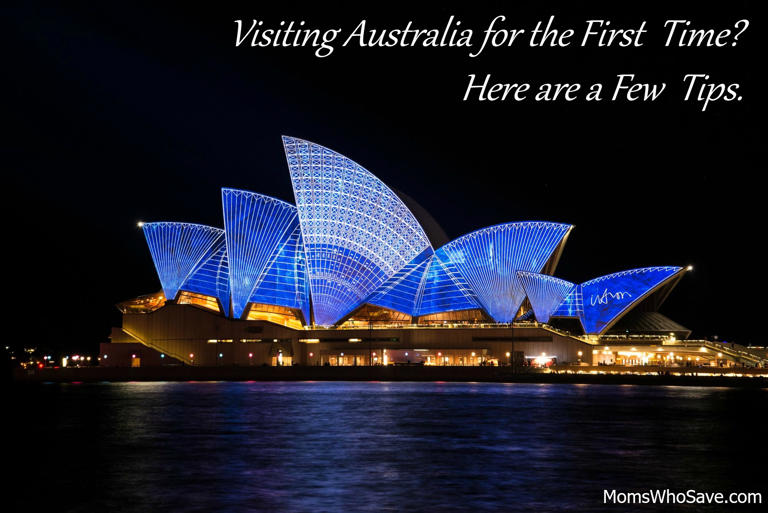
- Australia Tours
- Australia Travel Guide
- Australia Travel Advice
Planning a Trip to Australia: The Ultimate Guide
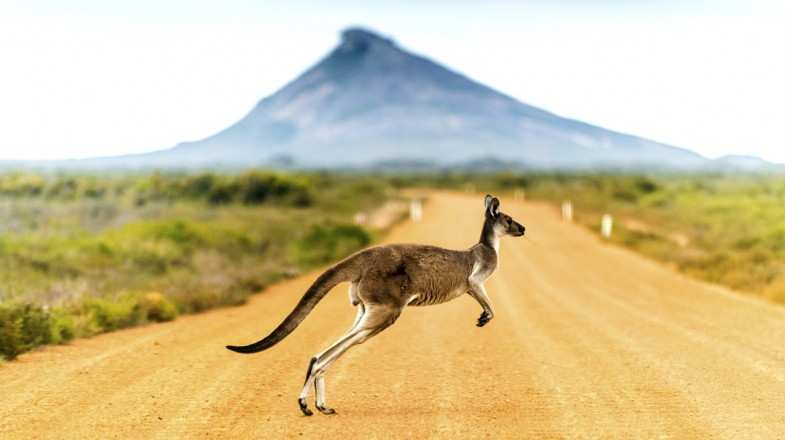
- 3.74K views
- ~ mins read
With its super-cool cities, endless coastline and extraordinary wildlife, Australia has all the elements needed for a superb vacation. It is a country of astounding beauty, from the beaches of the Whitsundays to the wild terrains of Tasmania, Cape Le Grand and the Kimberly. Scenic roads run through an interior of intriguing towns and landscapes. With so much to see and do, planning a trip to Australia can be overwhelming. Use our guide to help you.
Must Visit Places in Australia
Australia’s size means you are unlikely to see everything you want to during a single trip. However, most Australia vacation packages cover a couple of regions and a handful of cities at least. Here are some places you might want to add to the list:
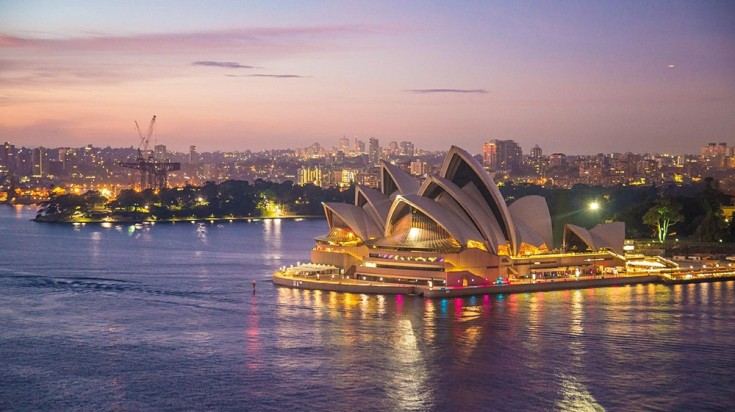
Sydney : Sydney has iconic landmarks and a lively food scene, as well as beaches, islands and mountains only minutes from the city. Whether you are keen to climb the Sydney Harbour Bridge, spend a weekend at Hunter's Valley or would rather spend an afternoon in the Blue Mountains, Sydney has something for everyone — city lovers, foodies and nature geeks included.
Brisbane : Its modern galleries and festivals are perfect for culture lovers, but Brisbane has an outdoorsy vibe too. Adventurous types can paddleboard or kayak on the river, rock climb at Kangaroo Point Cliffs or visit nearby Moreton Island, which offers snorkelling, diving, surfing and even sandboarding. Brisbane is also a base for exploring the Great Barrier Reef , which can be reached in around four hours.
Melbourne : With its colourful street art and hipster coffee shops, Melbourne is considered Australia’s coolest city. Home to the National Gallery of Victoria as well as many small galleries, it is perfect for art lovers. Foodies will not be disappointed either. The city boasts a diverse range of restaurants, drinking spots and markets. Planning to drive the Great Ocean Road ? The starting point is an hour and a half from the centre of Melbourne — making it a convenient centre of operations.
Adelaide : Adelaide is best known for its lively arts and music festivals including WOMADelaide and the Adelaide Fringe. With one of Australia's top wine regions, the Adelaide Hills, on the doorstep, it is also an ideal base for wine lovers. Nearby Kangaroo Island — a haven for wildlife where you can see many of the country’s endemic species — makes the perfect day trip.

Alice Springs : Best-known as the base from which to explore Uluru National Park, Alice Springs has a lot more to offer. This is the town where you can learn about Aboriginal culture and pick up some aboriginal art too. Outdoorsy-types will love hiking in the nearby West MacDonnell mountain ranges or Kings Canyon.
Gold Coast : Beach lovers should bump the Gold Coast to the top of their itineraries. As well as 35 miles of gorgeous beaches, this happening stretch of sand has surf vibes, a thriving culinary scene and plenty of craft beer flowing. The local neighbourhoods of Broadbeach, Burleigh, Coolangatta and Southport can be explored on foot or by bike, with plenty of stops in cool cafes along the way.
Perth : Perth is for beach lovers, with an amazing nineteen beaches on its doorstep where you can swim, snorkel and dive. Foodies will enjoy exploring the city’s neighbourhoods with their small bars and independent restaurants or visiting nearby Swan Valley, Australia's oldest wine region. Perth is crammed full of museums too, ensuring you won’t be bored. Cycling around Rottnest Island, with its 63 beaches, makes the perfect day trip.
Darwin : Surrounded by national parks including Kakadu and Litchfield, Darwin is a city for people who love nature and the outdoors. With exotic Asian food, palm trees, and tropical sunsets, this city has a different vibe from the rest of the state capitals. Chill out in the outdoor bars and restaurants, explore the markets, admire the colonial architecture or get up close to some crocs at Crocosaurus Cove.
When to Go to Australia
Advice on when to visit Australia can be confusing; the country has four clearly defined seasons, but its size means that even within them, the weather can vary considerably. And remember: the north is closer to the equator than the south, meaning it's warmer.
Northern Australia
- December – February (Summer): High season. Tropical, with humid conditions and frequent thunderstorms.
- March – May (Autumn): Less crowded, mild and dry. An excellent time for walking and hiking.
- June – August (Winter): Low season, which is uncrowded with cheaper flights. Suitable conditions for diving and snorkelling.
- September – November (Spring): Warm and dry until the tropical weather approaches. A good time to see wildlife and visit rainforests.

Southern Australia
- December – February (Summer): High season. Also the hottest and busiest time of the year, when many locals take their holidays from work.
- March – May (Autumn): Cool and fresh. An excellent time to visit vineyards, enjoy a food or wine festival, go walking or camping.
- June – August (Winter): Less crowded and cool. Good for snow skiing in the Australian Alps, and for walking and hiking, especially inland.
- September – November (Spring): Mild and dry. Good for visiting national parks and seeing wildlife, kayaking and surfing.
For more information on when to visit Australia, check out our travel guide on the Best Time to Visit Australia .

How Long Should You Stay?
Despite the size of the country and the long flight, a trip to Australia doesn't have to be especially lengthy. If you can cope with jet lag, you can see a great deal in two weeks. Most Australia itineraries are between seven days and three weeks long. Fourteen days is long enough to explore Sydney, Brisbane and the Gold Coast, or Sydney, Uluru and the Great Barrier Reef. In three weeks, you can overland from Perth to Darwin, or from Melbourne to Sydney. Five to ten weeks is time enough to explore either the east or west coast and overland through the outback via Alice Springs. In three months, you can see most of both coasts plus journey through the interior.

Getting Around
Of all the methods of travel around Australia, flying gets you where you want to go in the fastest time. There are plenty of domestic airlines offering good deals, including Qantas, Jetstar and Tiger Airways. Flying may be quick and convenient, but it is also expensive. Taking the bus is cheaper — and eco-friendlier. Domestic bus companies such as Greyhound offer hop-on-hop-off travel around the whole country. Train travel in Australia is another green option. A journey along one of the country’s scenic rail routes such as the Ghan or the Indian Pacific can be spectacular. If you want to stop at more remote spots, then driving is the answer. With a car, you can also drive one of Australia's iconic road trips such as the Great Ocean Road.
Budgeting for a trip to Australia
Traveling around Australia can be costly. Hotels and restaurants are as, if not more, expensive than those in Europe and North America. Drinks are not cheap either — Australians pay one of the highest alcohol taxes in the world. However, your most significant expense will undoubtedly be transport — the long distances will eat into your budget. Despite all this, Australia is renowned for being backpacker-friendly, and if you are happy to seek out budget options, you can keep costs down. Here are some examples of daily budgets:
- AUD 60 (USD 42) per day will cover basic hostel accommodation, food and transport.
- AUD 100 (USD 70.5) per day will pay for a double room in a basic hotel, a meal out and transport.
- AUD 150 - 300 (USD 105 – 211)* per day will cover a room in a decent hotel, dinner and a day-trip.

All foreigners traveling to Australia must have a visa to enter the country. There are three types available:
1. Visitor visa
- Granted for three, six or twelve months to anyone visiting Australia as a tourist.
2. eVisitor
- Available to visitors from EU countries plus those from Andorra, Iceland, Monaco, Lichtenstein, Norway, Switzerland and Vatican City.
- Grants entry to Australia as many times as you want during a 12-month period for three months at a time.
- Free and applied for online.
3. Electronic Travel Authority (ETA)
- Available to visitors from EU countries the UK, the USA, Brunei, Canada, Hong Kong, Japan, Malaysia, Singapore and South Korea.
- Processed instantly for a fee of AUD 20 (USD 14.13)* and linked to your passport.
Take some time to plan your trip to Australia properly — you’ll be going exactly where you want to, and you’ll spend less money and time getting from place to place. You’ll also be able to make those bucket-list experiences happen!
Insider's Tip: Pick up some great books by local Australians to read before or during your trip. You'll gain deeper insight into the people and places you visit and how Australia has become the country it is today. Whether you enjoy autobiographies or novels, there are numerous great Australian books to help you really get away on your vacation Down Under. – by Bonnie Way from The Koala Mom .
Related Articles
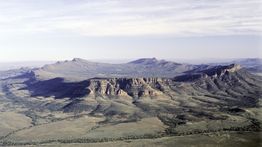
Accommodation in the Flinders Ranges: Where to Stay?
Known locally as 'the Flinders', the remnants... read more
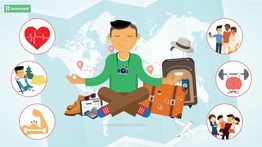
10 Ways Travel can Improve Your Health and Happiness
You can share the above image on your site vi... read more
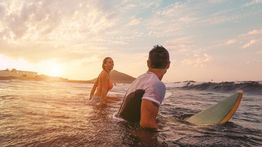
Honeymoon in Australia: Everything You Need to Know Before You Go
There isn’t much you can’t do on a honeymoon ... read more
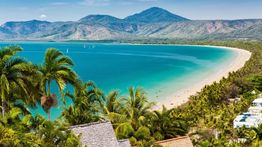
East Coast Australia: Destination Travel Guide
East Coast in Australia is rightly hailed as ... read more
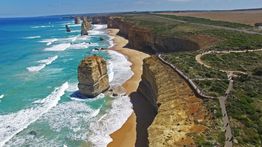
12 Apostles from Melbourne: A Perfect Road Trip
Perhaps the most iconic and memorable sight o... read more
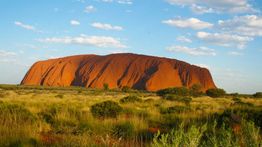
Ultimate Guide for an Uluru Tour
One of the more fascinating moments of your l... read more
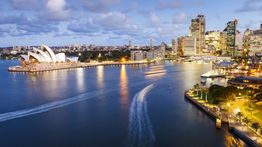
Best Time to Visit Sydney
Sydney, sweet Sydney! With an iconic harbour,... read more
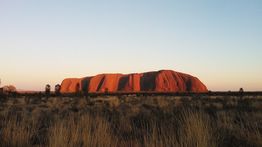
Accommodation in Uluru Kata-Tjuta National Park: Where to Stay
Easily one of the most spectacular natural ar... read more
Related Categories
- How Long To Stay In Australia
- Top Australia Attractions
- Top Australia Destinations
- What To Do In Australia
- When To Visit Australia
- Previous Post

Popular Destinations
- Europe Tours
- Everest Base Camp Trek
- Italy Tours
- Spain Tours
- Argentina Tours
- Canada Tours
- Sri Lanka Tours
- Chile Tours
- Antarctica Tours


Driving Around Australia: Planning The Perfect Big Lap Of Australia
This post may contain compensated links. For more information, read our disclaimer here .
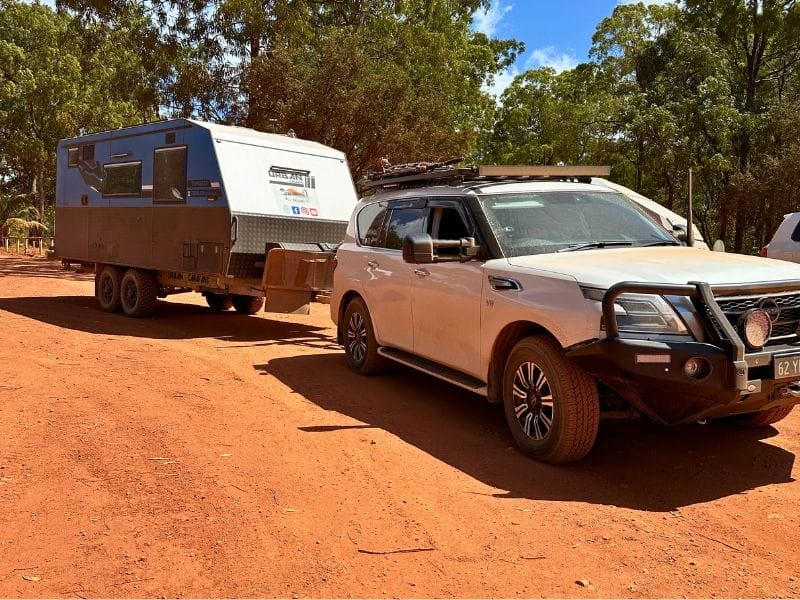
So you’ve decided to do the big lap driving around Australia in your caravan, motorhome, RTT or camper trailer? Fantastic! This amazing experience will give you a true sense of Australia’s size and diversity.
Kev and I hit the road full-time in June 2023. However, travelling around Australia has always been on our Bucket List. On our second date we agreed we’d buy a caravan and travel full-time.
We’ve been in your shoes wondering which caravan to buy, which rig to buy and where and when to start planning.
But if you want to make the most of your big lap, planning ahead is essential. Here are some tips to help you get started.
The beauty of road-tripping around Australia is that there is something for everyone. Whether you’re into beaches, mountains or the outback, there’s a perfect spot somewhere in our huge country.
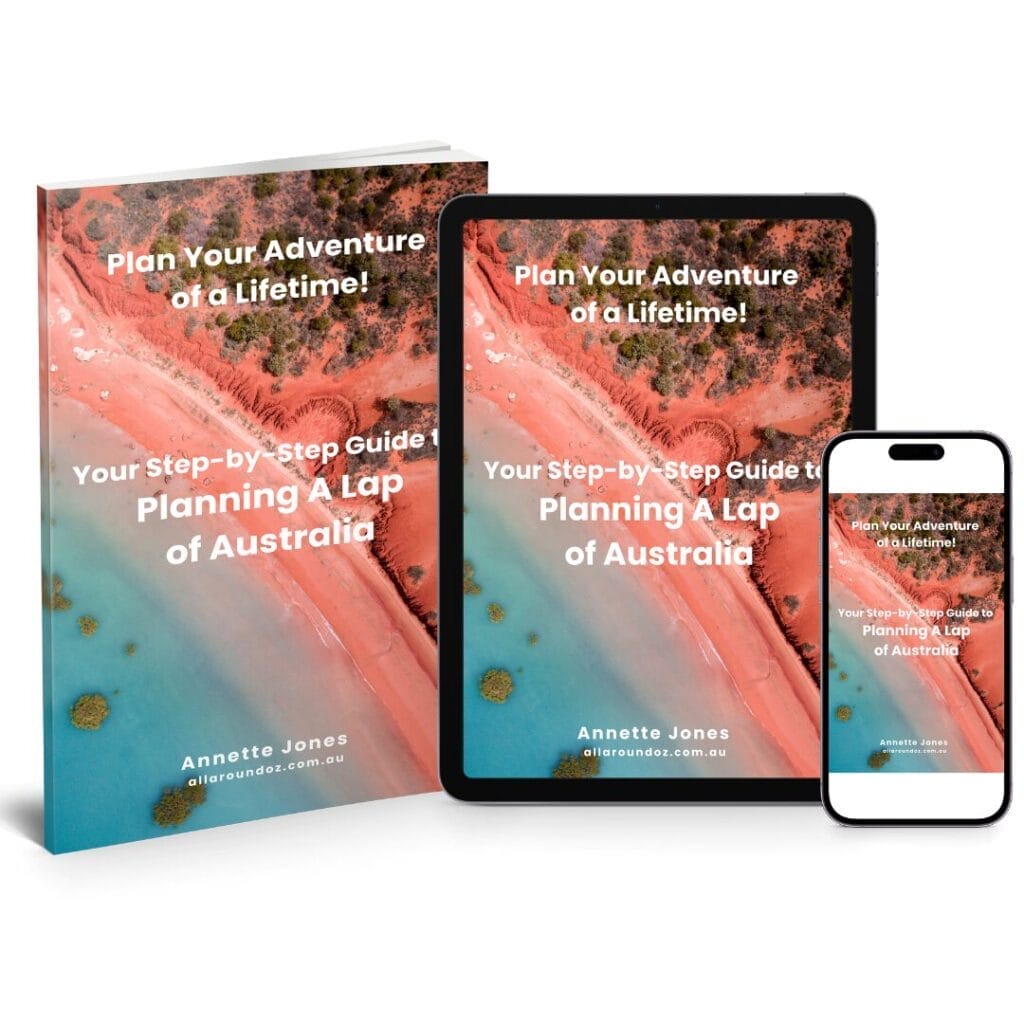
But before you can start enjoying the scenery, you need to plan your route. This can be tricky because there are so many options! One way to make things easier is to choose a state or region and focus on exploring that area in detail.
Another thing to consider when planning your trip is what kind of traveller you are. If you like free camping and being active, then chasing down all the free campsites around Australia might be right up your alley.
If, however, you prefer staying in caravan parks and sticking to the blacktop and only free camping once or twice a week, then it’s best to map out these stops well in advance.
Whatever type of traveller you are, one thing remains the same: preparation is key! So sit down with your favourite beverage and plan your dream road trip around Australia . You won’t regret it!
Here’s a step-by-step guide on how to plan the perfect trip around Australia.
Decide On Your Budget And Time Frame
Table of Contents
Determining your time frame and budget for driving around Australia will help narrow your options and simplify the planning process. For instance, if you have a limited budget, you might want to stick to free campsites and cheaper caravan parks.
If you have more time, you can afford to take your time and explore different areas in depth. Whatever your situation, it’s essential to be realistic about what you can and can’t do.
Choose Your 4WD, Caravan, RTT, Motorhome or Camper Trailer
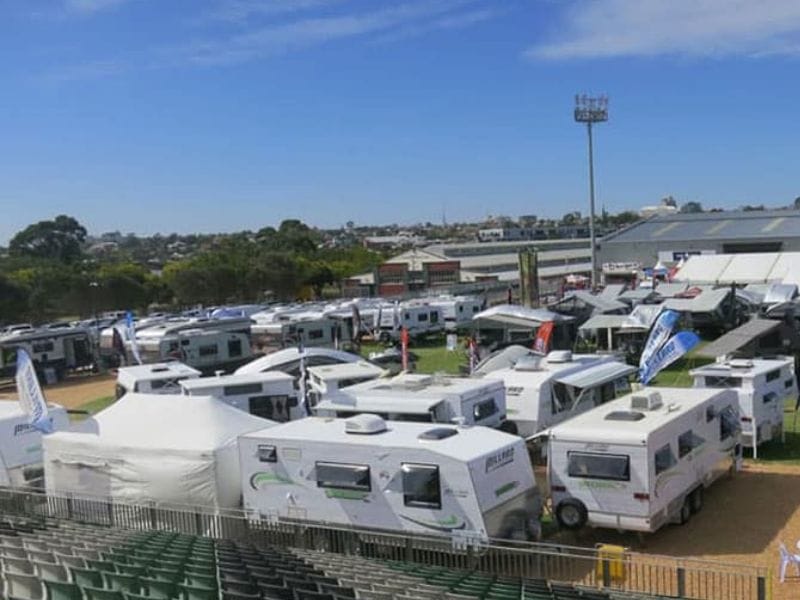
If you plan on doing any off-roading while driving around Australia, it’s essential to choose the right 4WD. There are many different factors to consider, such as fuel efficiency, towing capacity, weights and ground clearance. We’ve written about choosing the right 4wd for your set-up here .
It’s important to ensure your 4WD is fitted with the appropriate tyres. All-terrain tyres are a good option for most off-roading, but if you plan on doing serious mud driving, you’ll need mud tyres.
Weight is one of the most important things to remember when choosing your vehicle. You need to know your 4WD the towing capacity and the payload (the weight of everything inside the vehicle, including passengers and gear). If you’re unsure about these numbers, you can usually find them in the owner’s manual or the manufacturer’s website. We’ve written a comprehensive article all about weights and towing here .
If you’re not planning on off-roading, a motorhome will be more than sufficient if you want to stay on the blacktop. However, they are restrictive once you are set up in a caravan park unless you have another form of transport to get around a town once you are parked up. Again, there are a few things to remember about Motorhomes, such as fuel efficiency and storage space.
Remember to factor in the cost of petrol when planning your budget, especially since the price is rising.
Choose Your Direction Of Travel

Without sounding like Captain Obvious, Australia is a huge country, so focusing on one area at a time is important. This will help you make the most of your trip and see everything that interests you.
One of the most asked questions from our friends before we left was, “Where are you heading first?” We didn’t know when our van would be delivered. As I mentioned above we took off in June 2023 and headed north, chasing the sun.
The weather will determine whether you head north, south, east or west because certain regions are only accessible during certain seasons. For instance, the Top End is only habitable between May and October because of the wet season.
Likewise, central Australia is too hot to visit during summer, so winter is the best time. Once you’ve decided on a direction, you can start mapping your route.
Planning What To See And Do
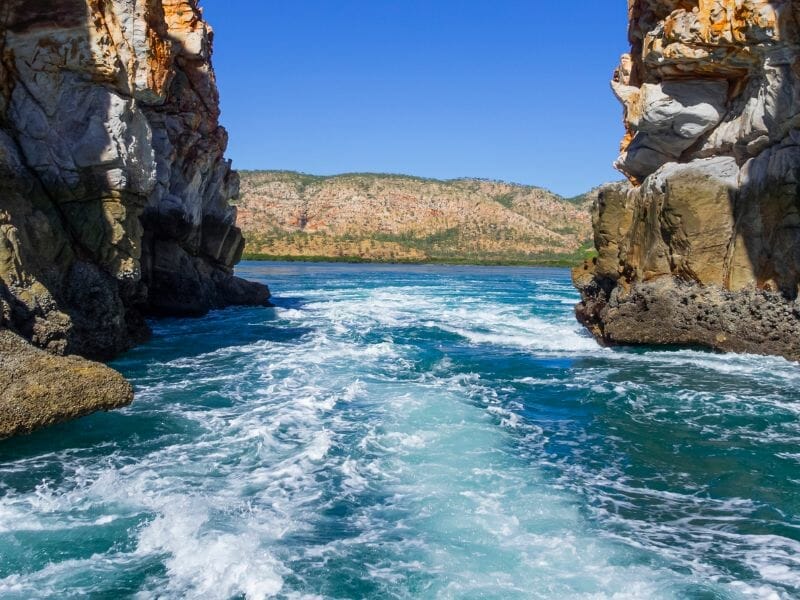
Some things to consider when choosing a state or region:
- The type of scenery you want to see
- The type of experience and activities you want to do
- How long you want to spend in each place
- The time of year
- The weather
- Road conditions
Figure out where you want to go and what you want to see when driving around Australia. This will help make the planning process much easier. If you’re unsure where to start, a few websites can help you plan your trip, such as our website All Around Oz .
Apps such as WikiCamps, Hipcamp, and CamperMate are also a great help when doing the big lap of Australia. Click here for 75 of the best camping apps.
You can buy maps and guidebooks online to help with planning and the big lap of Australia map before you go. You can also pick up maps from petrol stations, camping stores and bookstores. Once you know where you’re going, it’s time to start booking accommodation and activities.
Book your campsites and caravan parks in advance if you’re travelling during peak season. Many popular campgrounds and caravan parks fill up months in advance, so planning at these times is essential.
There are a few different ways to book accommodation, such as through the campsite’s website, over the phone or in person. We usually recommend booking online because it’s the easiest and most convenient option, especially on the road.
When it comes to activities and tours , many can be booked in advance. We’d recommend this in the busy seasons.
It’s always a good idea to have a backup plan in case your first choice is fully booked. For instance, if you plan on staying in a particular campground but it’s full, you can try calling around to see if there are any other options. Or, the easiest of all is to make Wikicamps go to work for you.
You might also consider staying in a national park or free camp. They usually have a first-come, first-served policy, although you’ll have to book in popular spots and peak season.
Book Your Accommodation
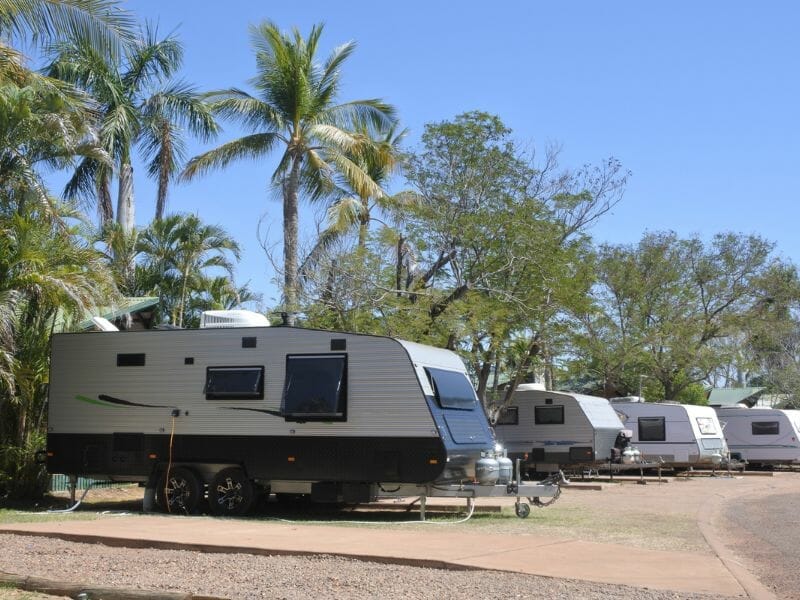
If you plan to stay in caravan parks or campgrounds, booking your accommodation before you head off is a good idea, especially during peak season. This will ensure you have a spot to park your van and avoid stressful situations. Several caravan park memberships you can join can be cost-effective and save you money or allow you additional nights free.
That said, the ever-popular “winging it” or “going with the flow” type of travelling has many benefits, too, as it allows you to be flexible. This is the type of travel we prefer.
If you choose to wing it, we recommend listing the places you want to stay in advance and then calling to see if any spots are available.
You can also try your luck at arriving early in the day and seeing if there are any cancellations. This is more common during mid-week stays.
If you’re struggling to find a spot, there are a few other options you can try, such as:
- Staying in a national park
- Free camping
- Staying in someone’s driveway (There’s a Facebook Group !)
When booking your accommodation, a few options exist, such as through the campsite’s website, over the phone or in person. We usually recommend booking online because it’s the easiest and most convenient option.
If you’re struggling to find a particular campsite or caravan park, you can always try calling around to see if there are any other options.
Plan Your Route
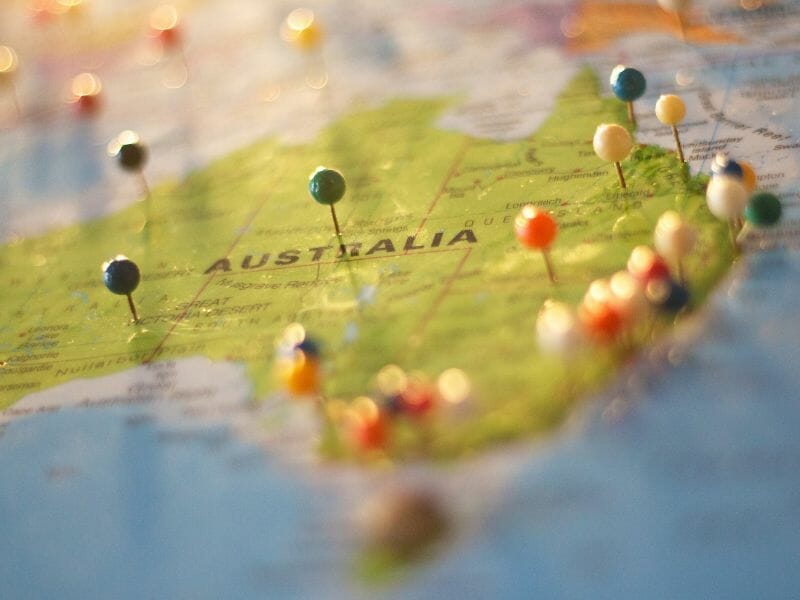
Use a map like this one to plot out a rough idea of where you’d like to go and what attractions you’d like to see along the way. This will help you understand the distance you’ll be travelling and how long it will take you to get from one place to another.
If you’re unsure where to start, a few websites can help you plan your trip, such as our website All Around Oz. Our blog has many helpful tips and advice for planning the perfect trip around Australia. You can also join our Facebook Group, Planning A Lap Of Australia Hints & Tips .
You can also find inspiration in travel books and magazines and talk to friends and family who have been on similar trips. Once you know where you’re going, it’s time to start booking experiences and activities.
Planning Your Experiences And Activities

Once you’ve sorted out your accommodation, it’s time to start planning your activities . You’ll need to do some research to figure out what there is to see and do in each place.
There are a few different ways to find things to do, such as :
- Asking locals for recommendations
- Going to the local information centre
- Searching online
- Reading travel books and blogs
- Checking out tourism websites
If you’re struggling to find activities , we recommend talking to locals or searching our blog or Facebook Group . Locals always have the best recommendations because they know the area well and hopefully share some hidden gems with you. Plus, the All Around Oz Crew is helpful as someone in the Crew has been there previously.
Once you’ve found a few exciting activities, it’s time to start booking. We recommend booking your accommodation and activities to avoid disappointment, especially in peak seasons.
Pack Your Caravan, Motorhome Or 4WD
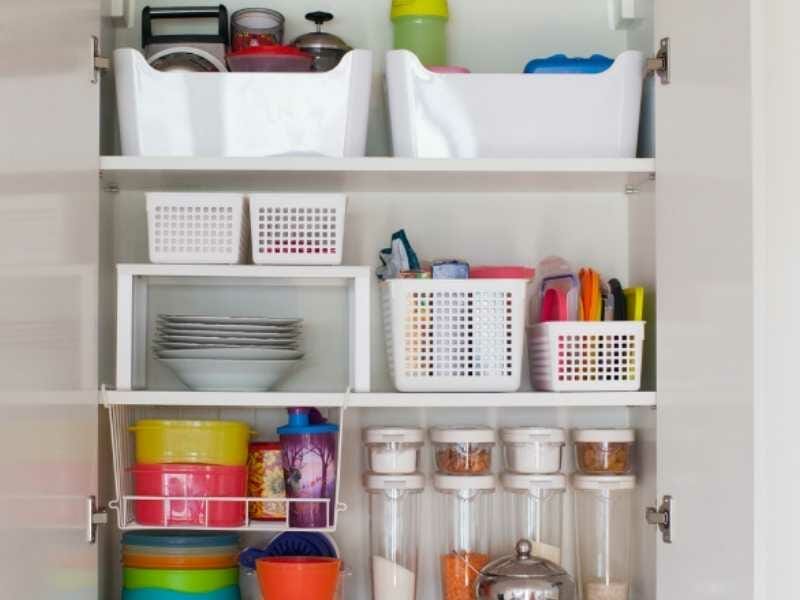
Now that you’ve sorted out your accommodation and activities, it’s time to start packing for your trip!
If you’re travelling in a caravan or motorhome, there are a few things you’ll need to pack, such as:
- Cooking equipment
- Food and drink
- First-aid kit
- Spare parts
If you’re unsure what to pack, we recommend checking out our blog posts on the essential items you’ll need for your caravan, motorhome or camper trailer trip. Caravan storage ideas and things to buy for a new caravan .
Or join our free Facebook group, Planning A Lap of Australia Hints and Tips , for more tips from other experienced Lappers.
Stock Up On Supplies

Before setting off, ensure you have everything you need regarding food, drink, fuel and any other essentials you love. This is especially important if you’re travelling in a remote area with no shops nearby.
We recommend stocking up on food and drink, as well as any other essentials such as toilet paper and insect repellent . You should also ensure enough fuel to last the journey, especially in the outback. If you don’t have a long-range fuel tank, then Jerry Cans are a must.
Check Your Rig
Before starting your journey, it is important to ensure your rig, 4WD gear or vehicle is in good working order. This includes checking the tyre pressure and oil levels and ensuring all the lights work on your rig and caravan or camper trailer.
You should also pack a few essentials in case of emergencies, such as an oil filter, a satellite phone, a first-aid kit, and a map.
We highly recommend buying the top cover for roadside assistance in your state. This will save you thousands of dollars should you break down and need towing. We have RACQ Ultimate Care.
Check Your Insurance Policy
Before your trip, you must ensure you’re adequately insured. This includes things like having the right insurance for your vehicle, and it might be worthwhile looking into general travel insurance, too, depending on your type of travel.
FAQs For Driving Around Australia
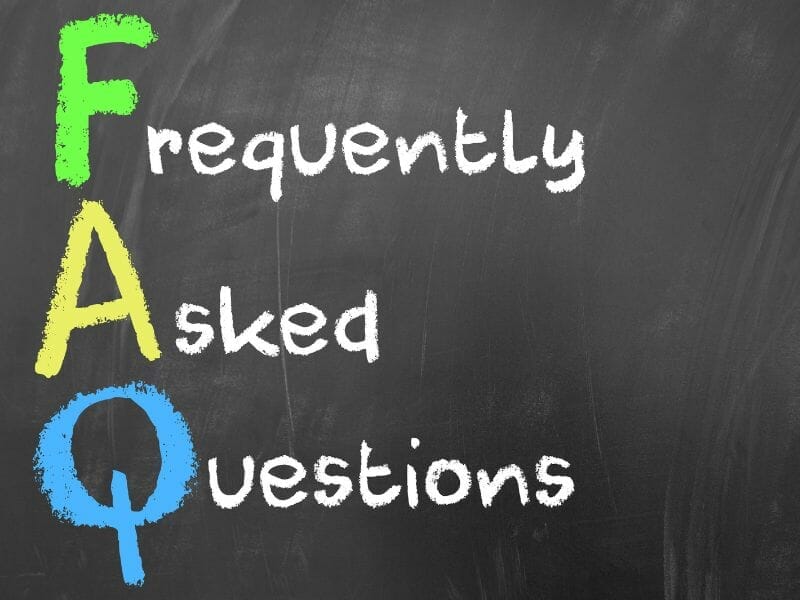
How long does it take to drive around Australia?
This depends on how long you want to spend travelling and exploring. Some people like to take their time and travel slowly, while others prefer a more condensed version. There is no right or wrong answer; it all comes down to personal preference.
What are the must-see places around Australia?
There are so many amazing places to see in Australia; it depends on what you’re interested in. Some popular spots include Uluru, the Kimberleys, Karajini, the Great Barrier Reef, Fraser Island and the 12 Apostles.
What are the best times of the year for driving around Australia?
Again, this depends on personal preference and where you want to go. Generally, the weather is most pleasant in spring and autumn.
The north of Australia is tropical, so most lappers head south during the summer months and head north in the winter months.
How much does it cost to do a lap of Australia?
Again, this depends on your circumstances and how you like to travel. Some contributing factors can be
- The number of experiences you do
- How often you eat out
- How fast or slow you travel
- How large or small your setup is
- How much fuel is at the time
- The weather, i.e. headwinds, etc
- Accommodation costs – caravan parks vs free camping
Should I rent my house or sell it when I travel around Australia?
This is a tough answer as it varies from person to person. Some people feel more comfortable renting out their house, while others prefer to sell up and hit the road full-time. Doing what feels right for you and what will work best in your situation is essential.
There are benefits and drawbacks to renting and selling, so it’s worth researching and speaking to others who have made the same decision to understand better what might work best for you.
Sometimes, your plan doesn’t always work out, either. We planned to sell our apartment on the Gold Coast. However, we couldn’t sell it for the price we wanted. We’ve hung onto it, and now it is in the hands of an Airbnb management company, BNBHub, on the Gold Coast. After the mortgage and expenses are paid, some money might be left over for a tank of petrol!
What do I do with my second car when I travel around Australia?
If you plan on completing a lap of Australia in your caravan or motorhome, you must decide what to do with your second car. You can sell it, store it, or leave it with friends or family.
Selling your car can be a great way to free up extra cash for your trip. However, you’ll need to ensure you have enough money to cover any unexpected repairs or maintenance required while away.
Storing your car is another option, but you must ensure the facility is secure and insured. You will also need to factor in the cost of storage when budgeting for your trip.
Leaving your car with friends or family is a great way to save on storage and maintenance costs. However, you’ll need to ensure they are comfortable taking responsibility for your car while you’re away.
You could also consider hiring it out on Uber Carshare . However, you would have to have someone take care of the car and the bookings for you. We used Uber Carshare for our second car and were surprised by how well it worked. That was before it was written off by a drunk driver when it was parked in a street…but that’s a story for another time.
Ultimately, deciding what to do with your second car depends on personal preference and what will work best for you and your situation.
What is the best caravan insurance?
There is no one-size-fits-all answer to this question, as the best caravan insurance will vary depending on your individual needs and circumstances. However, some things you may want to consider when shopping for caravan insurance include:
- The type of cover you need
- The level of excess you’re comfortable with
- Whether you need to insure your contents
- The geographic areas you’ll be travelling to
- How often you’ll be using your caravan
- The value of your caravan
When finding the best caravan insurance, it’s important to compare various policies from different providers to ensure you’re getting the right coverage at the best price.
Do I Need A Satellite Phone For The Big Lap?
A satellite phone can be a valuable addition to your trip, particularly if you plan on travelling to remote areas without a mobile signal. However, they can be expensive to purchase and maintain, so you’ll need to weigh the costs and benefits to decide if one is right for you.
Some things you may want to consider when deciding whether to take a sat phone include:
- How often you’ll be using it
- The areas you’ll be travelling to
- Whether you have another way to contact emergency services
- The cost of purchasing and maintaining the phone
If you decide not to take a satellite phone, make sure you have a backup plan in case of an emergency. This could include carrying a PLB (personal locator beacon) or subscribing to a satellite tracking service.
We have Starlink, which can be used throughout Australia. Starlink will connect you to the internet and also allows you to use Wi-Fi calling—making a phone call over the internet.
Is It Worth Getting Roadside Assistance?
Yes, don’t leave home without it!
Roadside assistance can be a useful addition to your trip, particularly if you plan to travel to remote areas. However, it’s important to compare the costs of different providers to ensure you’re getting value for your money.
There are some great stories about having roadside assistance and having everything covered, from picking up the car (and caravan) from very remote areas to flying the people home and/or helping with accommodation costs.
Our advice is to take out the highest level of cover. For a few hundred dollars, it will be worth it if you need it. Like any insurance, it’s always good, but let’s hope you never have to use it! It’s good peace of mind.
How Do I Find Work While Doing The Big Lap Of Australia?
One of the great things about doing the Big Lap is that it allows you to work as you travel. This can be a great way to help fund your trip and see more of Australia simultaneously.
There are several ways to find work while travelling, including:
- Asking around at caravan parks, pubs and tourist attractions
- Checking out job boards at local community centres
- Looking online for work-from-home opportunities
- Ask a local
For more information, read our blog post about How to find work when travelling Australia .
What Are The Top Tips For Travelling Australia By Caravan?
Some top tips for travelling around Australia in a caravan, motorhome or camper would include:
- Take your time and enjoy the journey
- Do your research before you go
- Make sure your vehicle is in good condition and properly serviced
- Check your weights when your rig and caravan are fully loaded
- Be prepared for all weather conditions
- Carry plenty of supplies with you but watch your weights!
- Be aware of road conditions and hazards
- Plan your routes and make sure you allow plenty of time
- Make use of free camps and overnight stops
- Enjoy the company of other lappers and travellers
What Should I Do If My Rig Breaks Down?
If you break down while you’re on the road, the best thing to do is to stay with your vehicle. This will make it easier for emergency services or roadside assistance to find you. If you have a satellite phone or two-way radio, you can use these to call for help. In the meantime, stay calm and wait for help to arrive.
What Do I Do With My Mail When I’m Doing The Big Lap?
There are a few options for handling your mail when you’re travelling around Australia. You can redirect it to a friend or family member’s house, use a PO Box service, or put your mail on hold with Australia Post.
Change all bills by post and any other important mail to email. This will make life much easier.
Sign up (if you haven’t already done so) for an AusPost account. You can then use this to pick up mail or parcels while driving around Australia.
What Do I Do With My Pets When Travelling Around Australia?
If you plan to take your pets on your trip, we recommend getting them microchipped and registered with the local council. You should also make sure they’re up to date with their vaccinations. Read our travelling with dogs post here .
If you’re not planning on taking your pets, we recommend finding a reputable pet sitter or family member who can look after your much-loved fur kid.
What Is The Best Travel Entertainment For Kids On A Road Trip?
There are several ways to keep kids entertained while you’re travelling around Australia. Some ideas include:
- Books and magazines
- Puzzles and games
- Colouring in books
- Spotting games
- Making up stories
- Listening to audiobooks
- Singing songs
Click here to explore lots of ideas for your little adventurer.
Final Thoughts
There you have it – our guide to planning the perfect trip around Australia in a caravan, motorhome or camper. We hope you found this helpful and inspired you to start planning your trip.
If you have questions or need more help, we recommend joining our free Facebook group, Planning A Lap of Australia Hints and Tips. This is an excellent resource for getting advice from other experienced Lappers.
And that’s it – you’re ready to hit the road! With some planning and preparation, you’ll have a fantastic time travelling around Australia. So what are you waiting for? Start planning your trip today!
Do you have any other tips or advice for travelling around Australia in a caravan, motorhome or camper trailer? Please share them with us in the comments below!
Happy travels!
Planning A Lap of Australia?

You May Also Like:
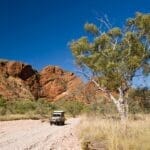
6 thoughts on “Driving Around Australia: Planning The Perfect Big Lap Of Australia”
Wow this is so concise. I was worried about taking my poms but you covered that. I want to freecamp but worried about my safety which I feel more secure with now after reading your your email. Tips and hints and planning never thought of that. 3 kids of solo parenting, running a goat stud i just want to break free for a couple of years. Thankyou for such comprehensive information and sharing
You are very welcome Lenny!
Thanks. I am planning but didn’t know where to find free camping places. This is really helpful. Thankyou I need to know about personal security. Camera security for the car. Anti bug window things Fans both battery and solar. I ll be living in my car A good laptop. Can u help me with any of that please
Hi Kat I’m glad you found the post helpful. Our first port of call for anything to do with camping or caravanning is Outback Equipment you can find them here https://bit.ly/outbackequipment
What a great article, sometimes it states the obvious and other points I didn’t consider so great ref document. Thank you
Thanks for your feedback Jo, glad you found the post useful 🙂
Leave a comment Cancel reply
subscribe to our newsletter
This site uses Akismet to reduce spam. Learn how your comment data is processed .
Facebook Community
Privacy Policy
Disclosure Policy
Work With Us
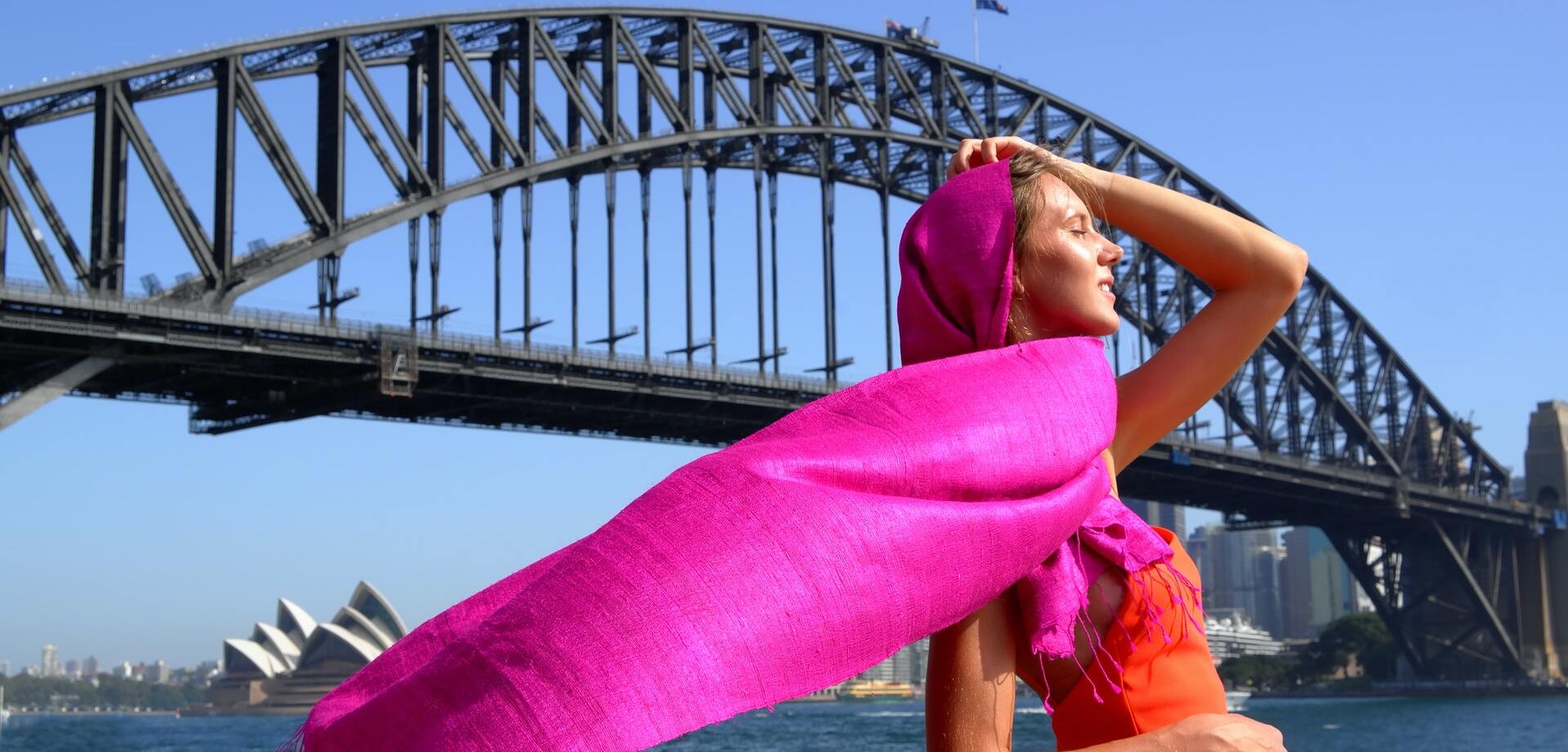
Kangaroo Island
South australia.

Western Australia

Margaret River
Accommodation.
Compare & book your home away from home
Find great deals & book your flights
Airport transfers
Getting to & from airports has never been easier
Book your hire car so you're ready to roll
How can we help
Planning a holiday can be exciting and overwhelming all at once. So I'm here to research activities and things to do on your next holiday. Get your free personal travel itinerary and start booking activities that suit your travel style.
Australia Trip Planner will create an itinerary with just the right amount of choices so you don't feel overwhelmed. We're also 100% Australian, and we have plenty of local tips and travel deals to share with you.
Choose Your Destination
Choose your inspiration.
Stop dreaming & start planning your next getaway. Here's a few ideas to get you started.

taste South Australia

QLD beaches & islands

hiking in Tasmania

Aboriginal culture in the NT

WA & the coral coast

Sydney shines in May & June during VIVID

Blue Mountains 7-day itinerary

9 of the best things to do in Melbourne

Destination spotlight: Tweed Coast

Top 10 must-do activities in Brisbane

10 of the best foodie experiences this summer

10 of the best hiking adventures this summer

10 of the best beachy things this summer

10 of the best cultural things this summer
Special deals
Holidays are great but snaring a bargain is even sweeter. See what's on offer

Great savings & great fun!
A 7-day pass to the Gold Coast's Movie World, Sea World & Wet'n'Wild & Paradise Country PLUS jet boat ride PLUS free photo!

Visit 3 top Sydney attractions & save 50%. Attractions include WILDLIFE Sydney, SEA LIFE Sydney Aquarium, Sydney Tower Eye & Madame Tussauds.

Great Barrier Reef
All day cruise combo.
Swim, snorkel & play on an all-day cruise to the Great Barrier Reef & Green Island. Includes lunch, snorkel equipment, & underwater observatory to see marine life.
To Our Newsletter
Get our great travel news, deals and tips delivered straight to your inbox
Search Area
Be the first know the, leisure traveler.
Lorem ipsum dolor sit amet, consectetur adipisicing elit, sed do eiusmod tempor incididunt ut labore et dolore magna aliqua. ullamco laboris nisi ut aliquip tempor incididunt ut labore et dolore magna aliqua. ex ea commodo consequat
Planning a trip to Australia: what you need to know
May 1, 2012 • 4 min read
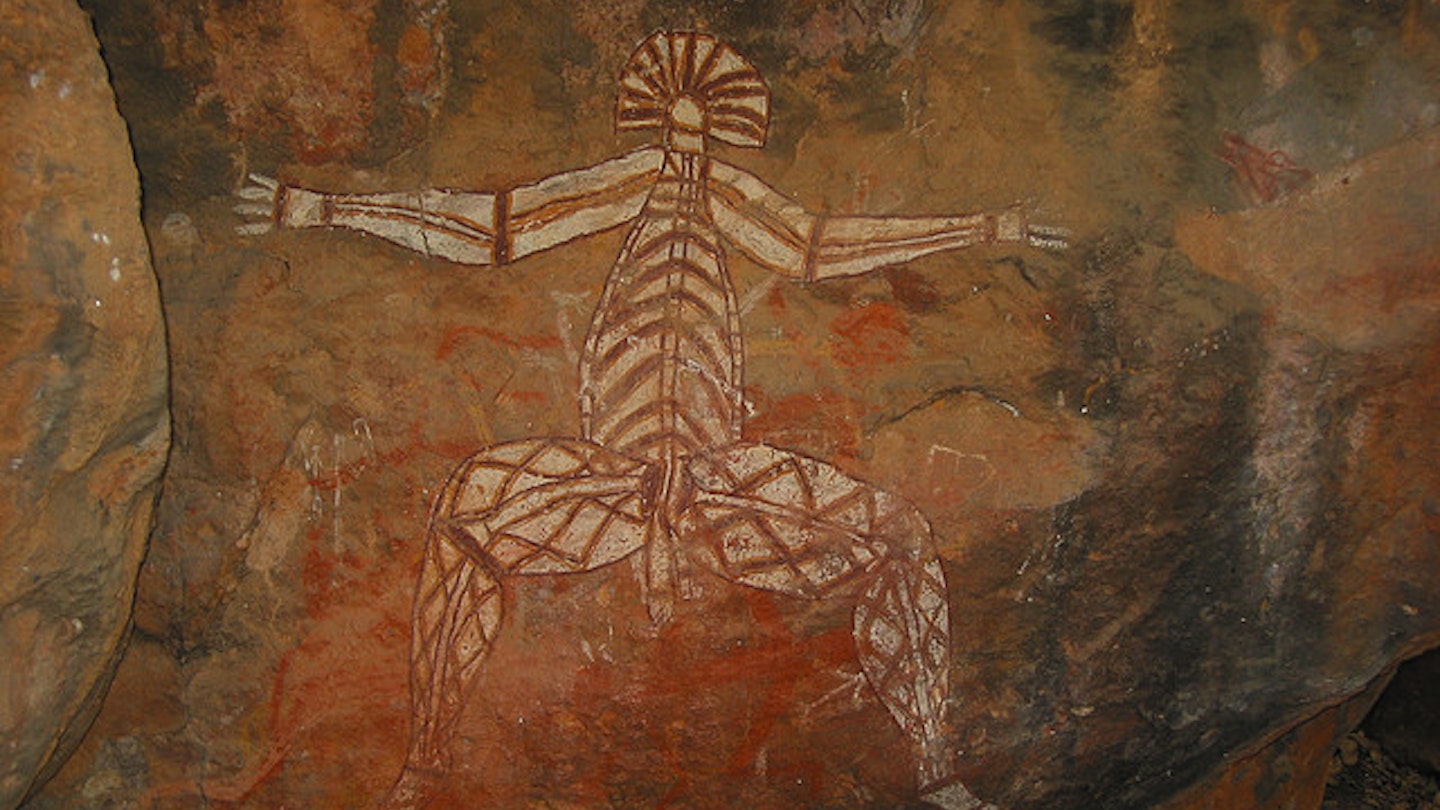
Book your flights: 2012 is shaping up as a bumper year to visit Australia . A slew of music festivals ( Big Day Out , Splendour in the Grass , Byron Bay Bluesfest ) will feature arena-filling acts like Kanye West, Soundgarden, Steve Earle and Kasabian. And don't miss the touring Picasso exhibition at Sydney's esteemed Art Gallery of New South Wales (until March).
On the sporting front, time your Melbourne visit with the Australian Formula 1 Grand Prix (March) or the Australian Open tennis (January). In the cricket, arch-rivals India are touring (February), and will Australia's great cycle race, the Tour Down Under (January), see Australian Tour de France champ Cadel Evans pumping the pedals?
Later in the year, Sydney gets hot-under-the-collar at Australian Fashion Week (May), and celebrates its photogenic harbour with the start of the epic Sydney to Hobart Yacht Race (December): stake out a patch of grass near the water and watch the harbour bloom with sails. Further north in November, the Gold Coast hosts muscle-bound surf-lifesaving carnivals, while down south Melbourne stages the legendary Melbourne Cup horse race: put a few dollars on the favourite and sip some champagne in the shade.
But before you go, you'll need a little know-how to get the most from your trip. Australia is vast, with cities from the northern tropics to the central deserts and chilly southern shores. Seasons play a big part in deciding where you'll go, and when!
Most travellers arrive in the summer (December to February) when the big southeastern hubs of Sydney , Melbourne and Brisbane are sunny and warm. Beaches swarm, outside cafés tables overflow, long balmy evenings drift into party nights... Of course, when everyone else is here too, you'll be facing peak-season accommodation prices, crammed public transport and queues at the big-ticket attractions. The shoulder-season months - October/November and March/April - are a better bet.
Also, summer down south means hot 'n' humid up north: the 'wet season' is uncomfortable in Australia's tropical Top End. Instead, plan your visit here for winter - June to August, the 'dry season' - when temperatures and humidity are bearable. Winter is also the best time to escape the cold grey south and visit the central deserts.
Where to go
If you're an arty urbanite who lives for good coffee, pubs, galleries, live music and bookshops, head straight for Melbourne. Sydney maintains its global rep with awesome surf beaches, world-class restaurants, hip shops, hot clubs and cool bars. Brisbane is a dynamic city on the rise; Perth is the world's most isolated city of its size (1.69 million), and exudes frontier independence.

Image by Paul Mannix
Nature buffs and bushwalkers should hit Australia's national parks: Kakadu in the Northern Territory is a tropical wonderland full of crocodiles, ancient Aboriginal rock art and raucous birdlife. Access it from the base city of Darwin, one of Lonely Planet's top 10 cities of 2012. Uluru-Kata Tjuta in Central Australia is hauntingly beautiful, with a profound timelessness (more than just big red rocks). It's also a great place to experience Indigenous Australian culture. Snorkelling over incandescent coral and fish on Queensland 's Great Barrier Reef is mesmerising, while Tasmania 's sub-alpine Cradle Mountain-Lake St Clair National Park hosts the Overland Track, one of the planet's most celebrated multi-day hikes.
If wine floats your boat, South Australia is for you. Wobble your way through decadent wine regions: the Barossa Valley and McLaren Vale (Shiraz), Clare Valley (Riesling), Coonawarra (Cabernet Sauvignon) and Adelaide Hills (Cabernet Sauvignon and Pinot Noir).
Getting around
Unlike the USA or Europe, Australia doesn't have many big inland towns (...no Paris or Denver here, just Alice Springs). So a driving holiday can involve huge distances between pit-stops. A better idea for a quick city-hopping visit is to fly. Australia's domestic airlines are affordable and reliable, and allow you to carbon-offset flights if you're feeling guilty.
But if you're not in a hurry, the Great Australian Road Trip awaits! Explore the beaches and surf towns along the east coast; meander along the photogenic Great Ocean Road near Melbourne; or detour to the gorgeous island state of Tasmania or southwestern Western Australia. Ambitious? Tackle a 'lap of the map', a grand circuit that'll consume as many months as you can spare.
Further reading
- Australia on the cheap: what you need to know
- Camping on Australia's Great Barrier Reef
- Caffeination - Australia's coffee culture
- Insider Sydney
- Darwin to Broome - Australia's wildest road trip
- Gourmet Tasmania

Explore related stories

May 29, 2024 • 8 min read
Lace your boots for the best day hikes and short walks on Australia’s Great Ocean Walk.

May 21, 2024 • 5 min read

May 21, 2024 • 11 min read

May 19, 2024 • 6 min read

May 17, 2024 • 14 min read
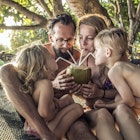
May 8, 2024 • 5 min read
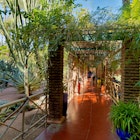
Apr 24, 2024 • 11 min read
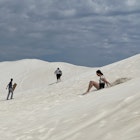
Apr 4, 2024 • 5 min read

Mar 30, 2024 • 4 min read

Mar 26, 2024 • 8 min read
Man arrested for running naked through aircraft, knocking over flight attendant

A Virgin Australia flight on Monday night was forced to turn around after a passenger ran naked through the cabin and pushed over a flight attendant, according to the Australian Federal Police (AFP).
VA696 departed Perth as scheduled and was about an hour en route to Melbourne when the incident occurred, causing the pilots to make a U-turn and return to Perth, according to FlightAware .
“Appropriate steps were taken by the crew, in line with protocol” to deal with the “disruptive passenger,” a Virgin Australia spokesperson told USA TODAY in an email statement.
AFP officers were called to meet the passenger when the plane landed safely back at Perth.
“AFP officers arrested a man after he allegedly ran naked through the aircraft mid-flight and knocked a crew member to the floor,” an AFP spokesperson told USA TODAY in an email.
Learn more: Best travel insurance
The passenger is currently being held at a local hospital for assessment. He is expected to appear before Perth Magistrates Court on June 14, although the charges he will face have yet to be finalized, AFP said.
Next to an unruly airline passenger? Here's what to do
One of the passengers onboard the flight told the Guardian Australia , "All of a sudden I hear this running up the aisle and the guy's got no clothes on and he's just charging towards the front of the plane." The passenger also said there was "a lot of yelling and screaming."
“The safety of our guests and crew is our top priority and we sincerely apologize to guests impacted,” the airline said.
The aircraft continued to Melbourne and landed 28 minutes late.
Last month, an unruly passenger who caused a United Airlines flight to be diverted after threatening to "mess up the plane" during a loud argument with his girlfriend was charged $20,638 in restitution fees.
Kathleen Wong is a travel reporter for USA TODAY based in Hawaii. You can reach her at [email protected] .

Australia Recommends 2024

Come and Say G'day

G'day, the short film

Discover your Australia

Travel videos

Deals and offers

Australian Capital Territory

New South Wales

Northern Territory

South Australia

Western Australia

External Territories

The Whitsundays

Mornington Peninsula

Port Douglas

Ningaloo Reef

Airlie Beach

Kangaroo Island

Rottnest Island

Hamilton Island

Lord Howe Island

Tiwi Islands

Phillip Island

Bruny Island

Margaret River

Barossa Valley

The Grampians

Hunter Valley

Yarra Valley

McLaren Vale

Glass House Mountains

Alice Springs

Uluru and Kata Tjuta

The Kimberley

Flinders Ranges

Kakadu National Park

Eyre Peninsula

Karijini National Park

Great Barrier Reef

Blue Mountains

Daintree Rainforest

Great Ocean Road

Purnululu National Park

Cradle Mountain-Lake St Clair National Park

Litchfield National Park

Aboriginal experiences

Arts and culture

Festivals and events

Food and drink

Adventure and sports

Walks and hikes

Road trips and drives

Beaches and islands

Nature and national parks

Eco-friendly travel

Health and wellness

Family travel

Family destinations

Family road trips

Backpacking

Work and holiday

Beginner's guide

Accessible travel

Planning tips

Trip planner

Australian budget guide

Itinerary planner

Find a travel agent

Find accommodation

Find transport

Visitor information centres
Deals and travel packages

Visa and entry requirements FAQ

Customs and biosecurity

Working Holiday Maker visas

Facts about Australia

Experiences that will make you feel like an Aussie

People and culture

Health and safety FAQ

Cities, states & territories

Iconic places and attractions

When is the best time to visit Australia?

Seasonal travel

Events and festivals

School holidays

Public holidays
How to get to Australia's most iconic cities

How long do I need for my trip to Australia?

How to travel around Australia

Guide to driving in Australia

How to hire a car or campervan

How to plan a family road trip

How to plan an outback road trip

Thala Beach Nature Reserve, Oak Beach, Queensland © Tourism and Events Queensland / Sean Scott
Trips and itineraries
Discover the journey of a lifetime in Australia.
Link Copied!
Search Itineraries
Sorry, there are no results to display. try searching with different criteria to view more results., ready to book.
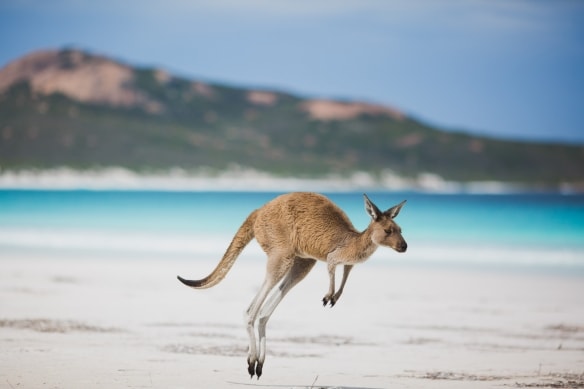
We use cookies on this site to enhance your user experience. Find out more . By clicking any link on this page you are giving your consent for us to set cookies.
Acknowledgement of Country

We acknowledge the Traditional Aboriginal and Torres Strait Islander Owners of the land, sea and waters of the Australian continent, and recognise their custodianship of culture and Country for over 60,000 years.
- International (English)
- New Zealand (English)
- Canada (English)
- United Kingdom (English)
- India (English)
- Malaysia (English)
- Singapore (English)
- Indonesia (Bahasa Indonesia)
- Deutschland (Deutsch)
- France (Français)
- Italia (Italiano)
- 中国大陆 (简体中文)
*Product Disclaimer: Tourism Australia is not the owner, operator, advertiser or promoter of the listed products and services. Information on listed products and services, including Covid-safe accreditations, are provided by the third-party operator on their website or as published on Australian Tourism Data Warehouse where applicable. Rates are indicative based on the minimum and maximum available prices of products and services. Please visit the operator’s website for further information. All prices quoted are in Australian dollars (AUD). Tourism Australia makes no representations whatsoever about any other websites which you may access through its websites such as australia.com. Some websites which are linked to the Tourism Australia website are independent from Tourism Australia and are not under the control of Tourism Australia. Tourism Australia does not endorse or accept any responsibility for the use of websites which are owned or operated by third parties and makes no representation or warranty in relation to the standard, class or fitness for purpose of any services, nor does it endorse or in any respect warrant any products or services by virtue of any information, material or content linked from or to this site.

IMAGES
VIDEO
COMMENTS
Find accommodation. From the outback to the coast, there's nowhere quite like Australia. Start planning your trip Down Under with our first-timer's guide to travelling Australia.
*Product Disclaimer: Tourism Australia is not the owner, operator, advertiser or promoter of the listed products and services.Information on listed products and services, including Covid-safe accreditations, are provided by the third-party operator on their website or as published on Australian Tourism Data Warehouse where applicable.
Despite these challenges, planning an epic trip to Australia is definitely possible. You just have to be smart about your Australia itinerary, sticking to one or two major areas and picking travel routes that are logical. For example, you won't be able to fit Sydney, the Great Barrier Reef, Melbourne, Uluru, Tasmania, and beaches and national ...
How to Plan a Trip to Australia - Our Experience & Tips. We were lucky to have had an opportunity to travel to Australia twice: once as a couple, and ten years later, with our three kids of 3, 3, and 5 years old. Our first trip to Australia and New Zealand ten years ago was also our first road trip, and there were lots of things we didn't ...
Once your dreamy, picture-perfect list is complete, let the planning begin. 3. Pick a time of year. @Australia. 28 Jun. The next key piece of the planning puzzle is to figure out the best time of year to take your trip. You'll need to take seasons, school holidays and events into consideration, all of which can impact the cost, availability and ...
More Australia Travel Itinerary Ideas: If you're planning a trip around Australia and you're looking for some thrills, check out our article on the Top Outdoor Adventures in Australia, from snorkeling with whale sharks to four-wheel driving on the golden beaches of Fraser Island. Anglers will find some fantastic fishing.
The Ultimate Two-Week Itinerary in Australia. Days 1-2: Explore the Vibrant City of Sydney. Where to Stay in Sydney. Day 3: Day Trip to the Blue Mountains. Day 4: Wander Around the Colonial City of Melbourne. Where to Stay in Melbourne: Day 5: Day Trip to Phillip Island. Day 6: Day Trip to the Great Ocean Road.
Ultimate AUSTRALIA Travel Guide. Australia is the World's largest island and the smallest, flattest continent on Earth. It is located in the southern hemisphere just west of the international dateline. Our Australia Travel Guide is here to help take the guesswork out of planning your itinerary. Officially part of Oceania, Australia is a ...
Step 1: Choosing the Right Time to Visit. When planning a trip to Australia, it is crucial to consider the best time to visit based on your preferences and the activities you wish to engage in. Australia is located in the Southern Hemisphere, which means its seasons are the opposite of those in the Northern Hemisphere.
When planning your travel to Australia keep in mind the seasonal temperature variations and activities you plan to do. General Items Swimsuit x3 Beach towel Flip flops Hiking boots Waterproof jacket Hiking trousers Thick socks x2 Running leggings or shorts x2 Trainers Jeans x2 Shorts x3 T-shirts x5 Casual shoes
How To Plan A Trip To Australia - First Things First. When looking at how to plan a trip to Australia there are a few things to consider first. The planning and trip guidance are a must to have a safe and easy travel experience. To explore the vibrant capital city, Sydney, you need to gather up all practical travel information as much as you can.
You can follow this itinerary and start with an exploration of Sydney as we did, or you can start right from Melbourne and follow this itinerary from day number 6. You can also drive vice-versa from Darwin. Enjoy your trip! DAY 1-4: SYDNEY. We spent four perfect days in lively Sydney.
Plan on the go with our free travel app. With Wanderlog's mobile travel planner on Android and iOS, access and edit your trips wherever you go — even while offline. Keep your places to visit, flight/hotel reservations, and day-by-day itineraries for your trip to Australia in our web and mobile app vacation planner.
Here you can find our detailed 6- day itinerary for Australia's Red Centre, from Alice Springs to Uluru. Day 5: Flight Sydney - Alice Springs. Stay in Alice Springs for 1 night. Day 6: Alice Springs - West MacDonnell Ranges - Glen Helen. Stay in Glen Helen for 1 night.
Planning a trip to Australia can be an overwhelming experience. Not only because you are going to the other side of the world, but because a cost-effective Australia Trip plan requires time and effort that can get out of your control. Australia is (in) famous for being an expensive destination, and a thoughtful travel plan is key to keep the overall costs within the budget you have for Australia.
Itinerary #1: Epic Australia & New Zealand: Cities, Beaches & Mountains. This itinerary that combines the highlights of Australia's eastern and southern coasts with outdoor adventures and Māori culture in New Zealand is an excellent option for first-time visitors. There's urban exploration in Sydney, hiking in the Blue Mountains, snorkeling the Great Barrier Reef, a hot-air balloon ride and ...
Plan your dream holiday. From ancient rainforests and famous reefs to outback deserts and mountain peaks, there's a whole world of experiences to discover Down Under. Use our trip builder to plan your perfect adventure in just a few taps. Get started. Use our trip planner to find your dream Australian holiday.
Millions of visitors from North America, Europe, Asia, and other parts of the world flock to the land down under in search of their own adventures-whether its for the food, the amazing wildlife ...
Travelers planning a trip to Australia can apply for an e-visa online. All foreigners traveling to Australia must have a visa to enter the country. There are three types available: 1. Visitor visa. Granted for three, six or twelve months to anyone visiting Australia as a tourist. 2. eVisitor
There you have it - our guide to planning the perfect trip around Australia in a caravan, motorhome or camper. We hope you found this helpful and inspired you to start planning your trip. If you have questions or need more help, we recommend joining our free Facebook group, Planning A Lap of Australia Hints and Tips. This is an excellent ...
Australia Trip Planner gives you information on holiday deals to help you plan a great trip. Create a travel itinerary to suit your interests and travel style. We know the local Australian travel market and we continue to research new and interesting tours so you can have your perfect holiday. [email protected]
Planning a trip to Australia: what you need to know. Charles Rawlings-Way. May 1, 2012 • 4 min read. Book your flights: 2012 is shaping up as a bumper year to visit Australia. A slew of music festivals ( Big Day Out, Splendour in the Grass, Byron Bay Bluesfest) will feature arena-filling acts like Kanye West, Soundgarden, Steve Earle and ...
Food & Drink. WhiskeyBeerRecipesCocktails & SpiritsHealthy FoodWine. An Australia vacation is the trip of a lifetime. From city to reef, and wine country to wild outback, these are the best places ...
Editors' Take. We recommend checking out the Travel Medical Basic USA plan if you value having urgent care and emergency room care covered at 100% over coverage for pre-existing conditions ...
If you're a T-Mobile customer on qualifying plan, you can add an International Pass to get more high-speed data and unlimited voice calling in 215+ countries and destinations. 1-Day (512MB) International Pass: 512MB of high-speed data and unlimited calling, to be used up to 24 hours, for $5. 10 day (5GB) International Pass: 5GB of high-speed ...
A Virgin Australia flight on Monday night was forced to turn around after a passenger ran naked through the cabin and pushed over a flight attendant, according to the Australian Federal Police (AFP).
Book your next flight. This is the story of an airline... And it's a good one! Our 75,000+ hero characters are on a mission to do good in the air and on the ground, working to make the world a happier, greener, more inclusive, more fascinating place. Learn more about the story of United — the story of an airline when Good Leads The Way.
Trips and itineraries. Road trip planner. Find local inspiration and start planning your next road trip with our simple interactive journey planner. Explore the best of Australia and find your perfect getaway.
Plan your trip. Find a travel agent. Deals and travel packages. Deals and travel packages. We use cookies on this site to enhance your user experience. ... *Product Disclaimer: Tourism Australia is not the owner, operator, advertiser or promoter of the listed products and services. Information on listed products and services, including Covid ...